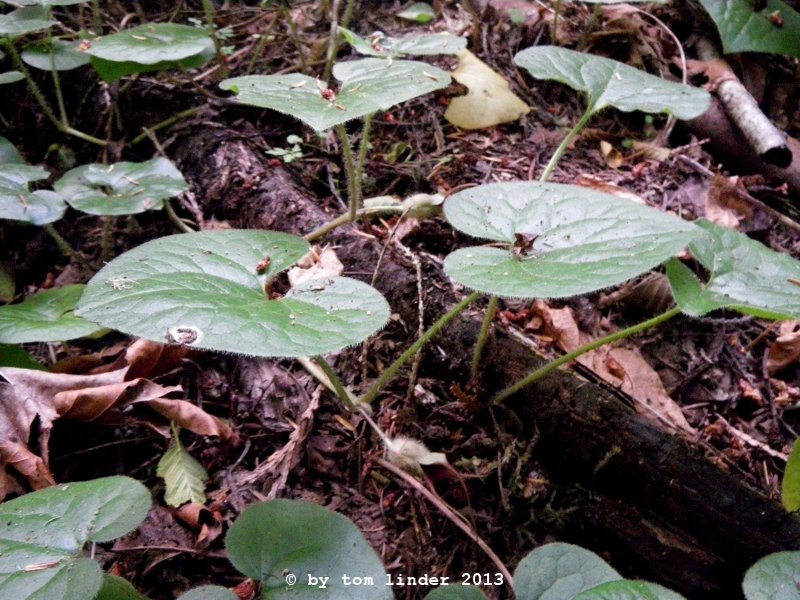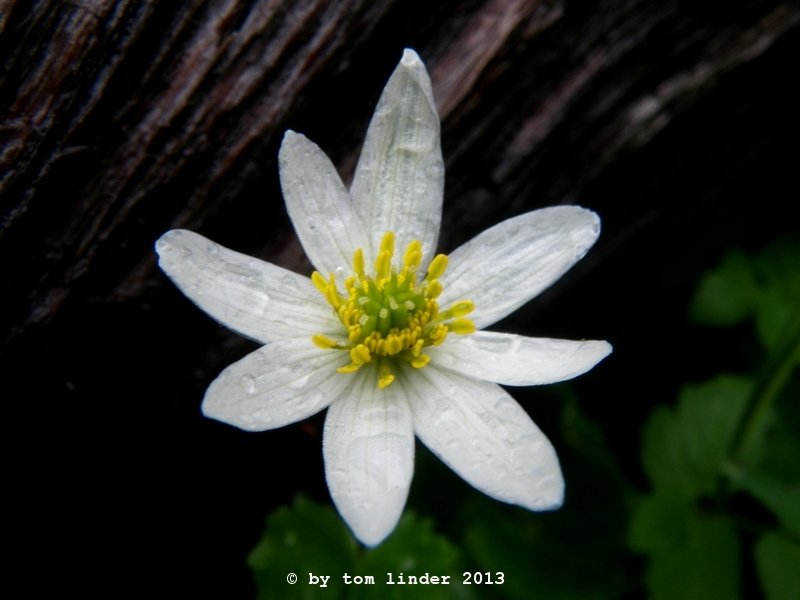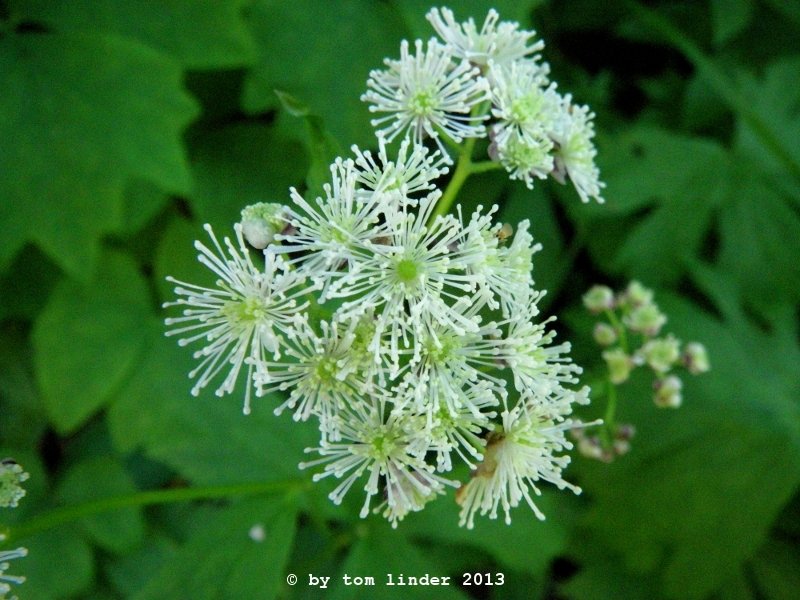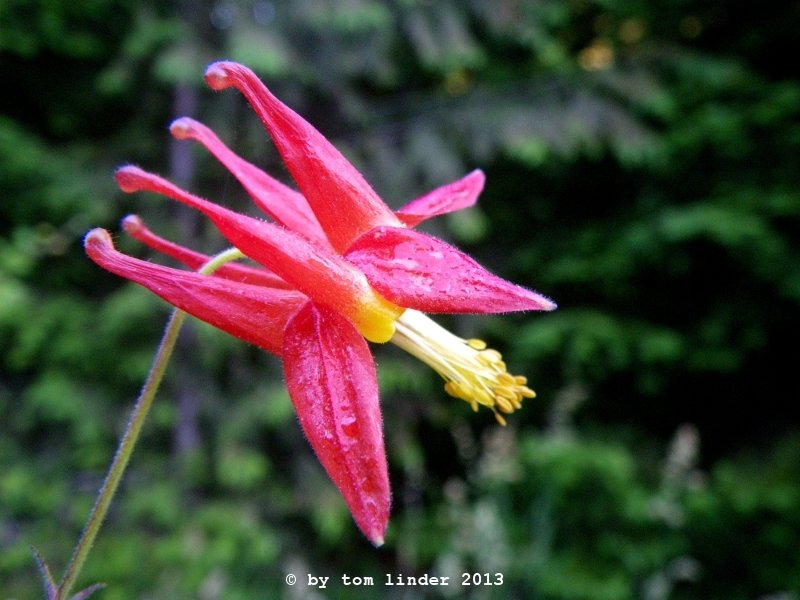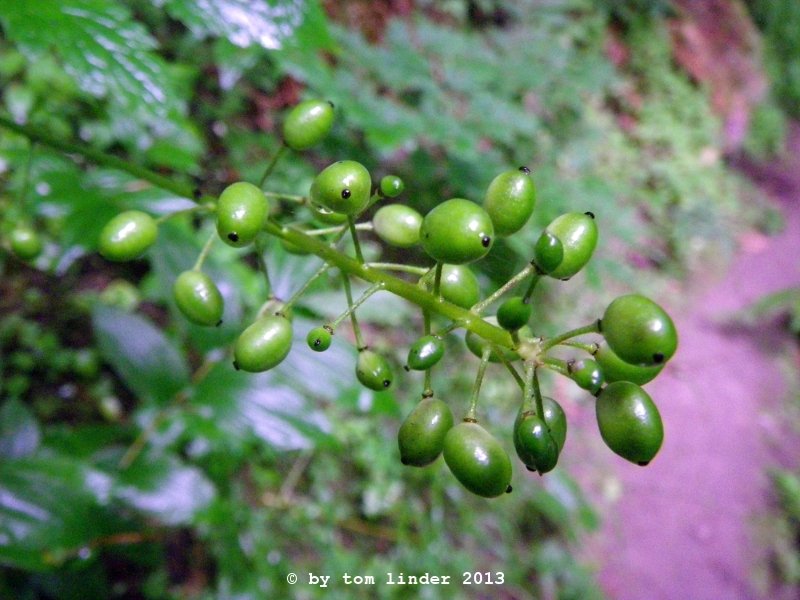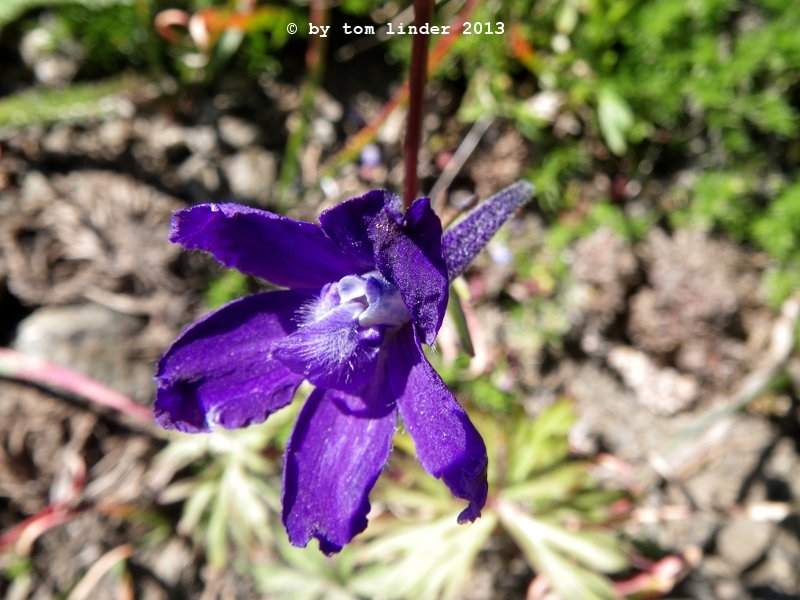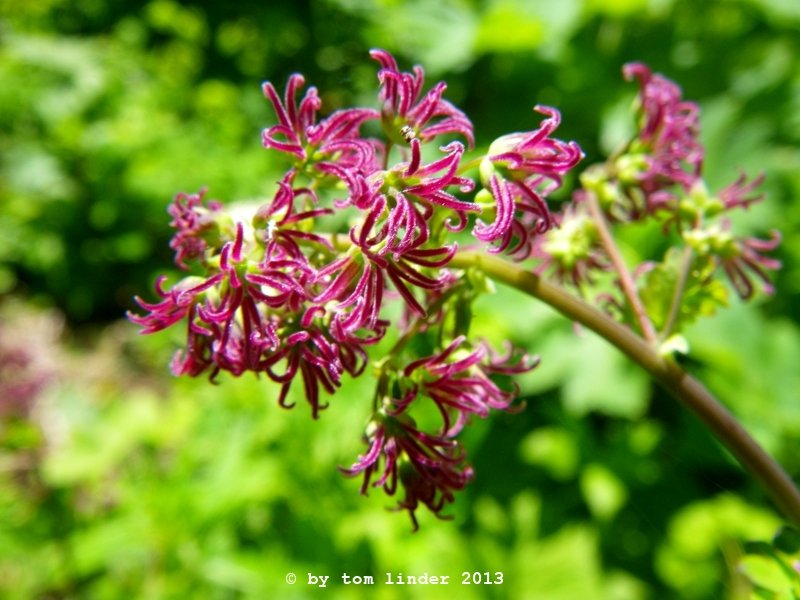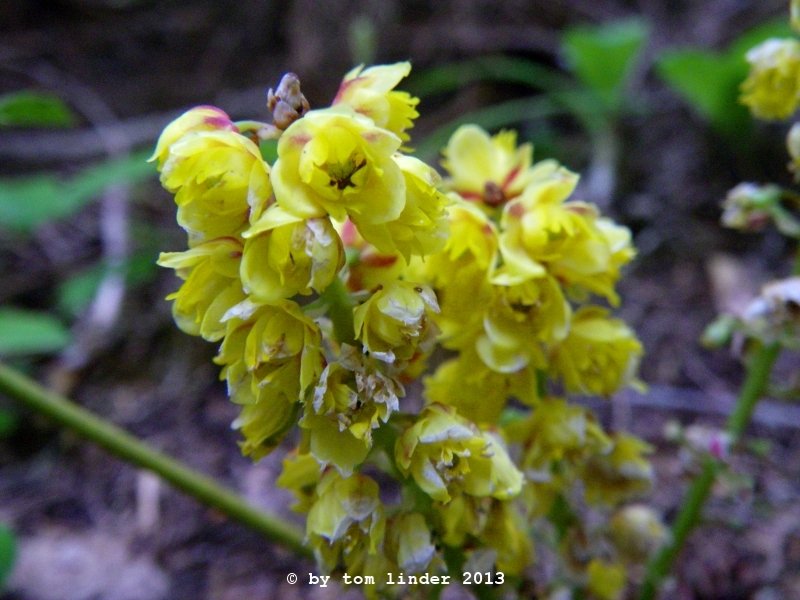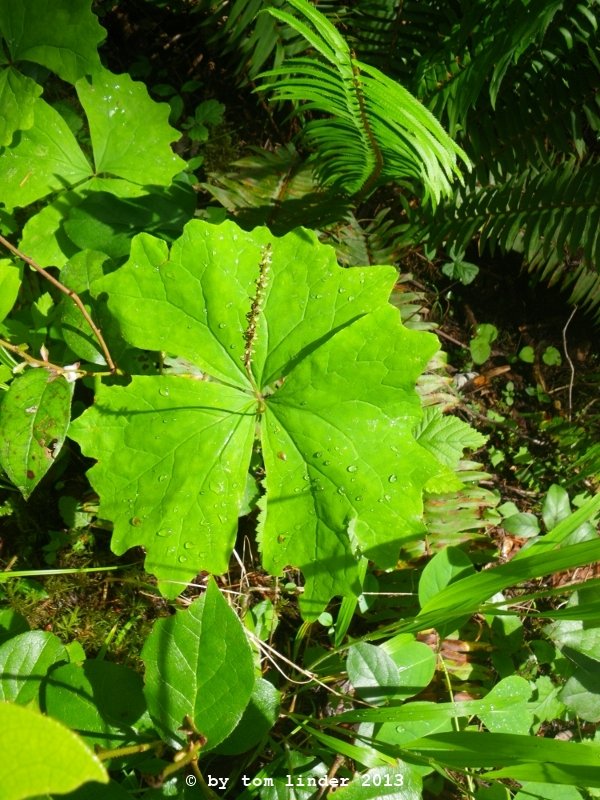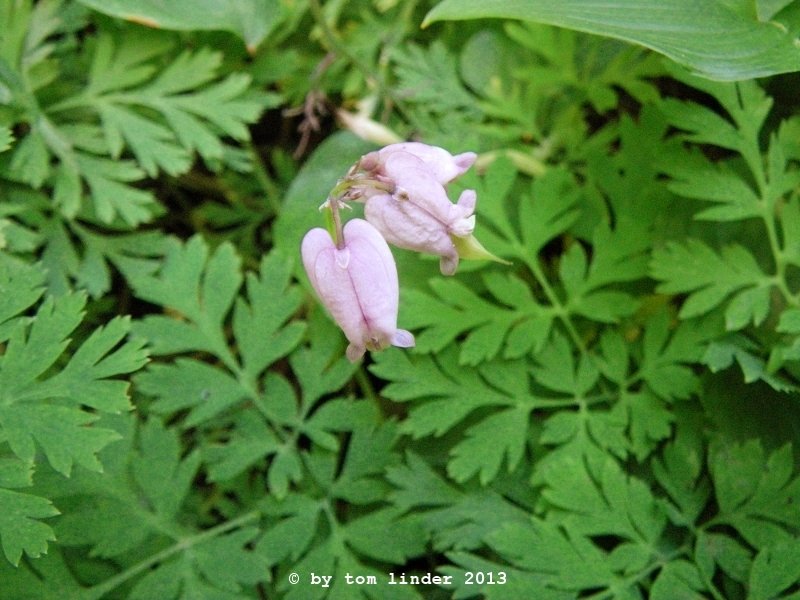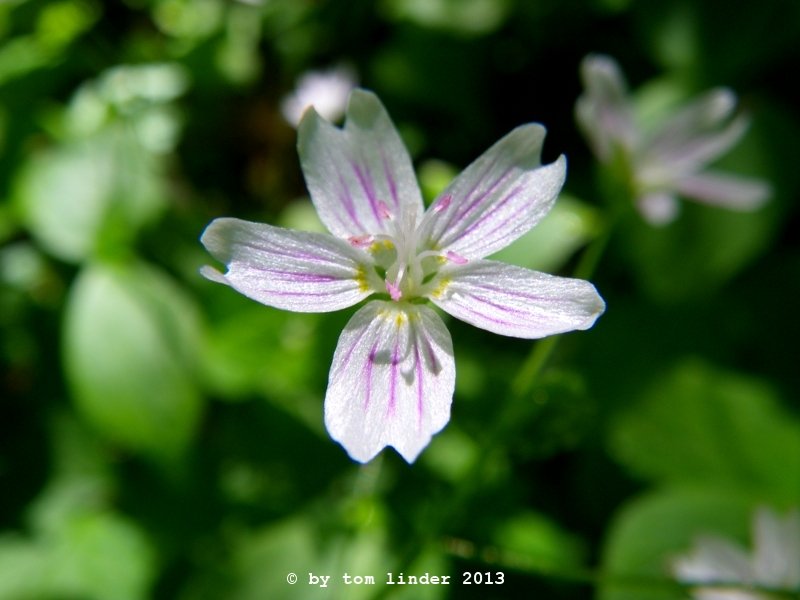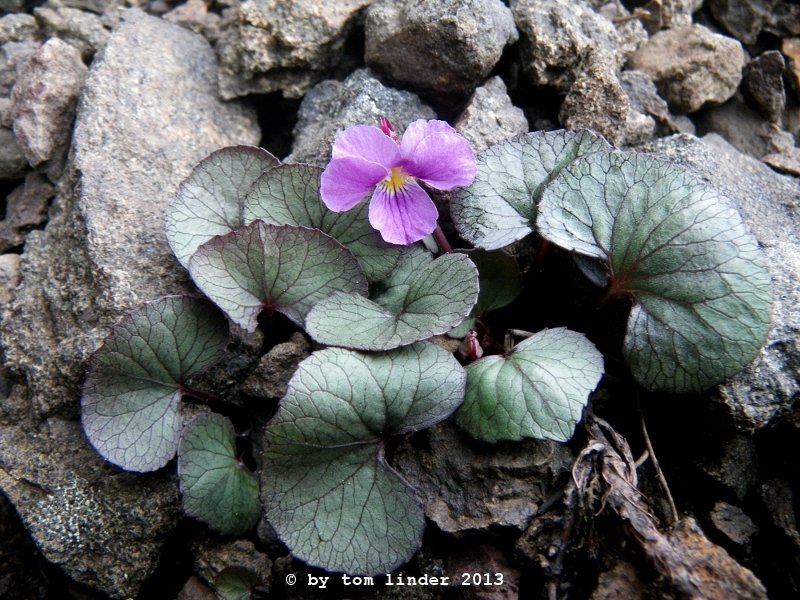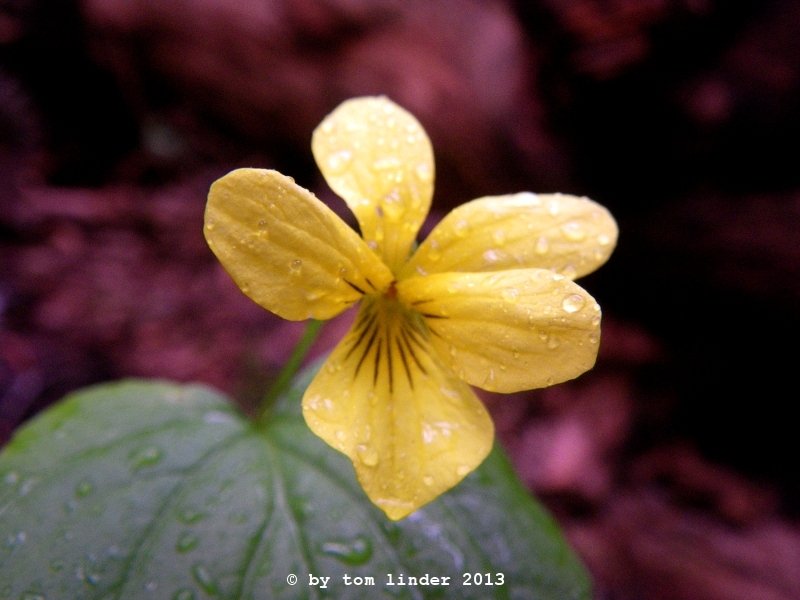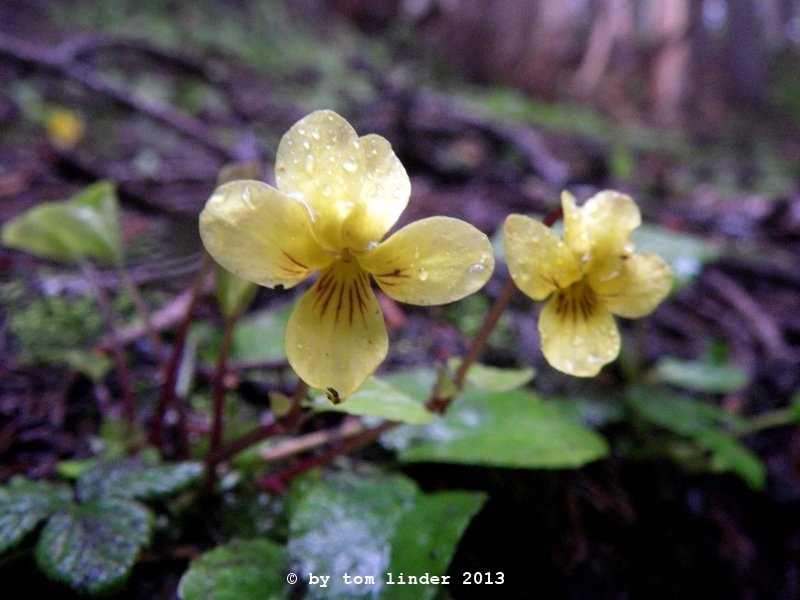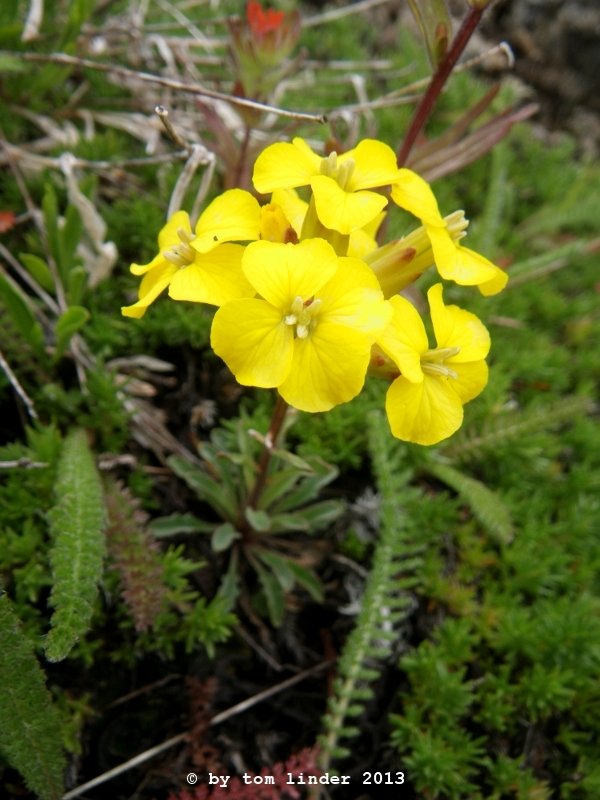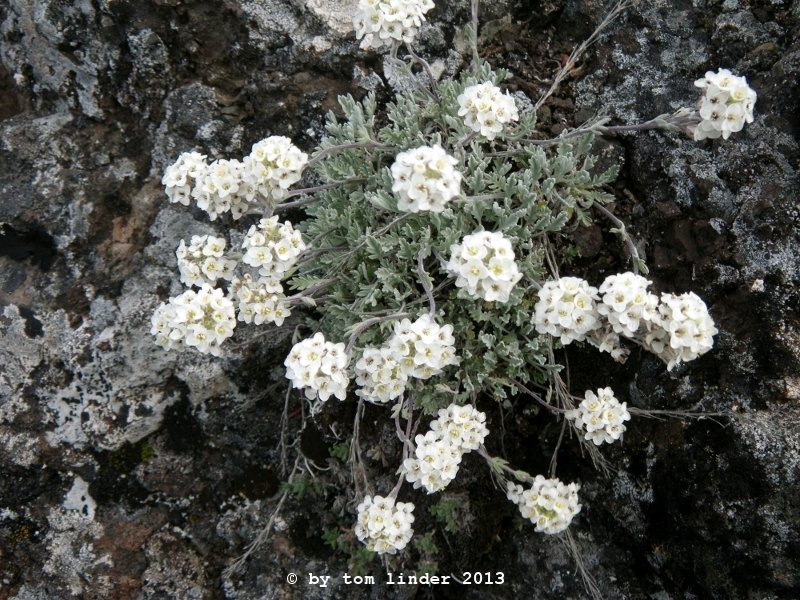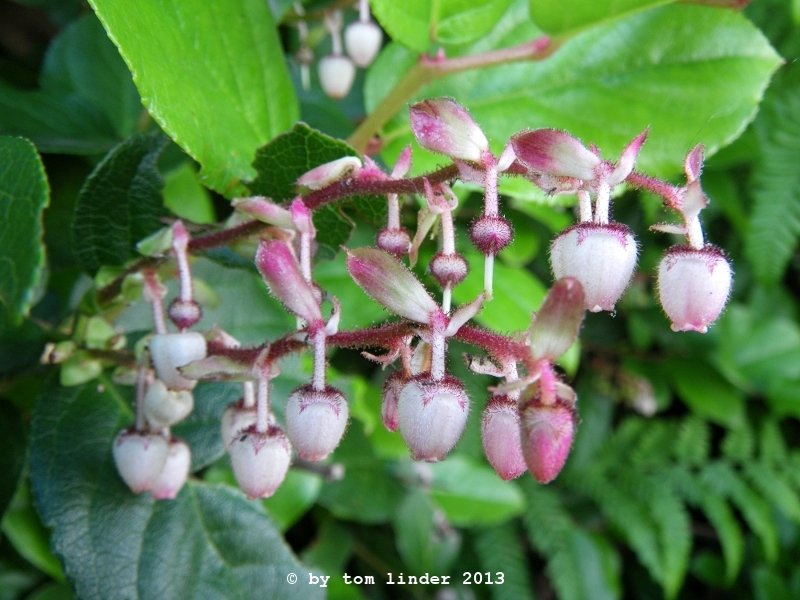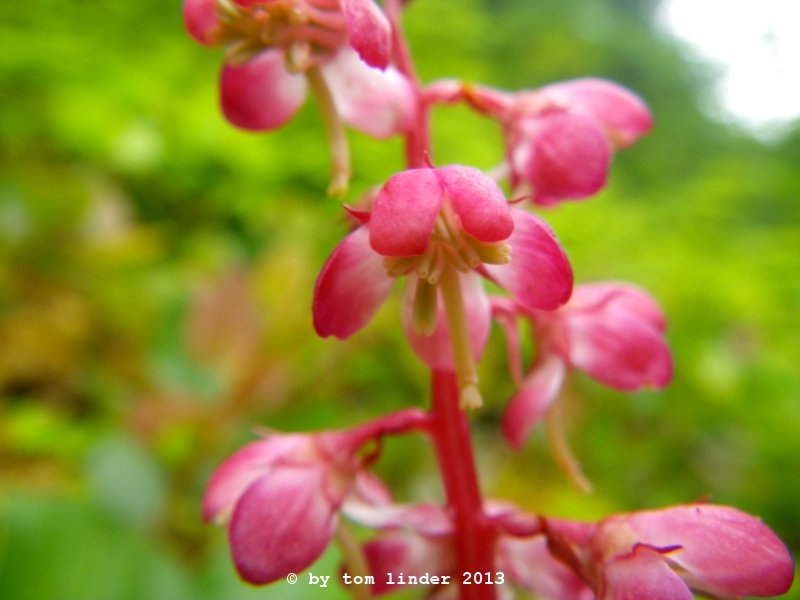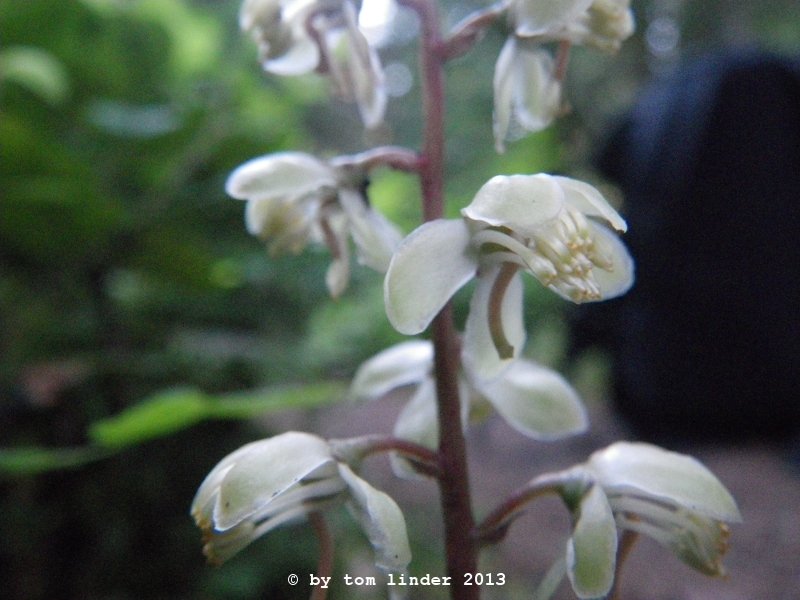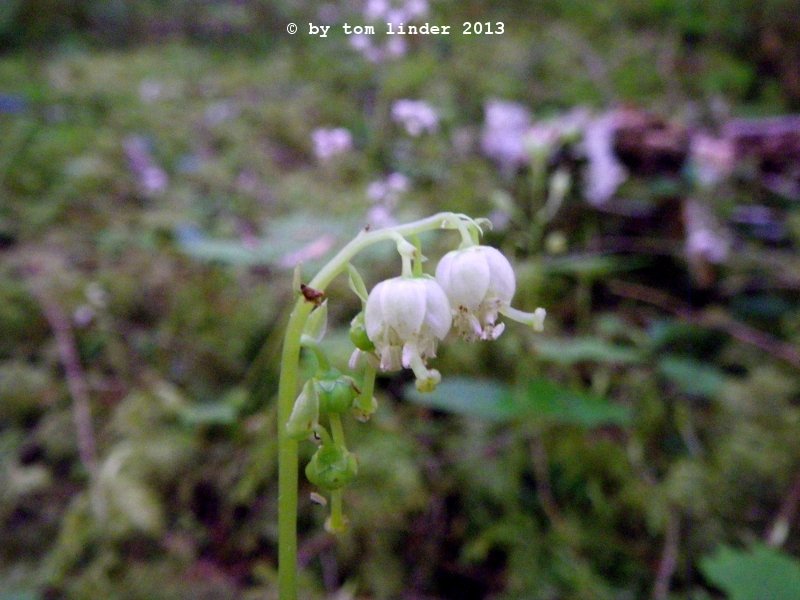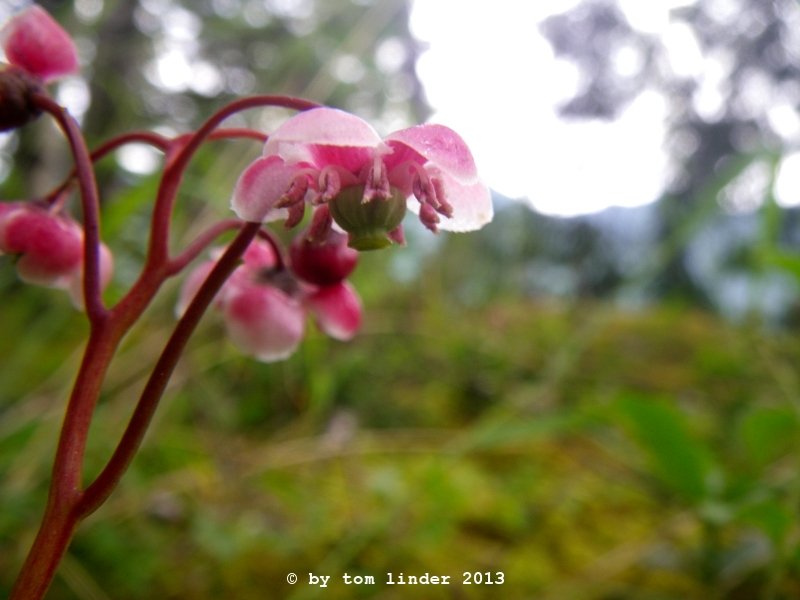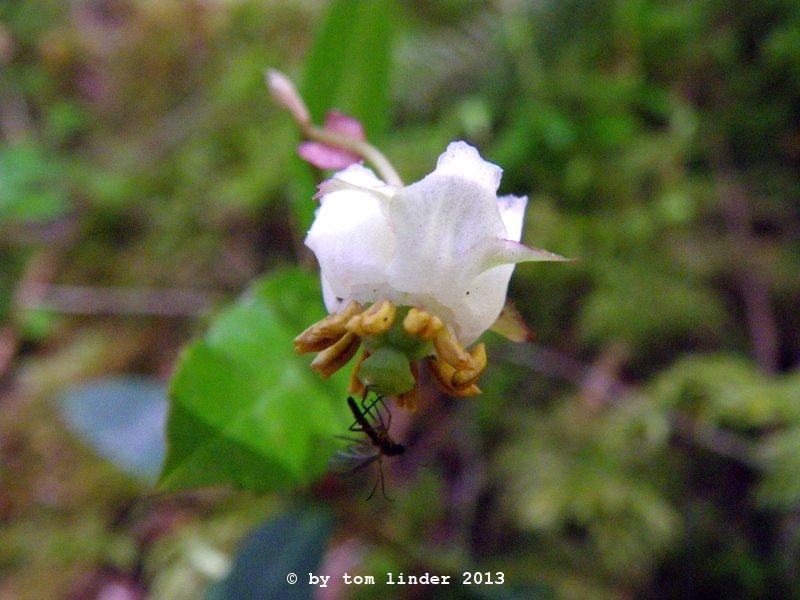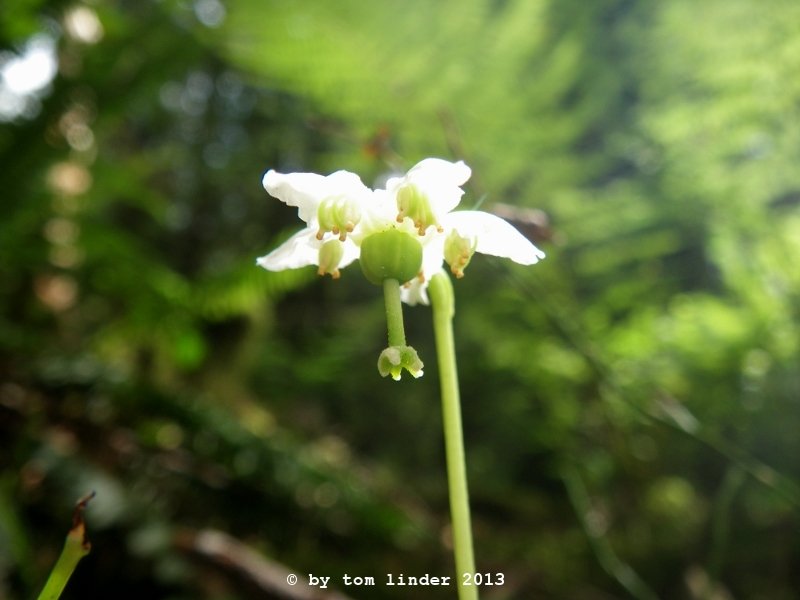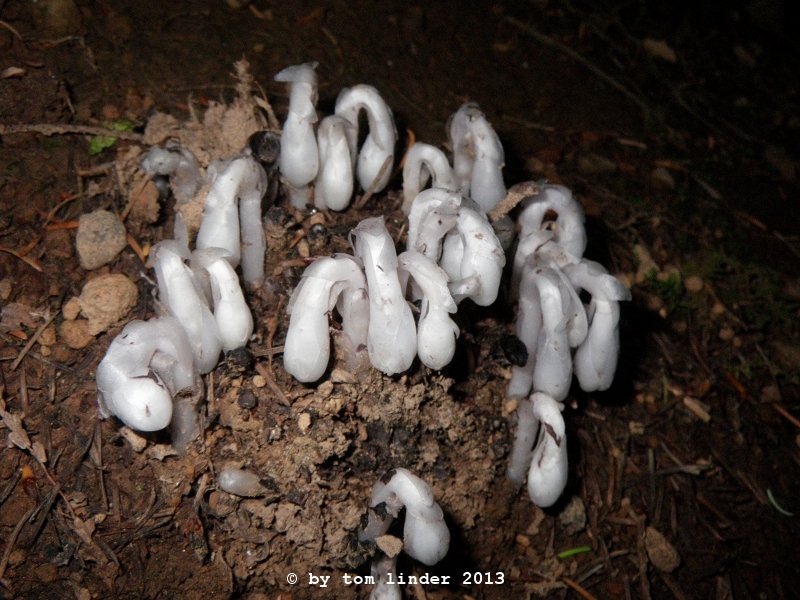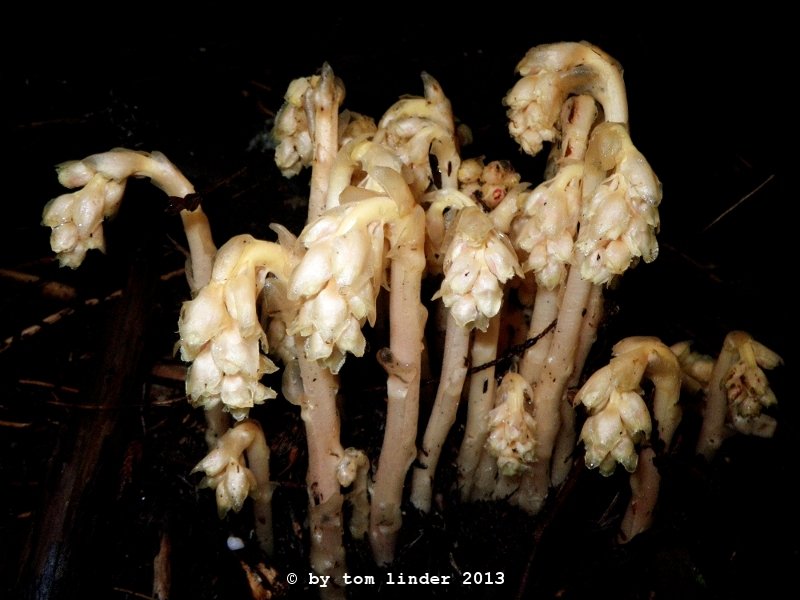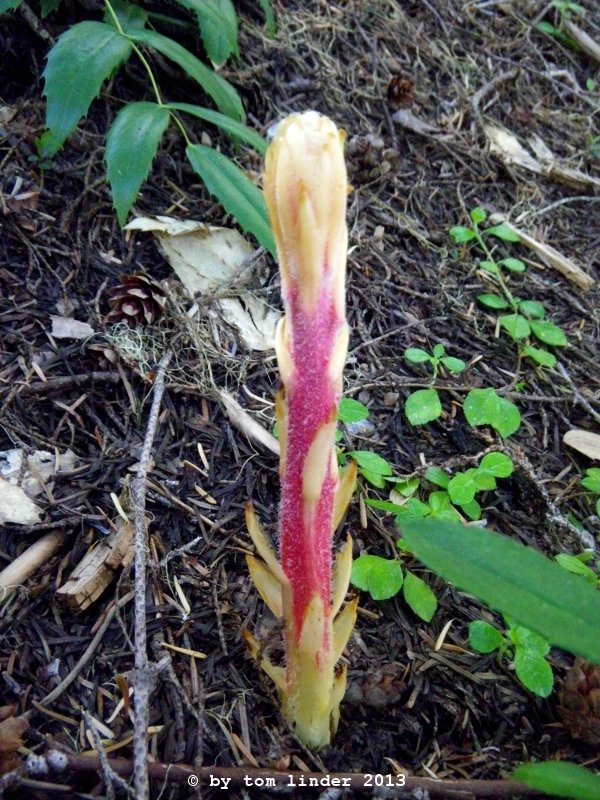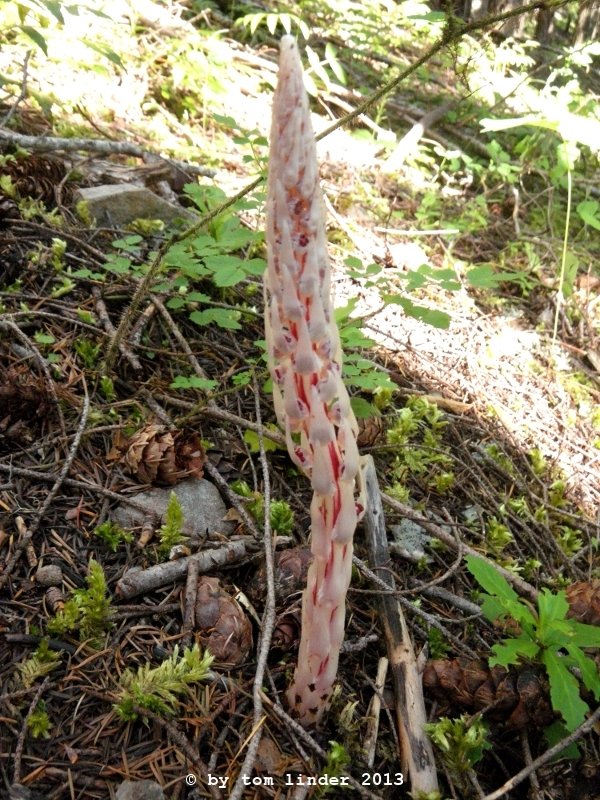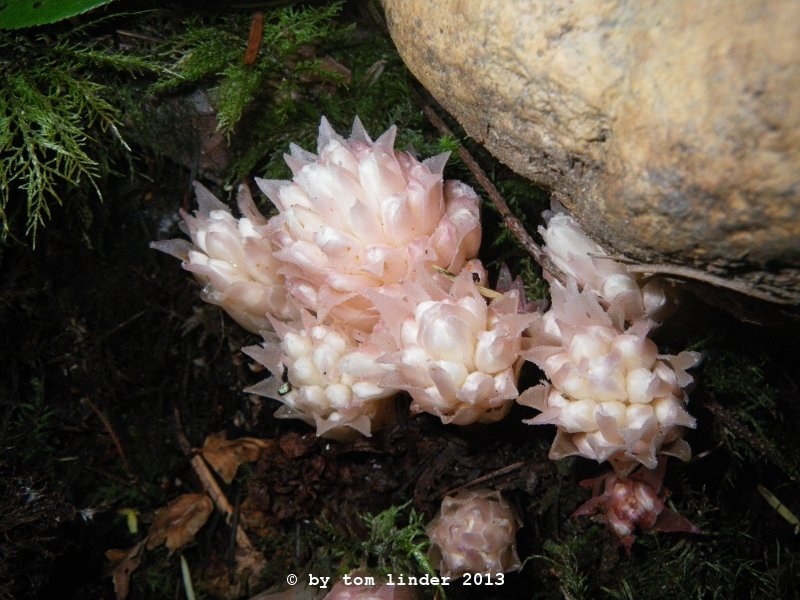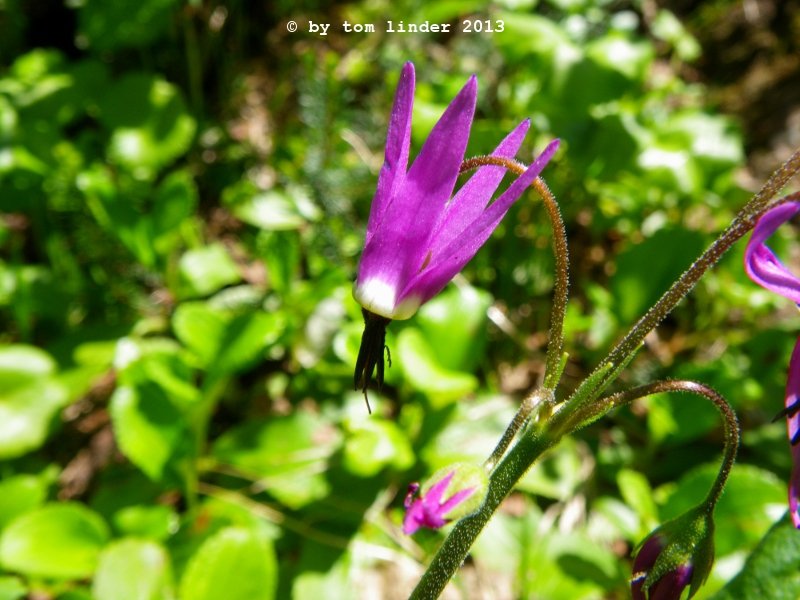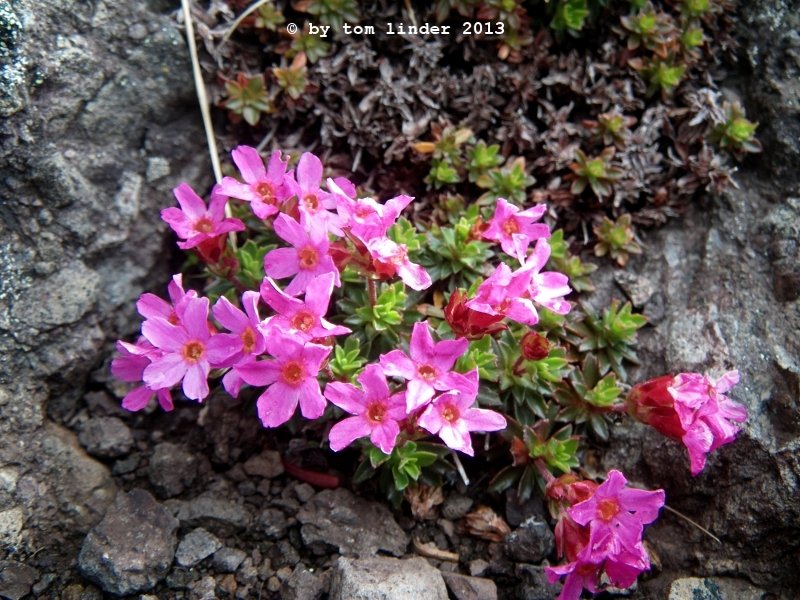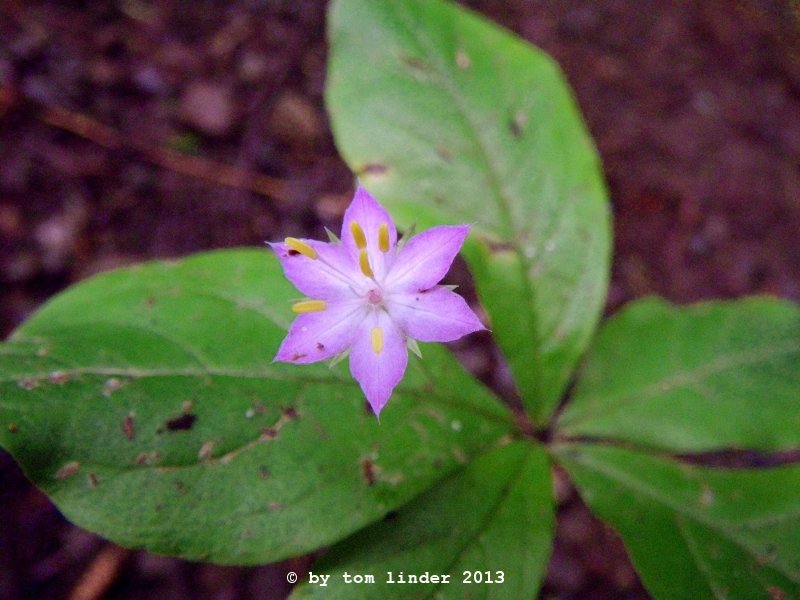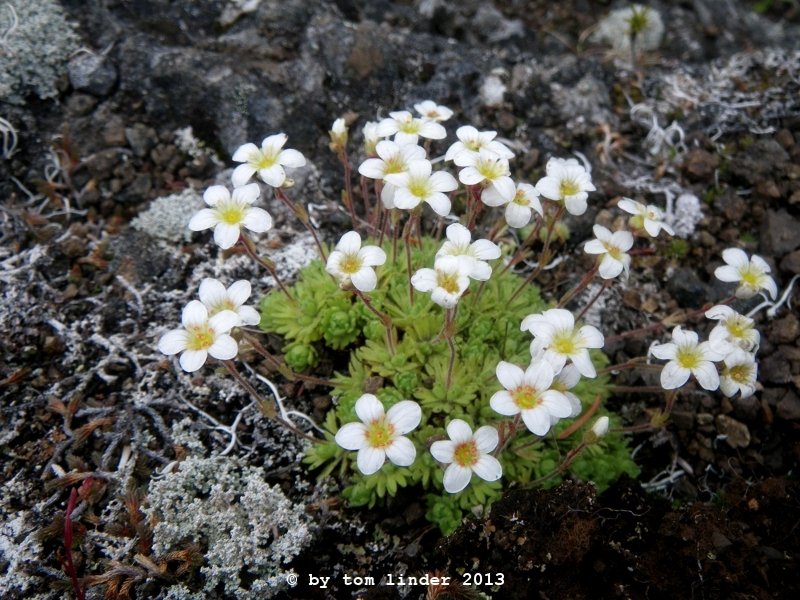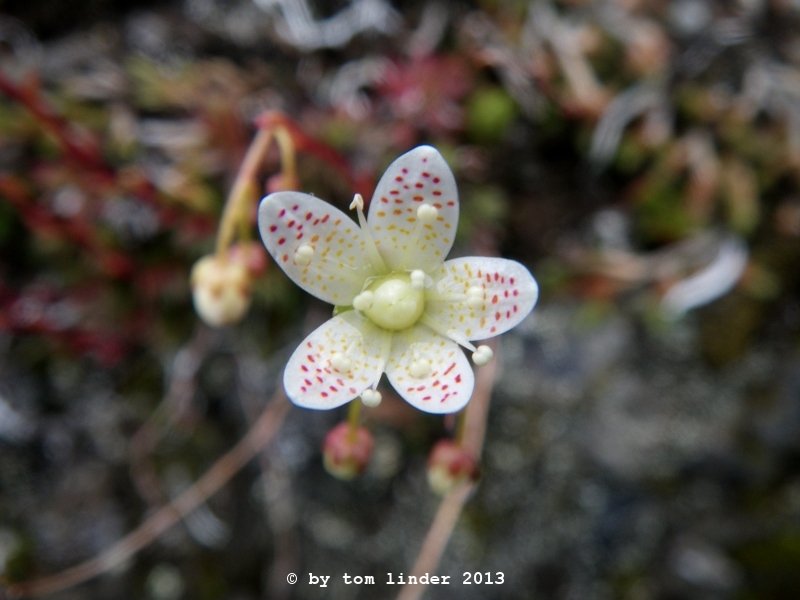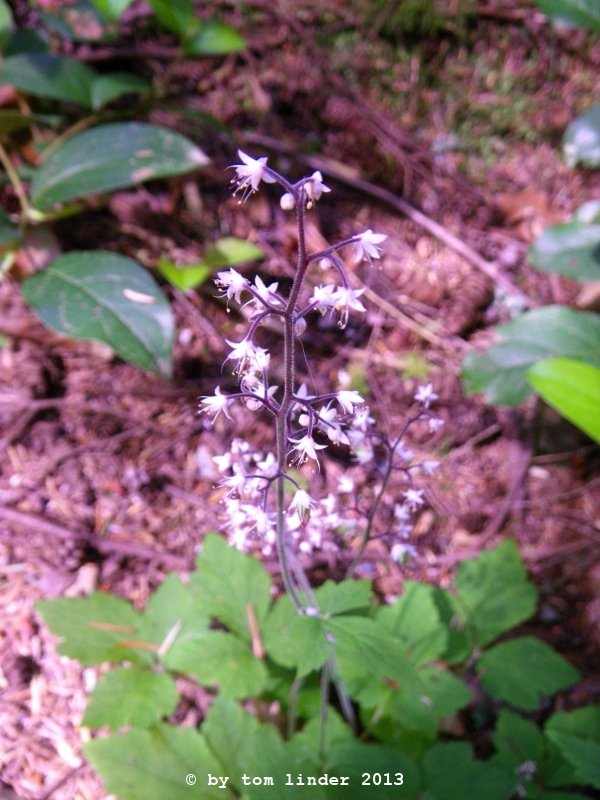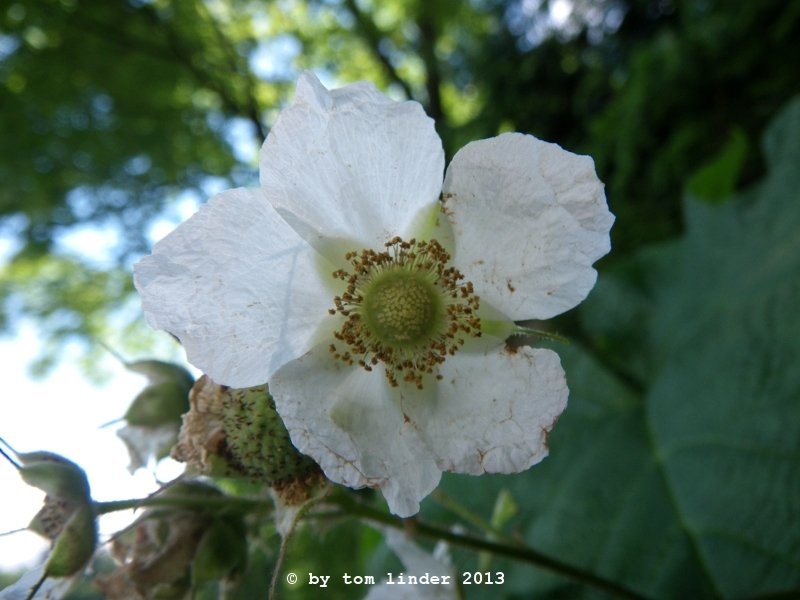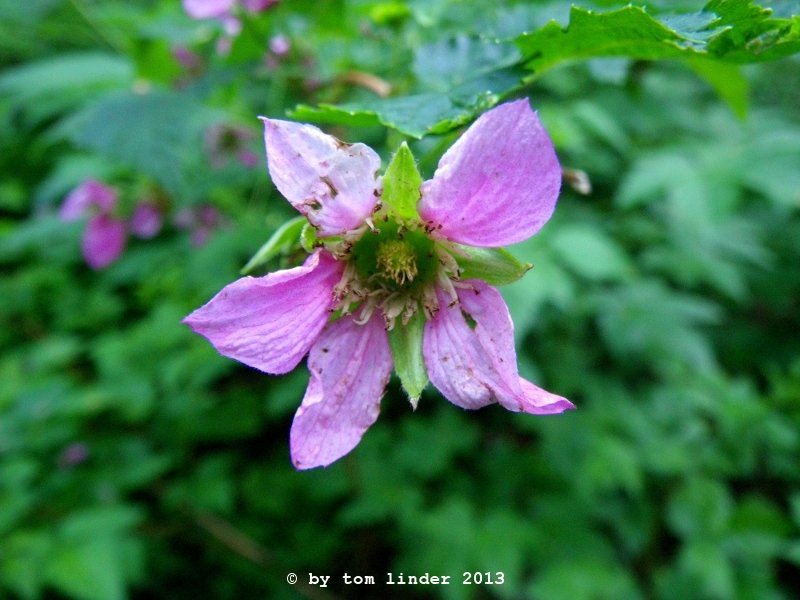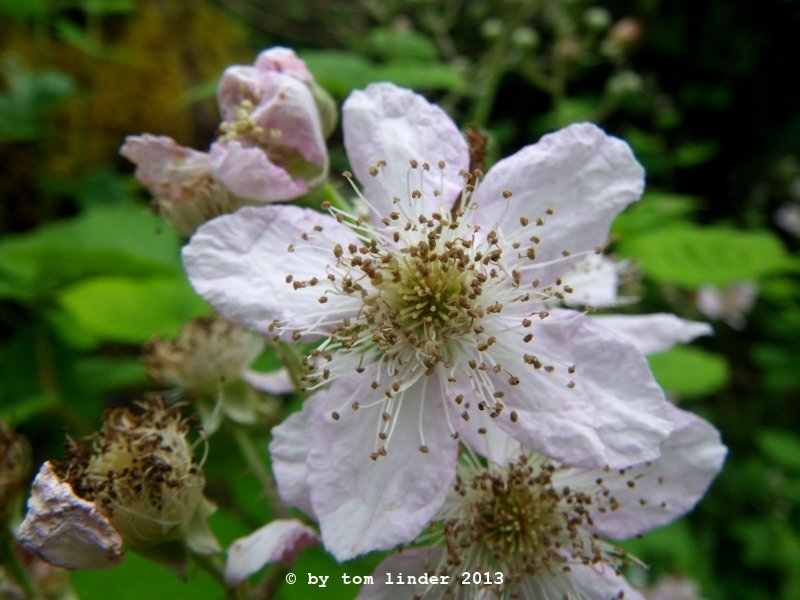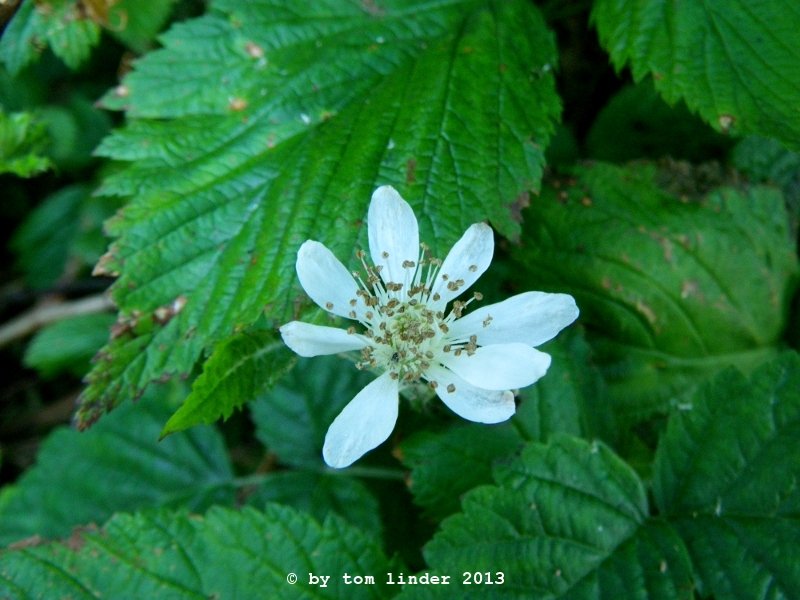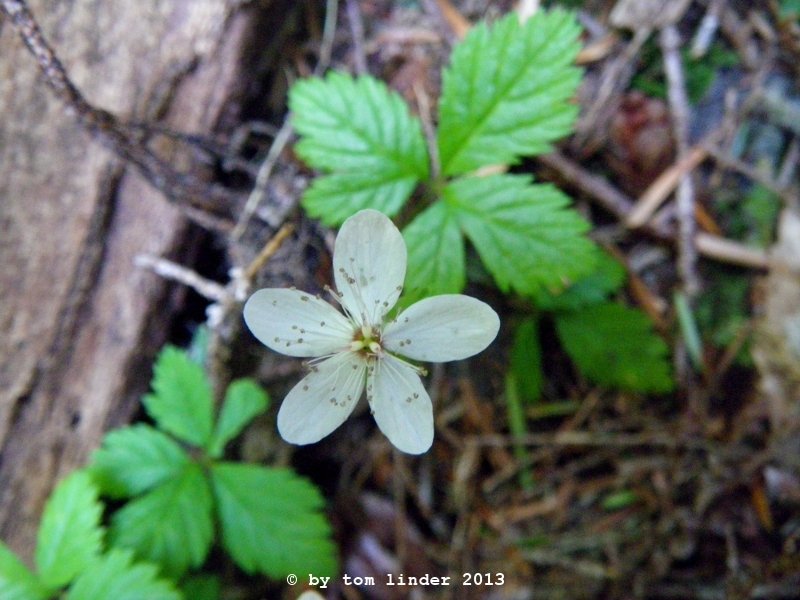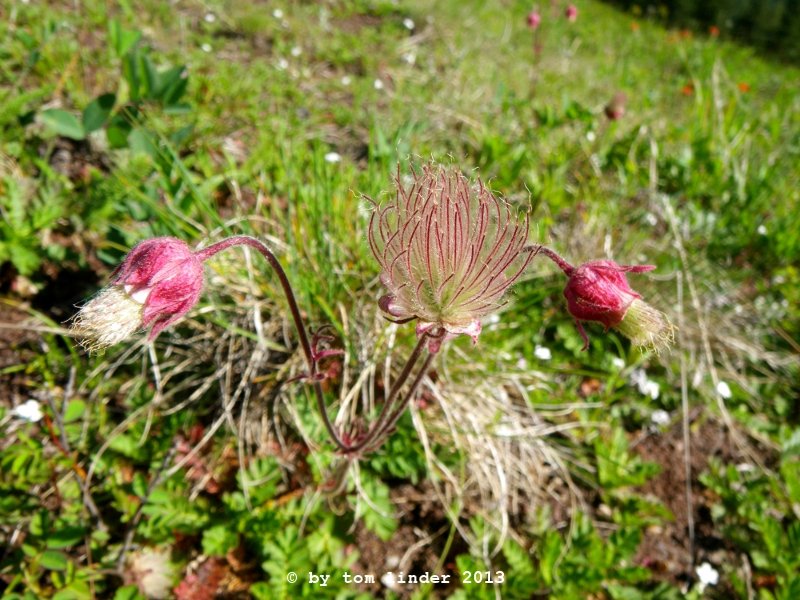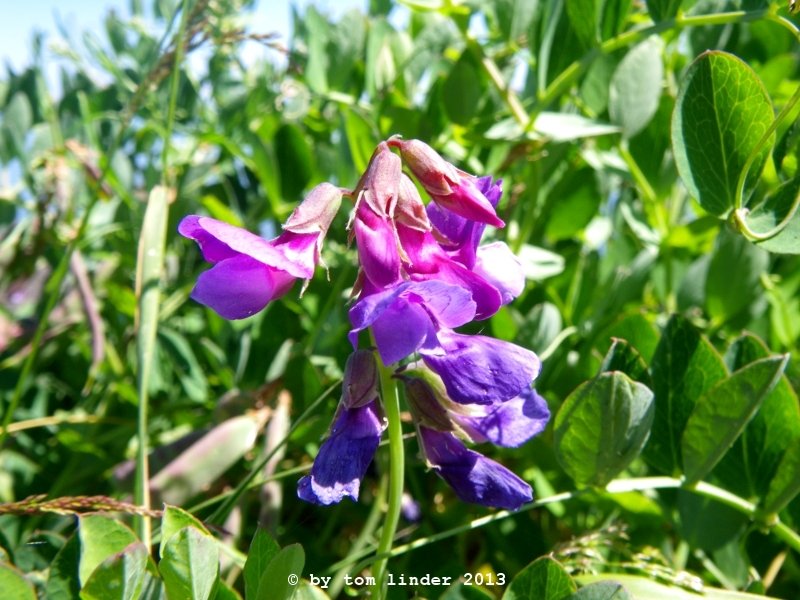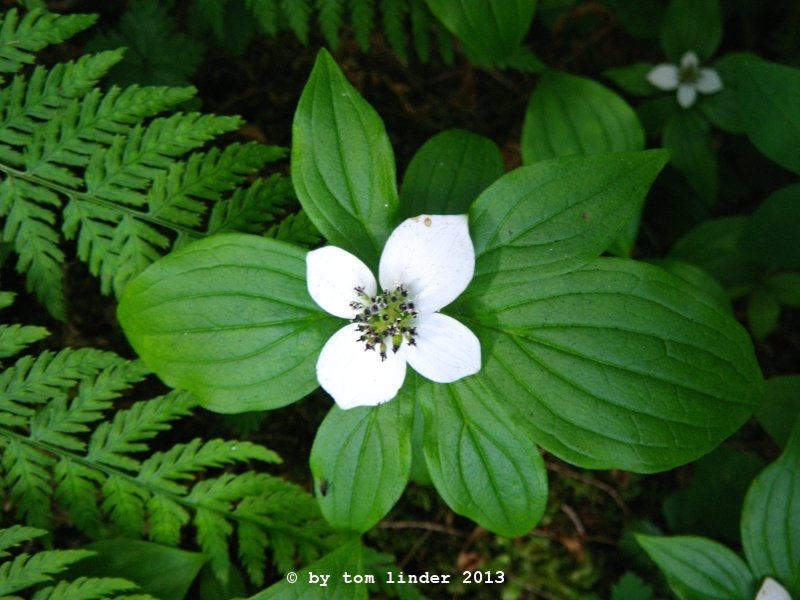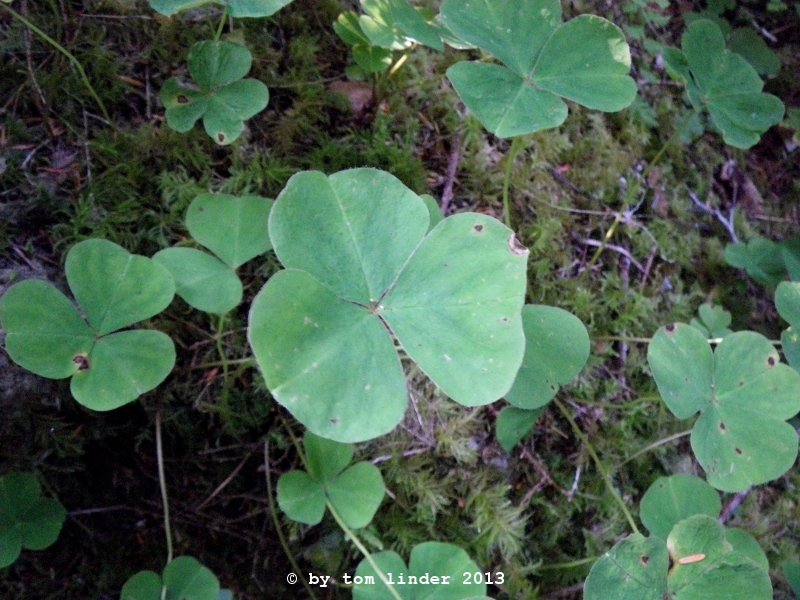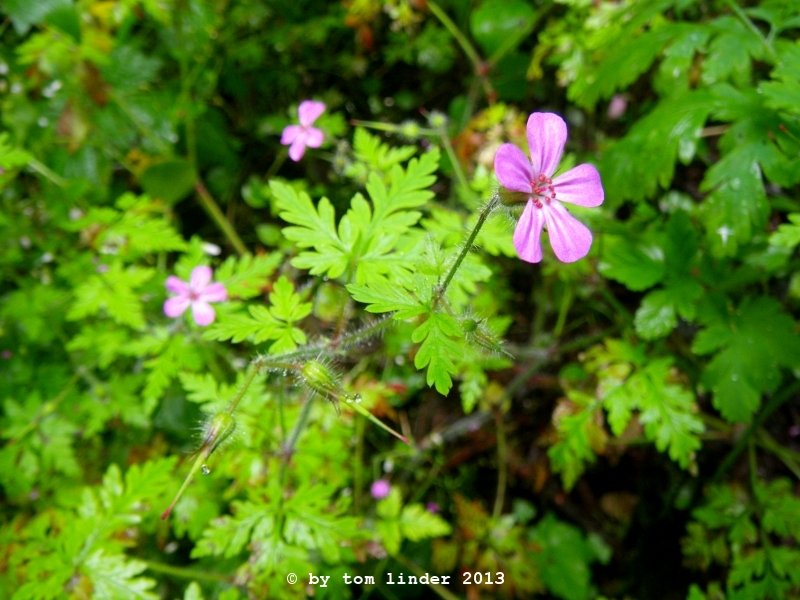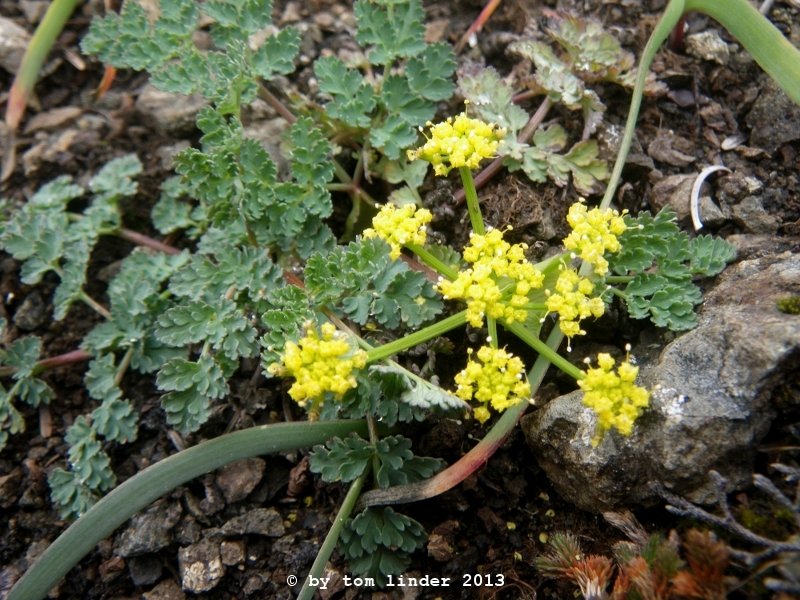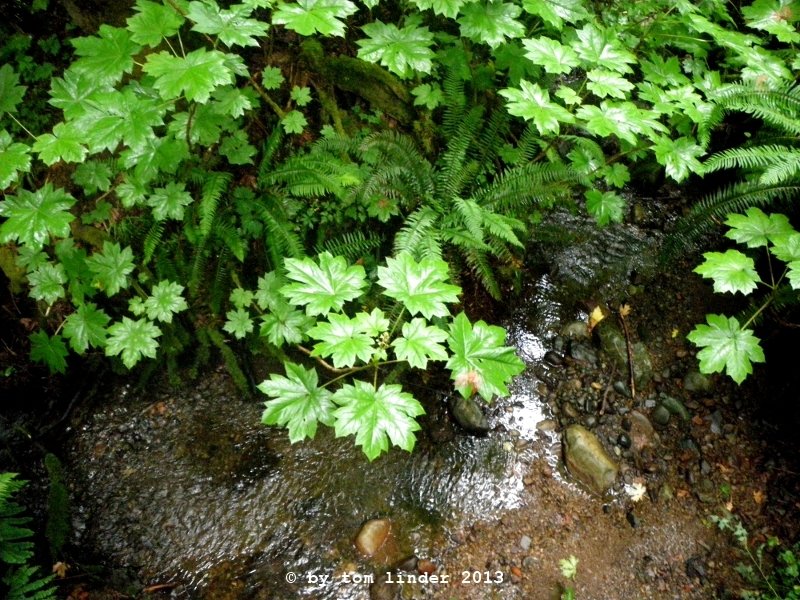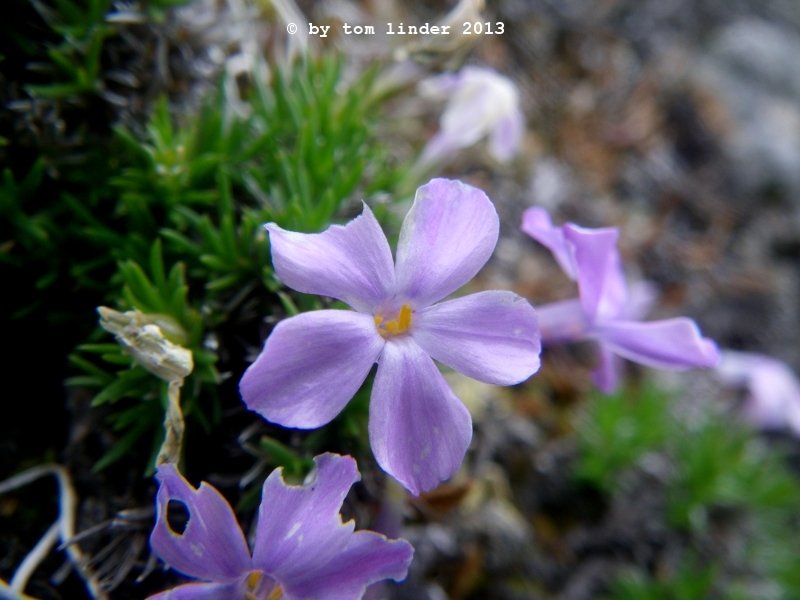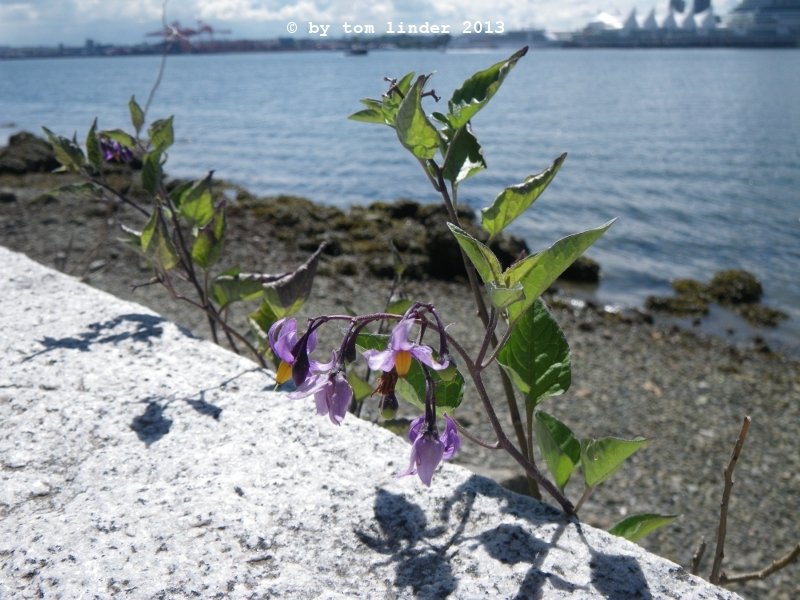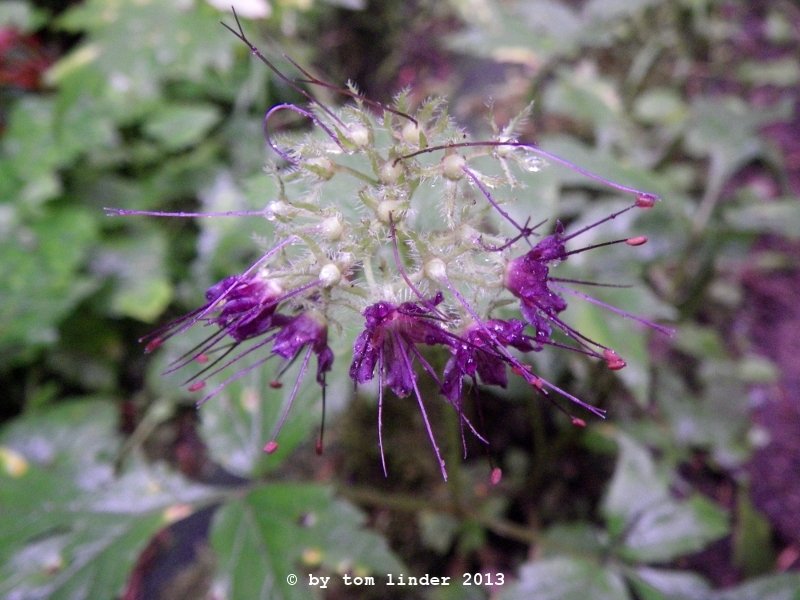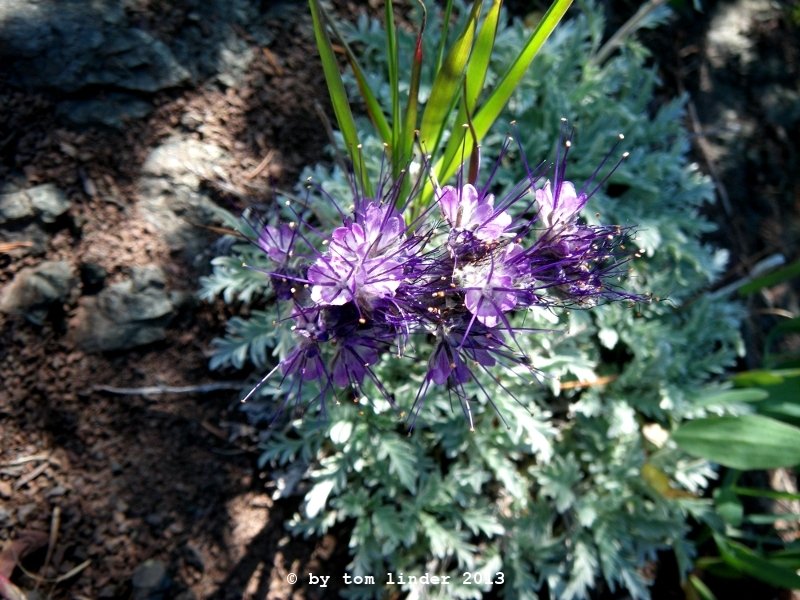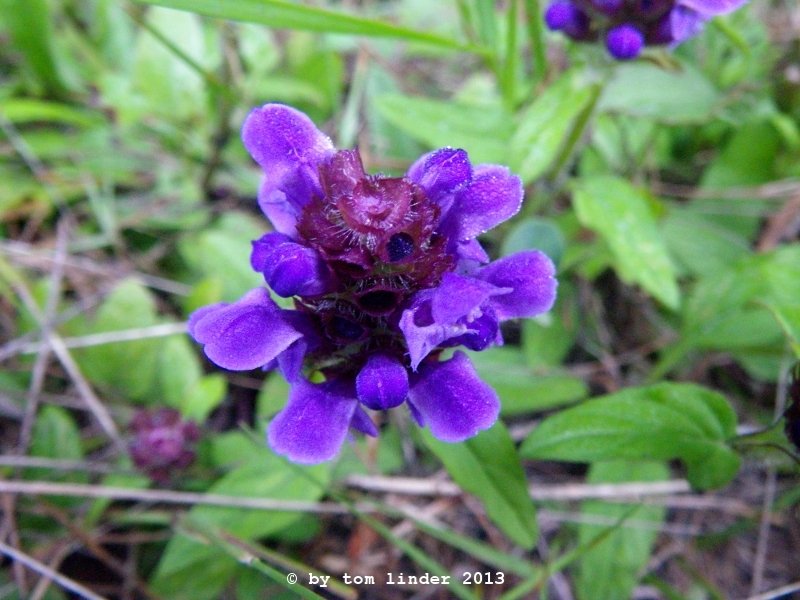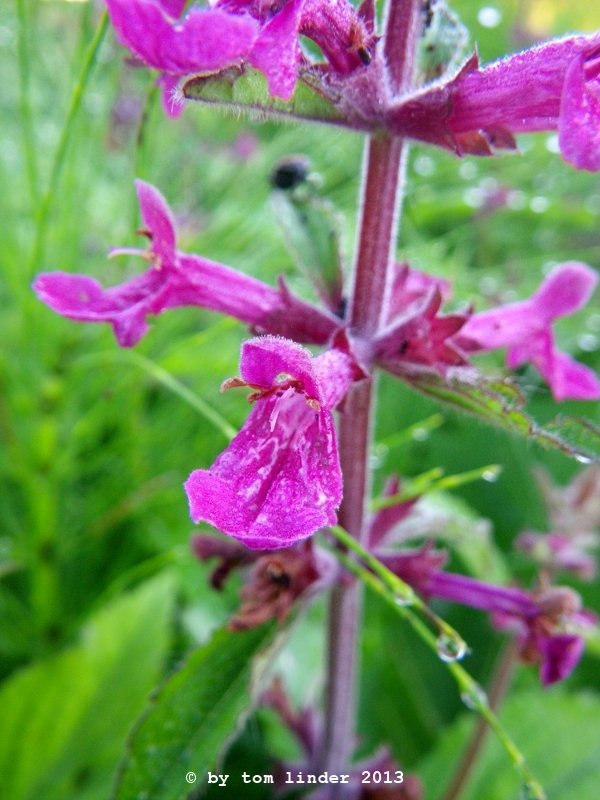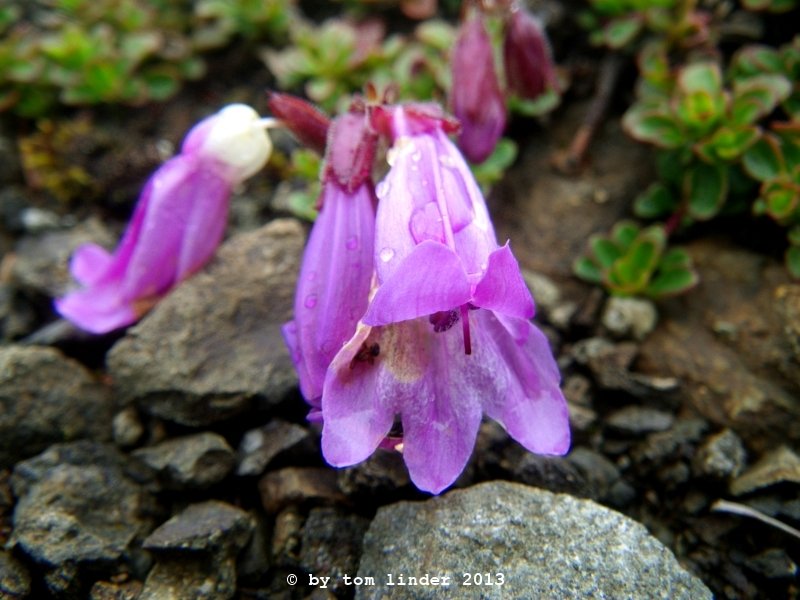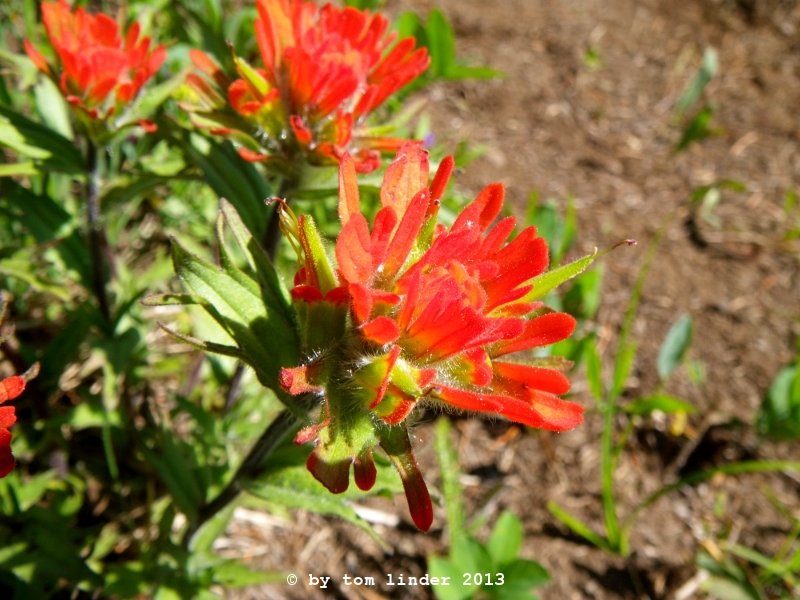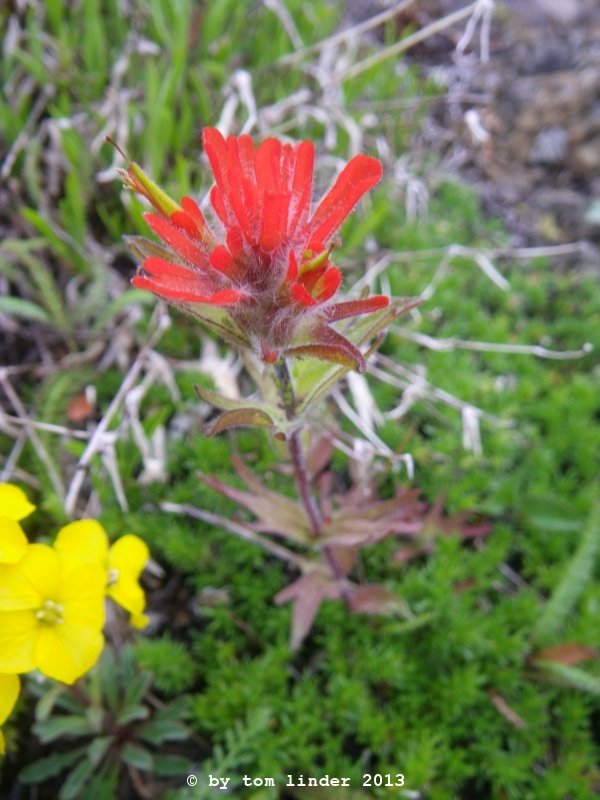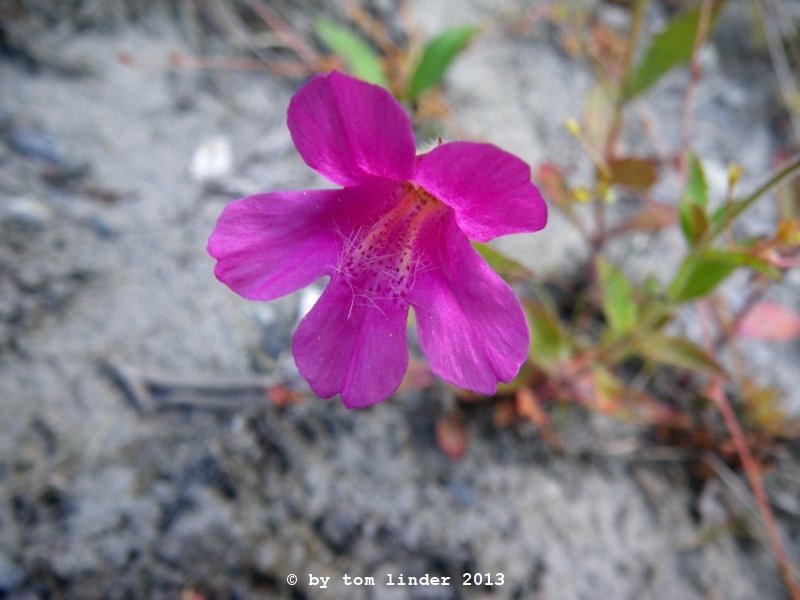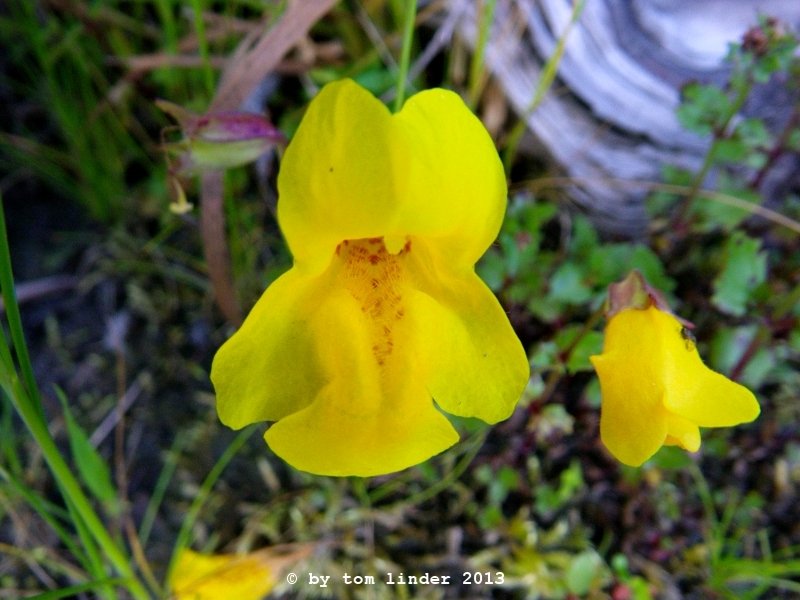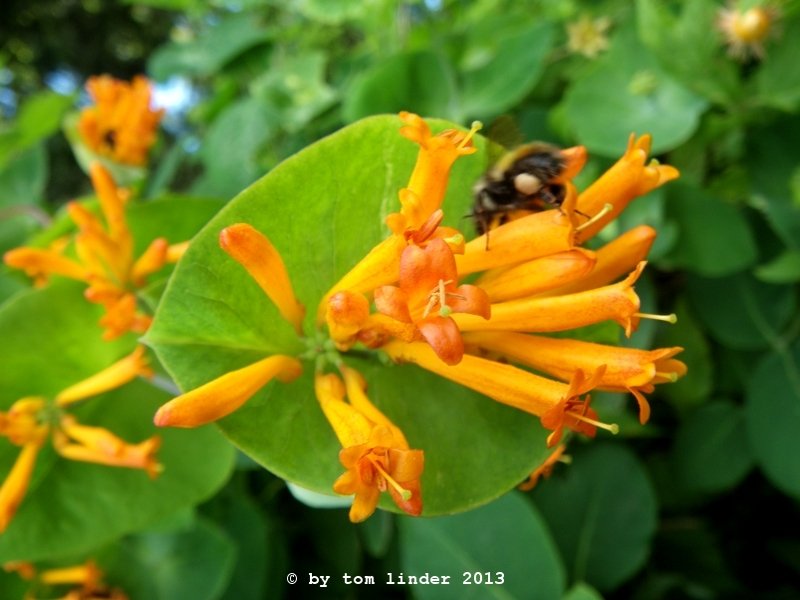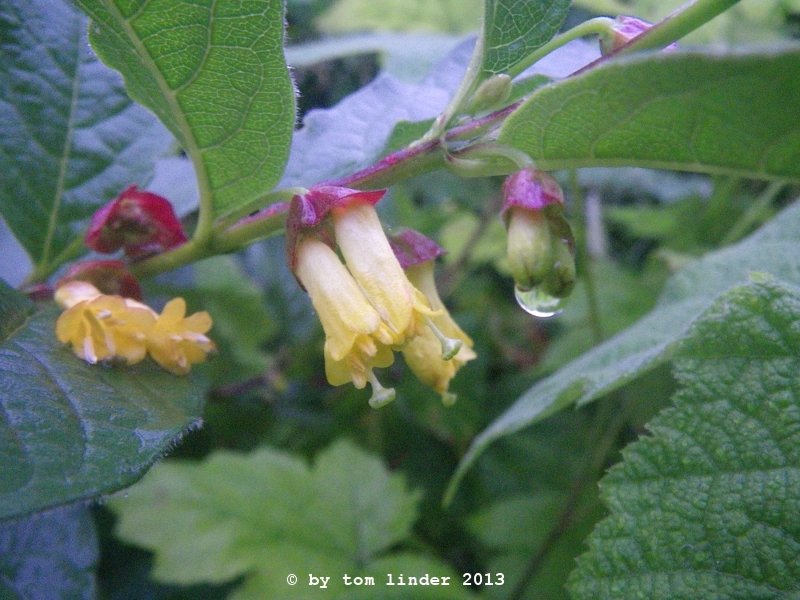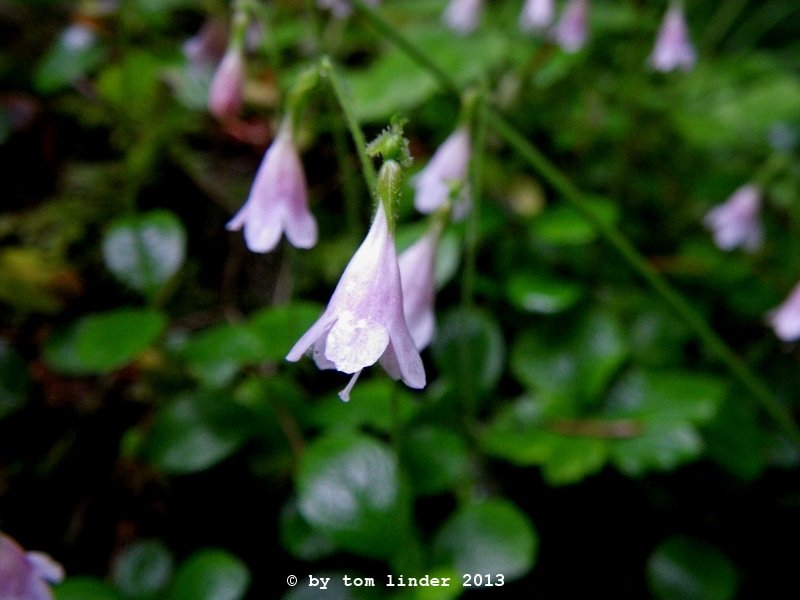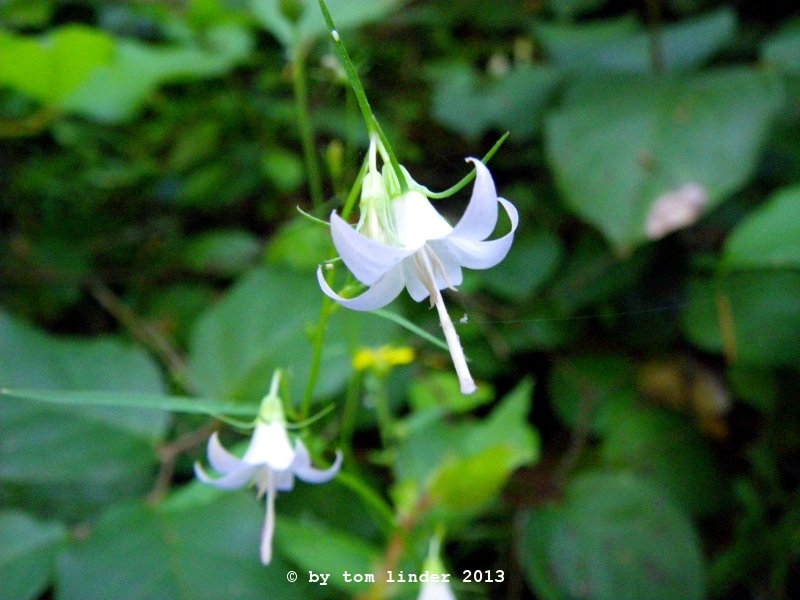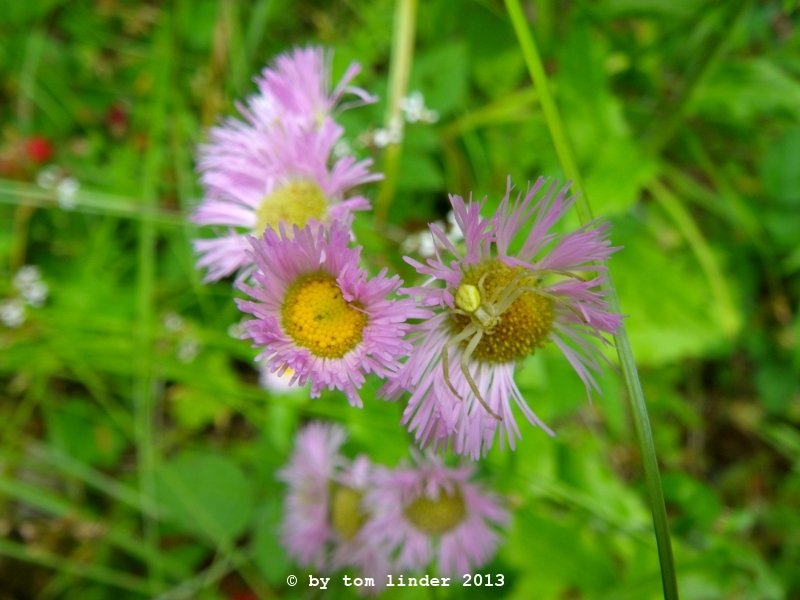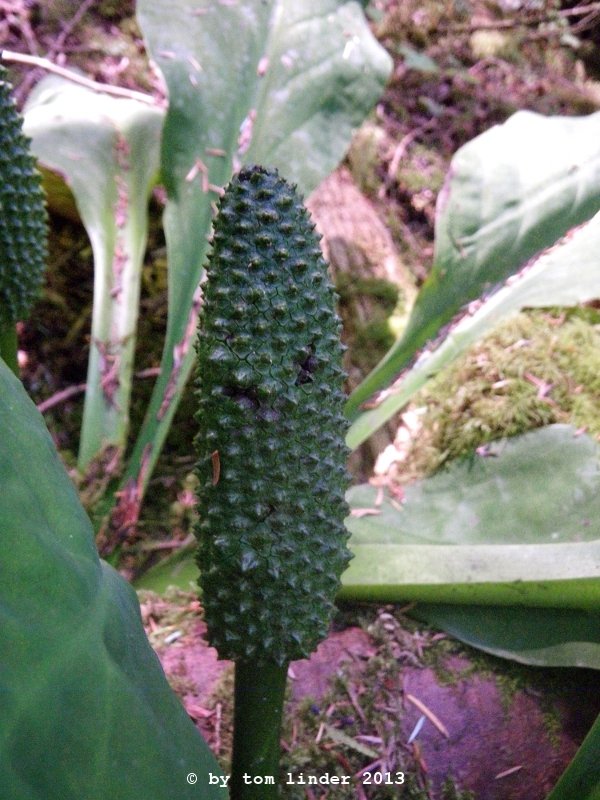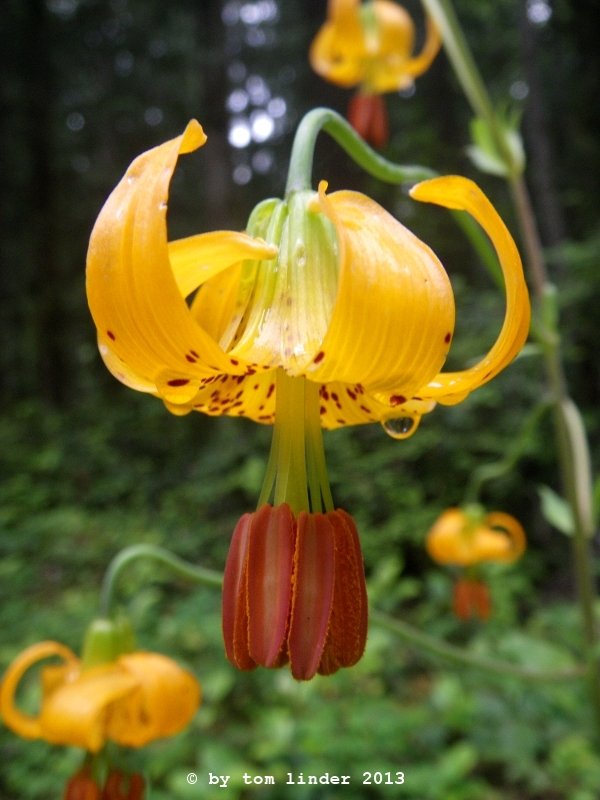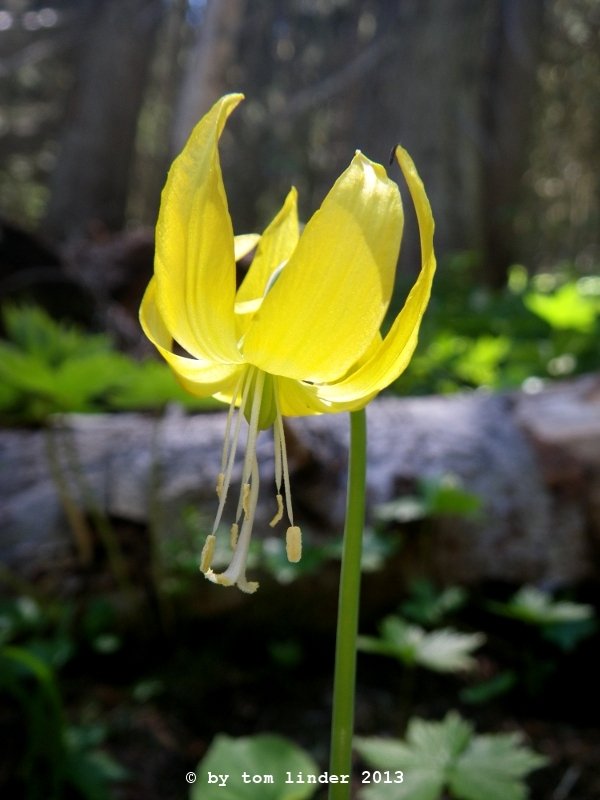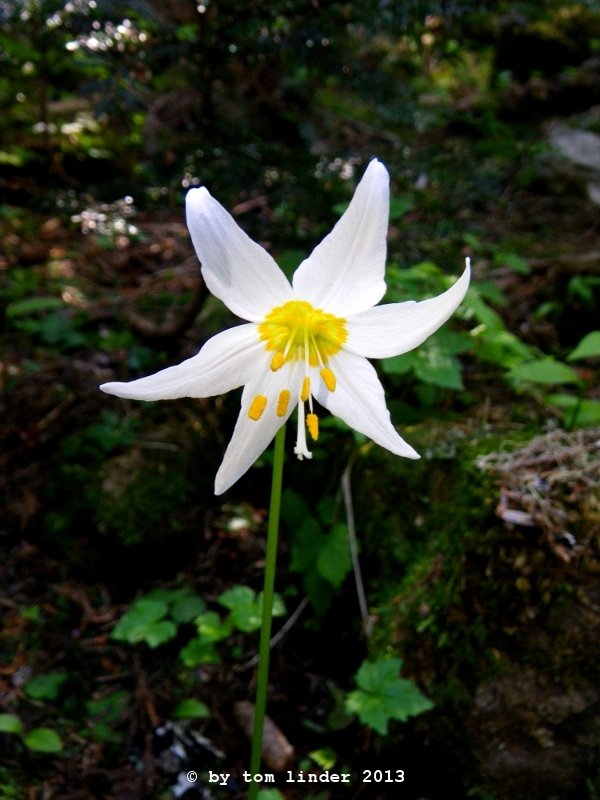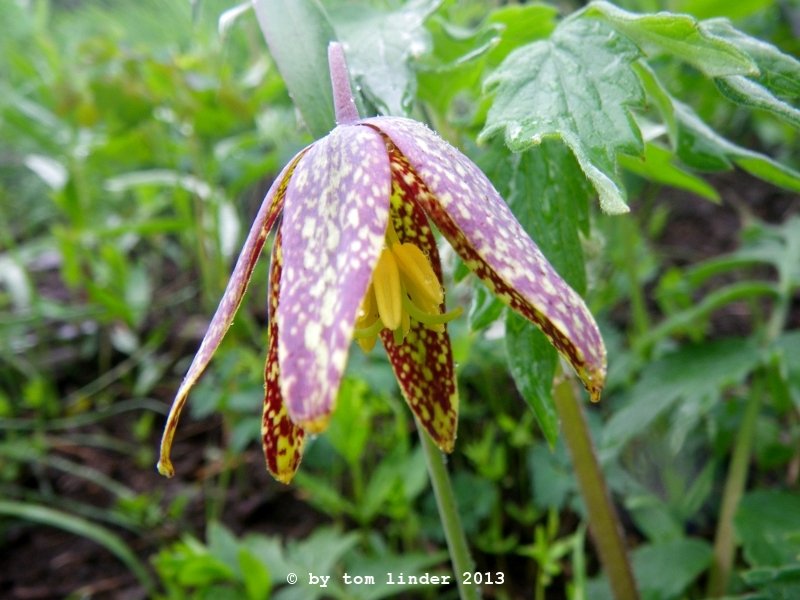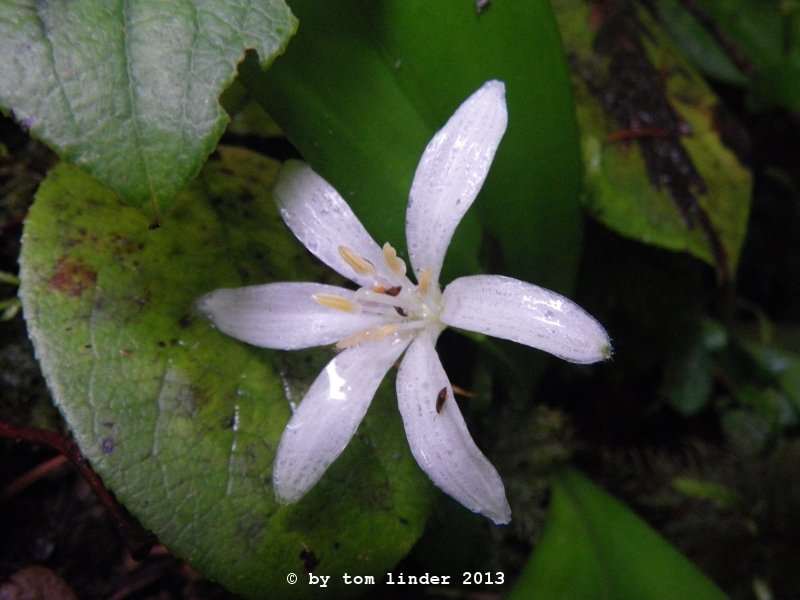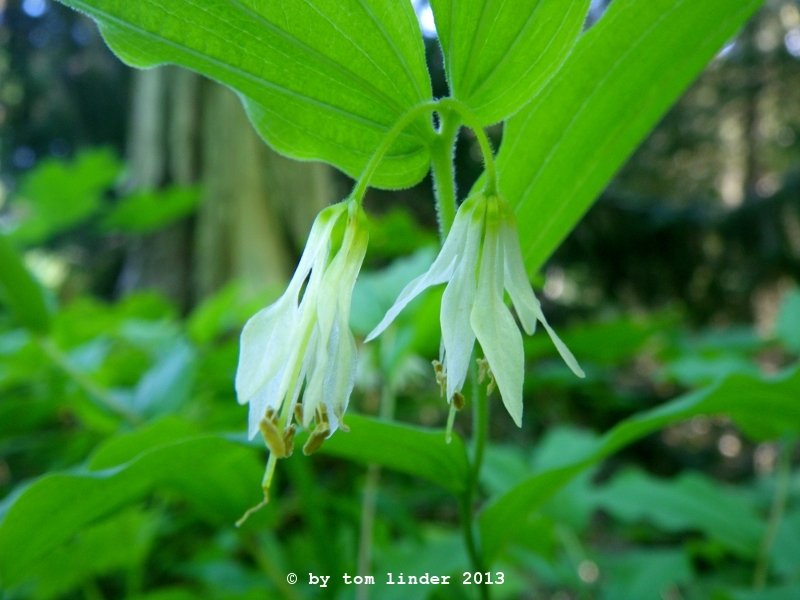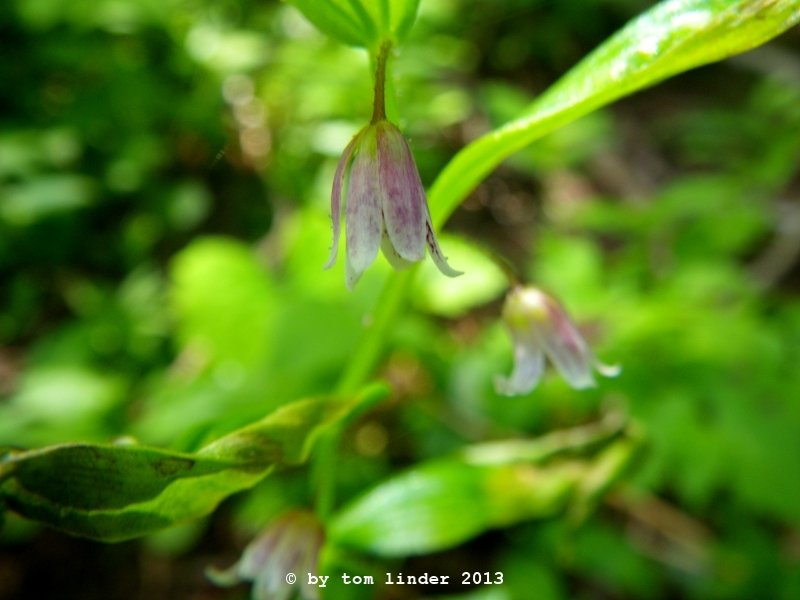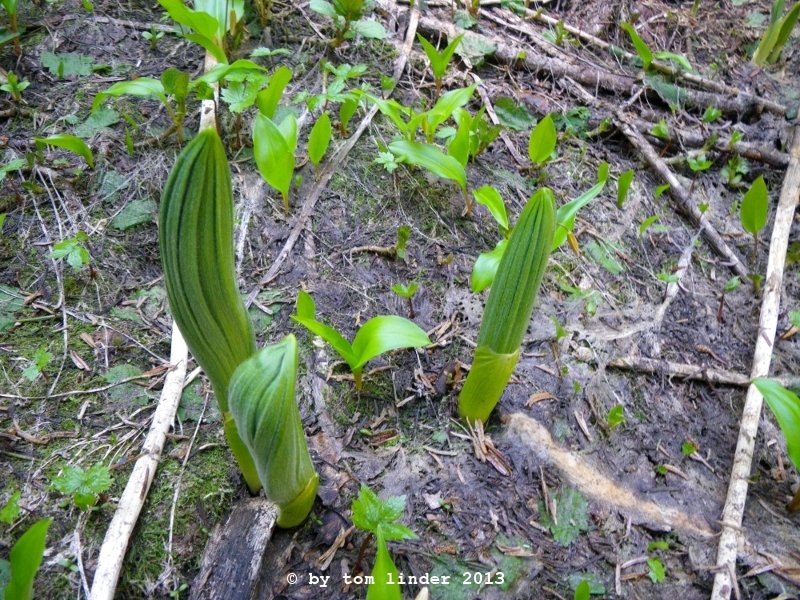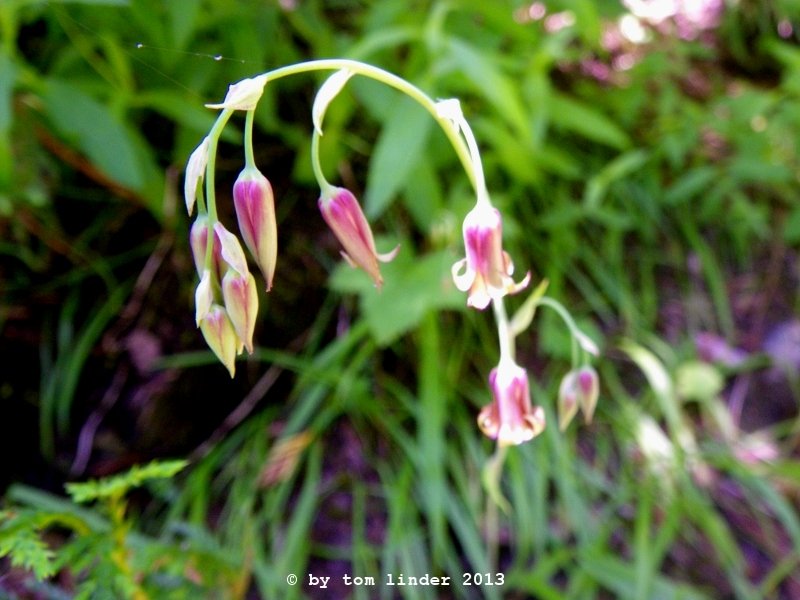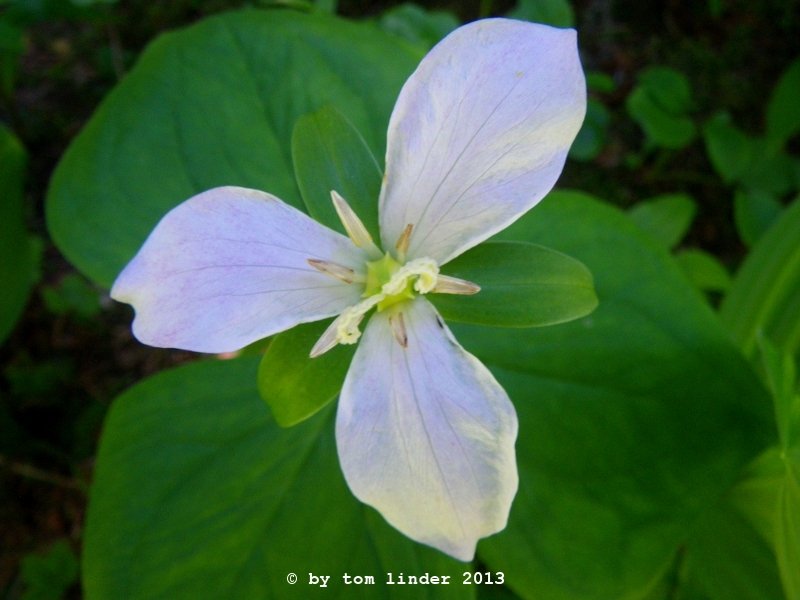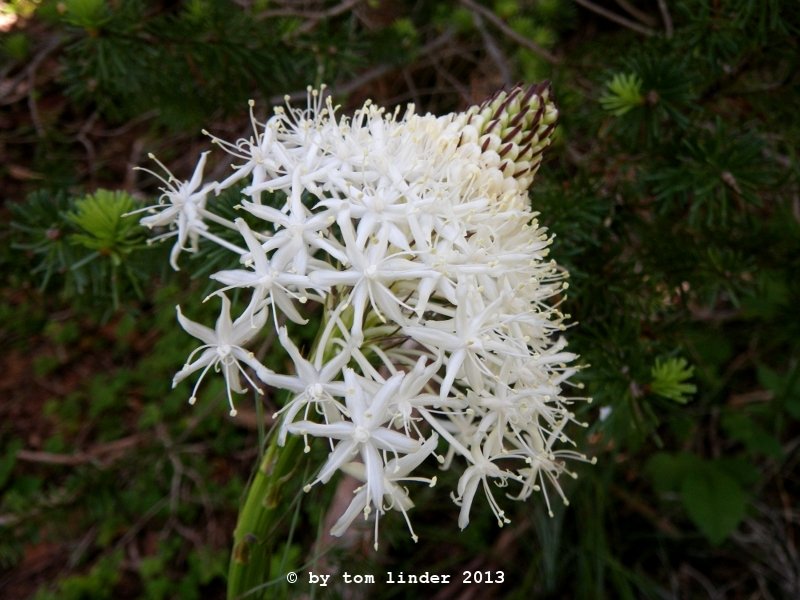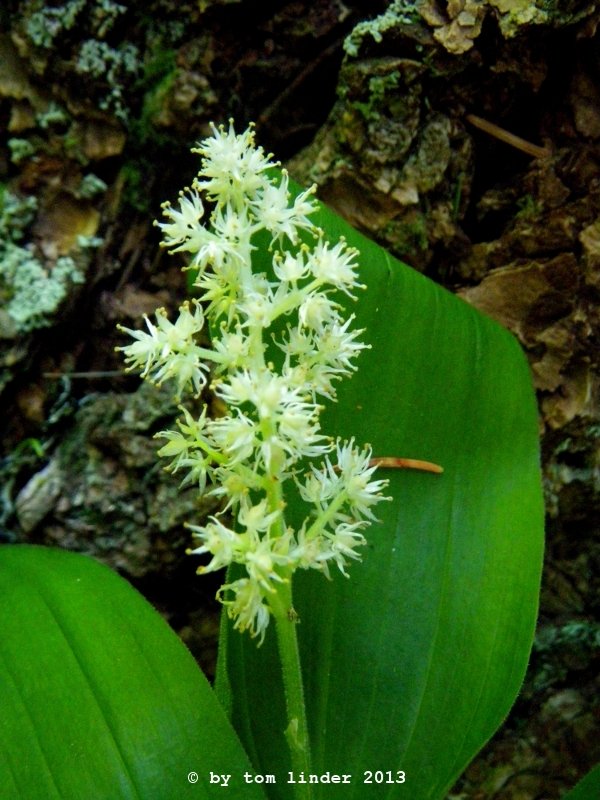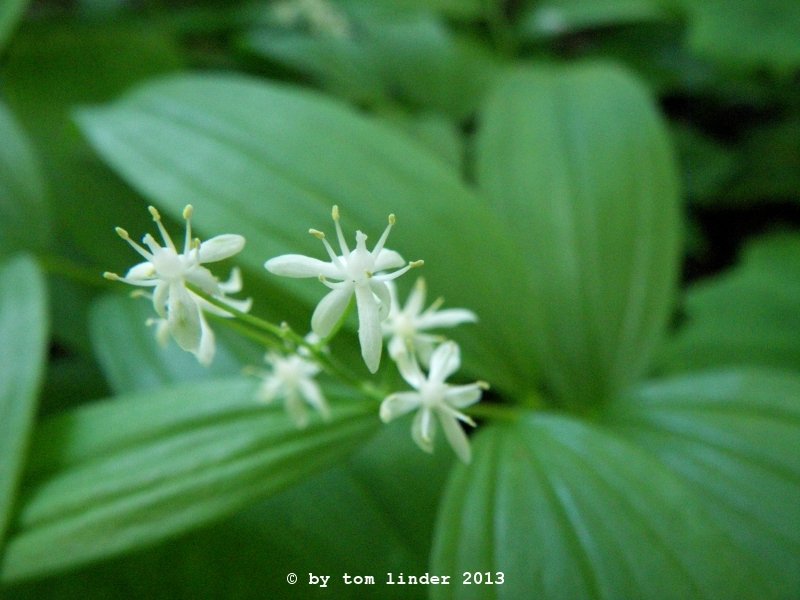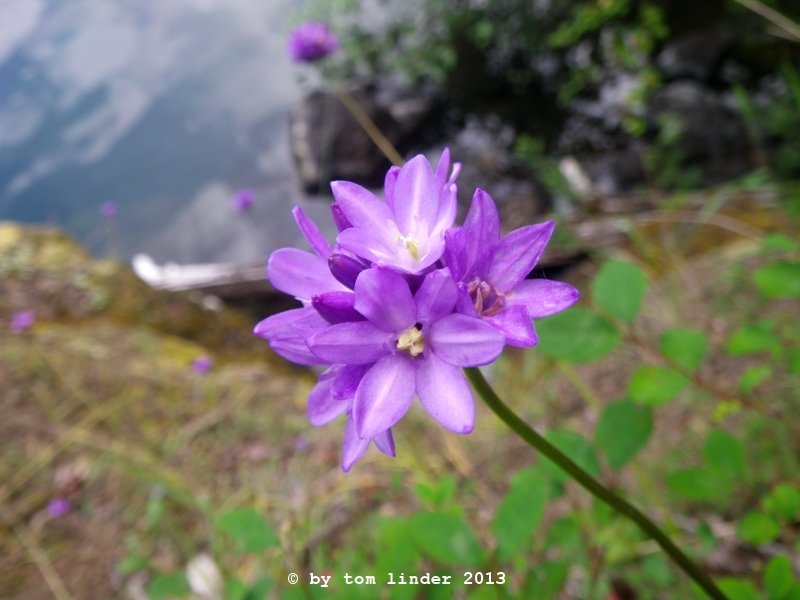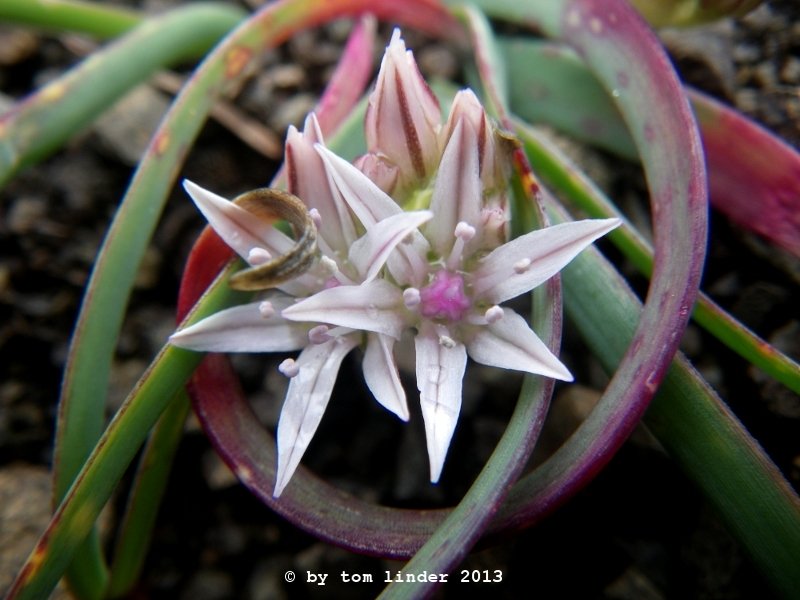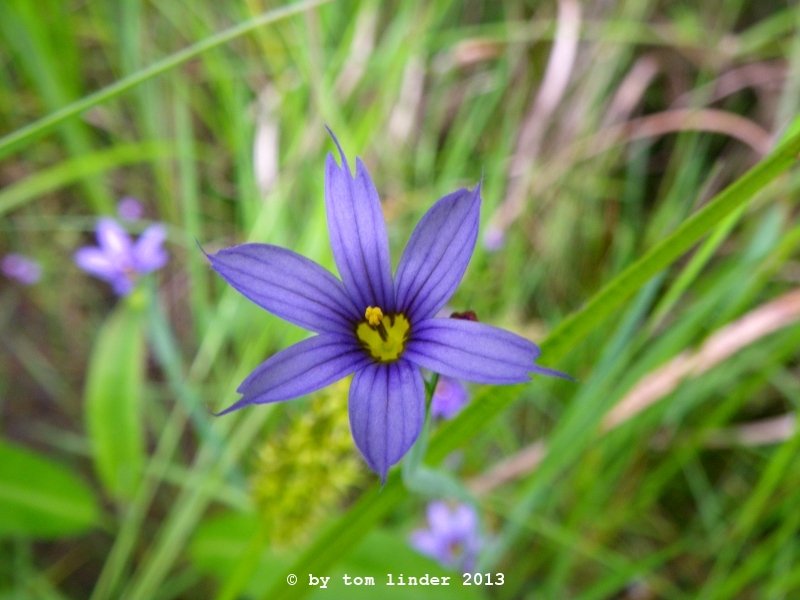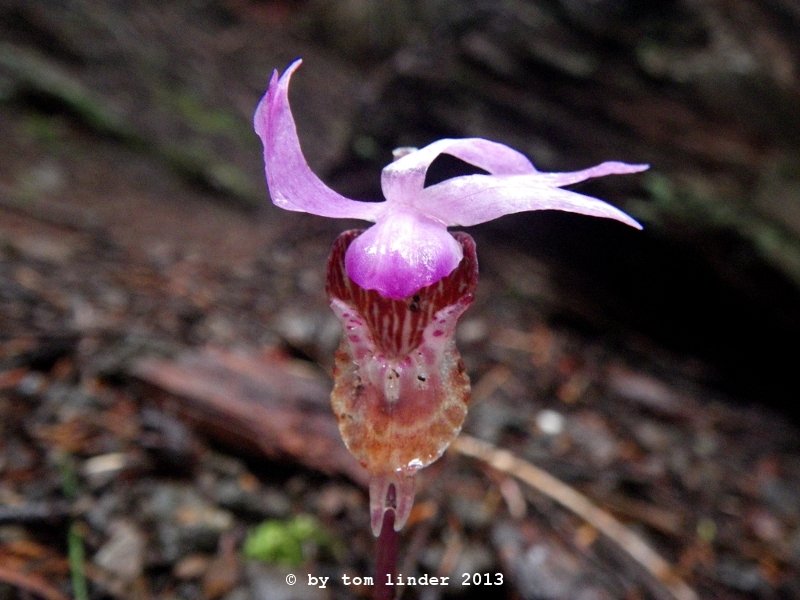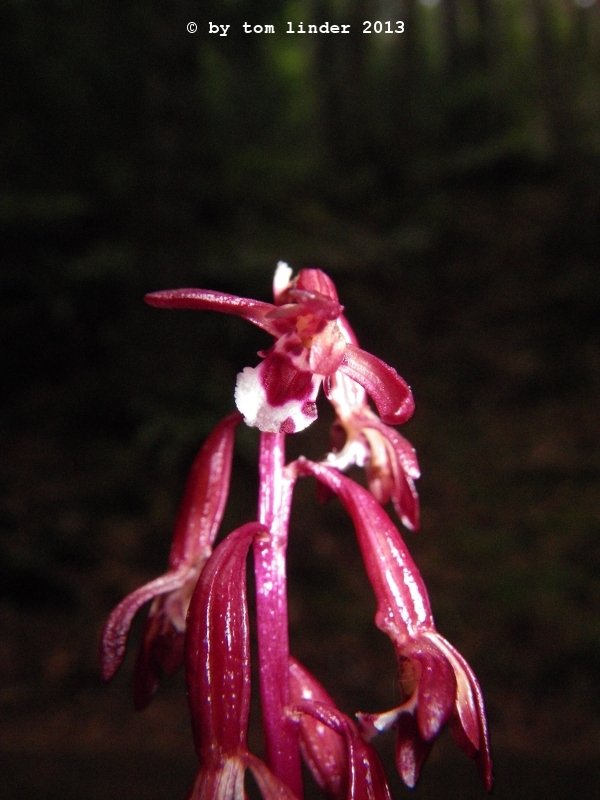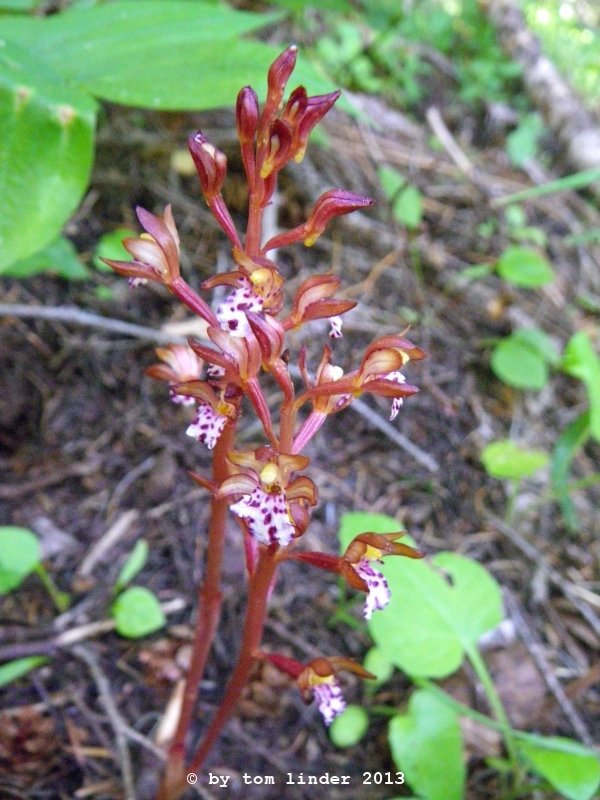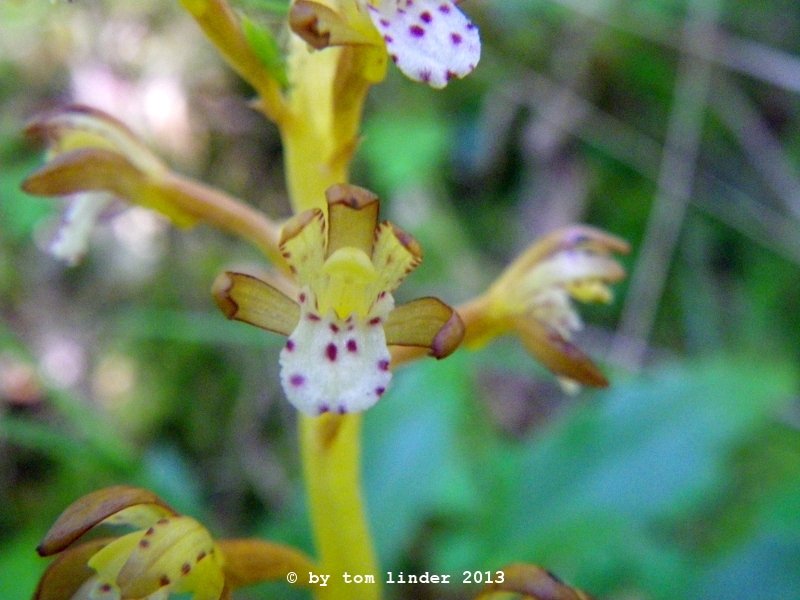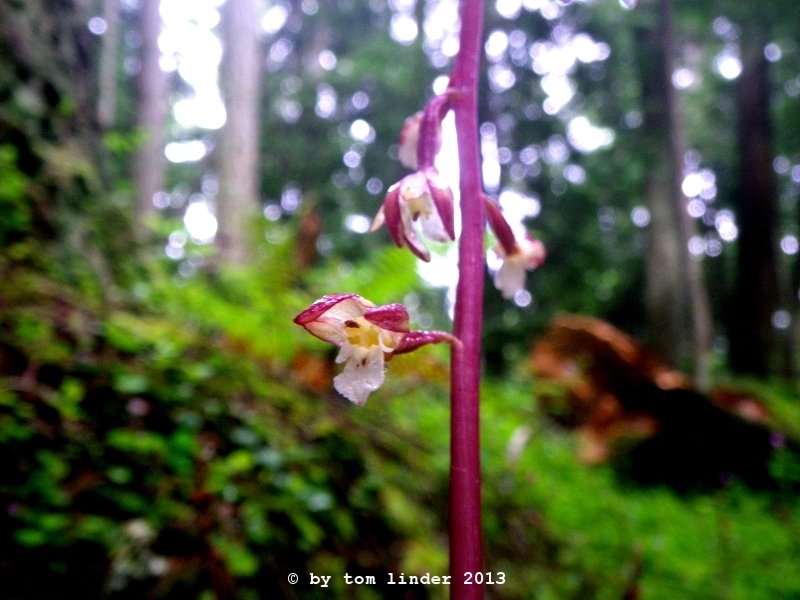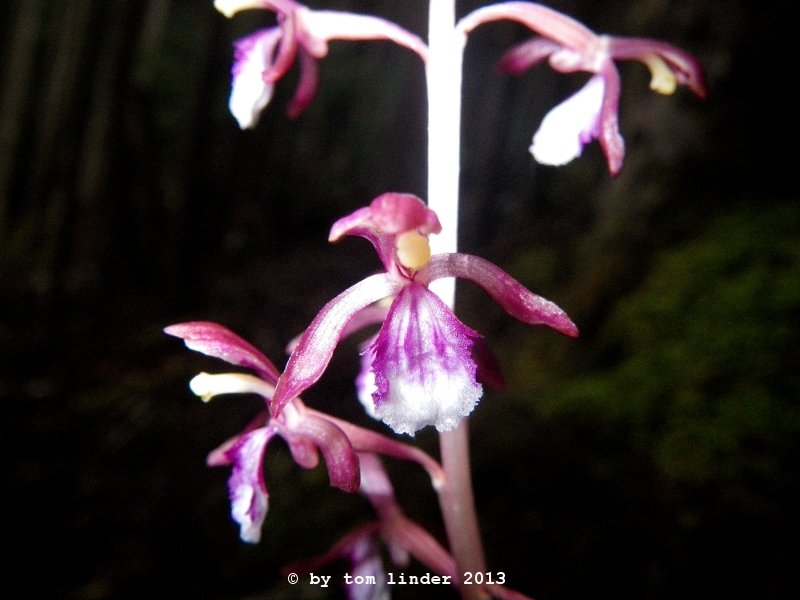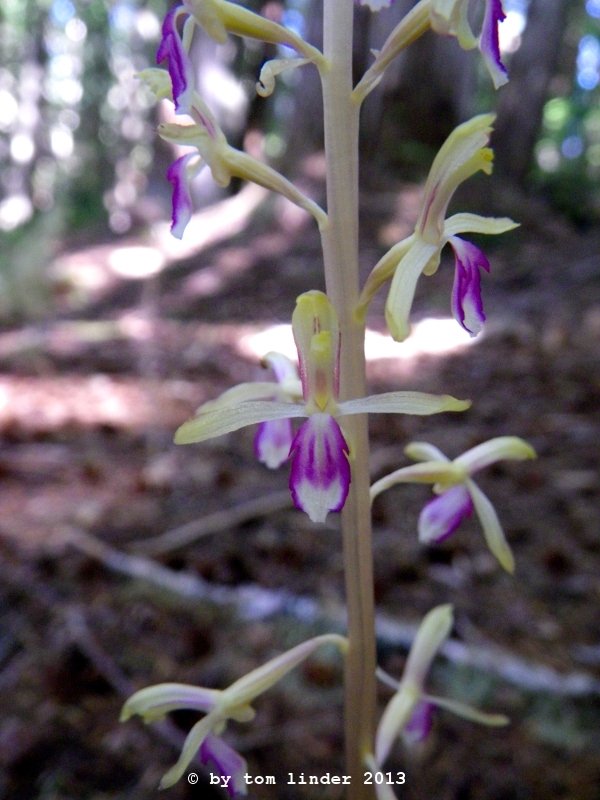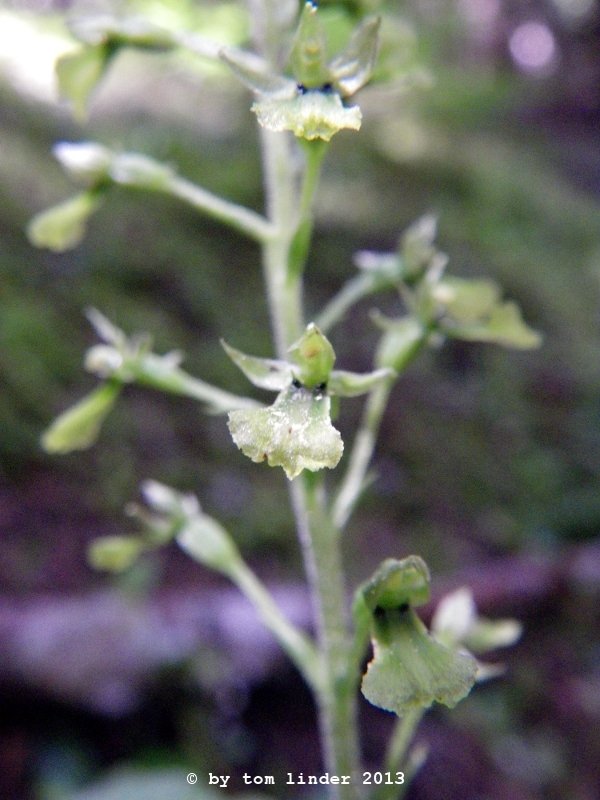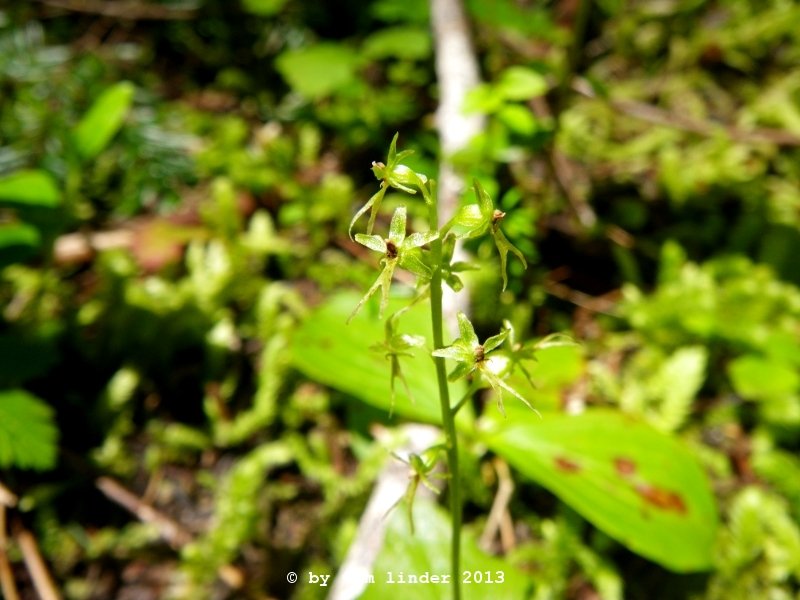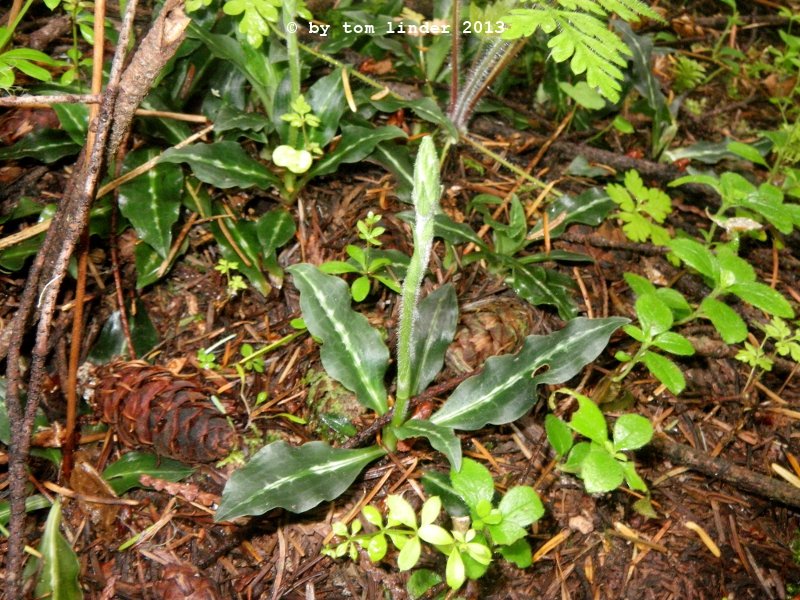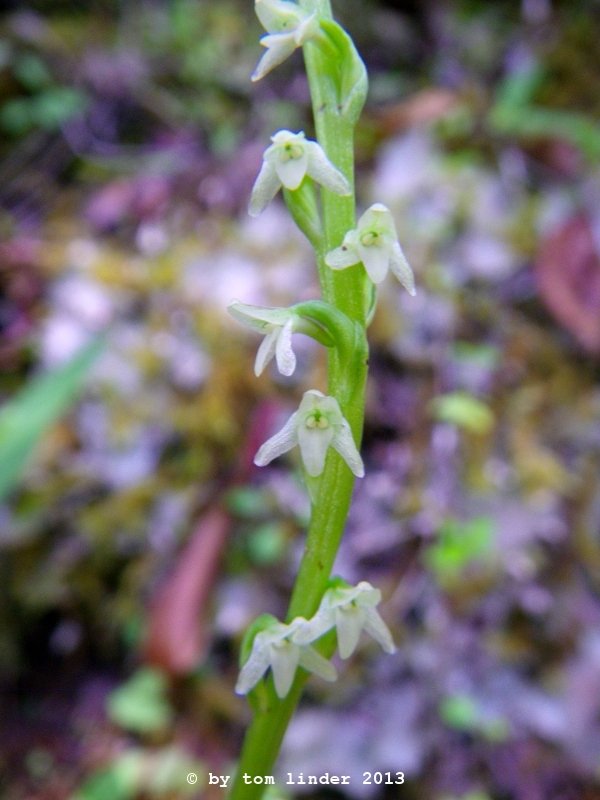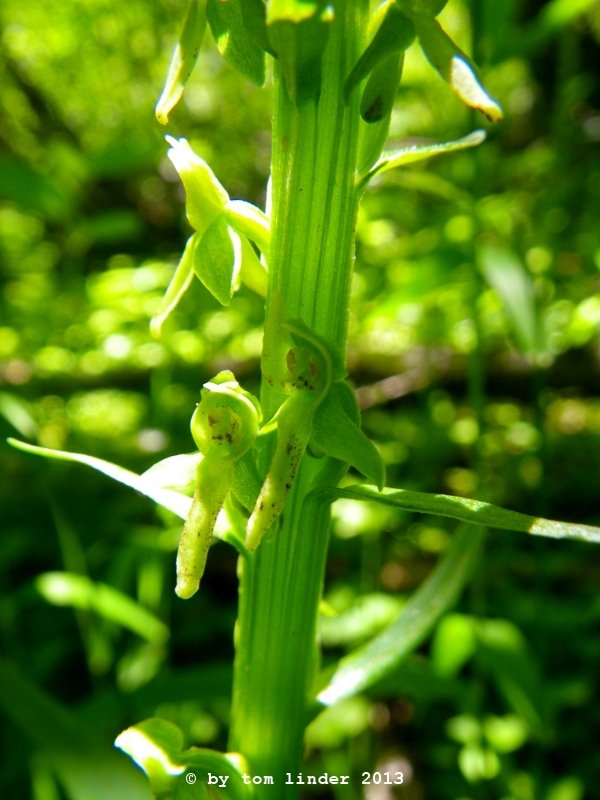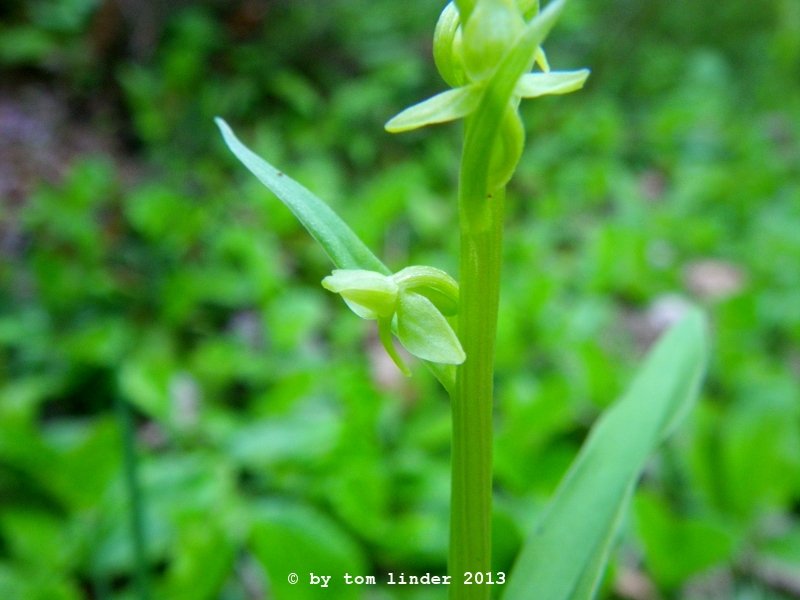Digital Herbarium
of Flowering Plants
of the Pacific North-West
Introduction:
In the summer of 2013 I visited the Pacific North-Western region of North-America, with a focus on exploring the region around Vancouver, Canada and the Olympic peninsula in the state of Washington, USA.
Already at former stays I was fascinated by the beautiful landscape with its snow-capped mountain ranges and volcanoes, dense forests, rough and rocky ocean shores and sandy beaches (Figs. 1, 2, 3).
In this terrain, situated close to the ocean, the landscape is foremost characterized by its lush and evergreen vegetation, forming especially at the West coast of the Olympic mountains an unique habitat recognized as temperate rain-forest. Such forests are formed by the mild oceanic climate, which, in combination with the elevation of the mountains, guarantees a higher than average precipitation and results subsequently in a steady supply of water and a high air humidity within the interior of the forests.
The rain-forests, but also the much drier inland forests, are chiefly formed by conifers: Western red cedar, Yellow cedar, Douglas Fir, Hemlocks and Sitka spruce
are the most prominent species. The conditions for these trees are such favorable that the Olympic peninsula is home to some of largest and oldest conifers known in North-America.
In the understorey, at streams or river-banks Red Alder or Broad-leaved Maple occur as the main species of deciduous trees, while thickets in the underbrush, at sites of disturbance or at forest edges are formed by fruiting shrubs
like species of the Rubus genus (salmonberry, blackberry, thimbleberry) or of the diverse Vaccinium genus (e.g. huckleberry, blueberry).
In some places whole areas of the underbrush are rendered impassable by patches of the heavily thorned devil's club.
Additionally, many species of ferns, mosses and lichens populate these forests and thrive well on the year-round availability of water and humidity.
Despite the dominating role of the conifers, the many flowering plants, growing at creek sides, mountain meadows, rocky ridges, road- and trailsides or just in the dense underbrush form the colorful and perfurming accents in this landscape, fascinating the observer's eye by their beauty and their intricate morphology.
Thus, equipped with a hand-lens, a basic set of maps and the very recommendable and comprehensive guide to the flora of the Pacific North-West by J. Pojar and A. McKinnon [g01], I started to explore the Olympic mountains on foot, by way of its many hiking trails. Soon this journey was transformed from a leisure trip to a botanic field-trip, as I questioned deeper into the various plants encountered on my wanderings.
With growing experience I started to locate, identify and photograph many of these wildflowers. As a result this little collection of plant images was created, inspired by a similar project, which presents plants found in my home country Germany (see Plants in NRW).
Without the ambition to be in any way complete, this collection nevertheless presents a cross-section through many of the plant families occuring in the Pacific North-West and contains some of the most interesting and beautiful species of flowering plants found in this region. But it should not go unnoticed, that due to the attractive nature of the subject, many web-sites already exist, which cover the same topic and treat the vegetation and especially the wildflowers of this region in a somewhat more comprising and professional way than I'm able to provide. Despite this obvious redundancy, I thought it would be more reasonable to publish these images, than to store and forget them on a harddisk.
The identification of the plants is based on the already mentioned work of Pojar et al. [g01] and was supplemented and augmented by various other sources, like the guide to Western forests by Whitney [g02] or the image collection of the herbarium of the University of Washington at the Burke museum [w03] (in the following referred to as the WTU image collection ).
Although many species were identified in the field, a great fraction was only identified by their photographs (see also the section about the used equipment below).
Naturally, such an approach limits the accuracy of the identification, because important characters were often not recognized at the time the picture was taken and thus were later not available for identification.
This happened in particular, when a species was encountered for the first time.
Therefore, species for which identification is regarded unsafe are marked by a "*" character in front of their name.
Most of the English plant names were also taken over from Pojar et al., again supplemented from other sources, like the English Wikipedia or the WTU image collection.
Additionally, the German plant names are mentioned where applicable.
Blooming times were mainly found in the WTU Image Collection, but it should be kept in mind that the given dates are only approximate and can vary considerably in different locations, especially in dependence on elevation.
Botanic authorship and the list of original publications were investigated for each taxon at the International Plants Name Index (IPNI) [w09].
These and other web resources, which I found quite useful for identifying, describing and distinguishing the various species from my photographs,
are listed below at World Wide Web resources.
The taxonomic ordering used in the present collection is, with minor adaptions, mainly based on the so-called Cronquist system, which I personally prefer over the more recent taxonomies, like the work of the Angiosperm Phylogeny Group (throughout the text referred to as APG). Where feasible, taxonomic alternatives or concurrent views are shortly discussed in the 'Notices' sections below each taxon entry.
Although the APG system is now regarded as a de-facto standard, as it integrates the latest result of taxonomic research with its many phylogenetic works, the resulting taxonomic framework appears still to be in state of high flux and changes frequently. Moreover, in my opinion the phylogenetic methods employed in a great share of the underlying publications can be questioned in many cases, as a lot of these research works are solely based on the comparison of ribosomal DNA/RNA (rDNA or rRNA, respectively) fragments, especially those occuring in the chloroplasts. This methodology should provide, in theory, the most accurate 'evolutionary clock', as it can be conjectured that the DNA of such an essential cellular mechanism as the ribosomes would change only slowly over time. Although such molecular methods properly delineate the relative distances of inheritance of these sequences by way of statistical probabilities, they still reflect only the matrilineal lineages of descendance, as the chloroplasts within the angiosperms are in most, if not all cases, strictly inherited from the female gametophytes. Therefore, evolutionary innovations (autapomorphies) transferred or introduced through the patrilineal lineage or by the even more important mode of recombinant, meiotic events are in most cases not taken into consideration and thus evolutionary distances, stemming from the aforementioned events and leading to many, more or less subtile and intricate adaptions and morphological variations are not well reflected by way of such strictly matrilineal phylogeny. Thus, in my humble opinion, molecular phylogeny should always be interpreted in the context of morphological/anatomical features and their respective variation, at least as long as whole genome comparisons are not available. That said, it should not get neglected, that many taxonomic works just do exactly so and use the method of molecular phylogeny as an additional tool to augment or support the finding of 'classical' comparative morphology.
I'm not an expert taxonomist, but I'm well aware, that with such a view I only reflect the opinion of a shrinking minority and naturally (or more precise, culturally) the growing trend of molecular analysis is in line with the modern trends of biology, where gene prospecting and molecular cloning has developed into a mature industry. Apparently it is easier to invest in products, like machines and chemicals, which in the very end benefit the few stakeholders of the manufacturing companies, than to spent a lot of time and financial expense in well educated taxonomists, which get along solely with a trained and scrutinizing eye, possibly augmented by an old-fashioned hand-lens or microscope.
Although I do not have the numbers of the financial support of these differing activities at hand, I can imagine this relationship resembles more a Mt. Everest beside a heap of sand...
This is certainly not meant as a condemnation of the molecular and phylogenetic technologies as a whole and I do not want to illegitimate the numerous authors and researches coping with molecular phylogeny, but I do see and experience, not at least on myself, that the way how knowledge about the real entities of nature, namely the organisms, is gathered, interpreted and compiled, has shifted to an artificial, in-silico mode, while the basic common-ground, as well as the more sophisticated knowledge about the properties and morphologies of organisms is dwindling and on its retreat within the broader community of biologists. Thus, it appears to me, especially when looking at the list of botanical authors, that most of the morphological observations and descriptions are stemming from former centuries and that the knowledge about how to observe, distinguish and interpret the intricate features of plants and other organisms is thinning out. It would for example be very interesting to do a survey among modern molecular biologists, which covers only basic taxonomic and morphological questions and watch if the outcome of such a survey supports that theses biologists still know what they are dealing with...
Anyhow, I've drifted away, as the purpose of this web site is certainly not a discussion of the somewhat philosophical issues of modern taxonomy. So concludingly, a few remarks on the used equipment and the mode of the image retrieval should be given:
All of the pictures shown were taken by an affordable digital pocket camera, which bears the advantage of being robust, water-tight, light-weight and having an easy handling, but also exhibits some disadvantages in certain situations, where more professional equipment would surely produce better results. In general, the close-up macro images are of good quality, while the half-distant shots of a plant's habitus or of panoramic views are often of minor quality.
Additionally, the light conditions in the dense forests can be found very unfavorable and it was sometimes difficult to take well adjusted photographs, as darkest shade and brightest light occured together, bordered sharply at each other and covered often a whole, single plant. Thus, problems with the white balance of the digital images were frequently encountered and often it occured, that the range of brightness was not sufficiently covered. Also, I experienced that the auto-focus function had difficulties to focus on slender plants in short distance (0,5 - 2 m), so photographs of this kind were most of the time found slightly out of focus, rendering these images worthless or of lesser quality. Another difficulty arose from my own mode of movement: As I took mostly day-long hikes of 20-25 miles, the routes demanded often precise timing. Thus, as I took a lot of photographs (sometimes more than 350 per hike), accounting for at least one minute per session, I found myself easily spending hours of just taking pictures! This time had to be subtracted from the hiking time and I had to take care to reach the daily goal or find my way back home in time. Thus, there were certainly restrictions on the time available for taking well adjusted photographs and many attractive motives were left out. The same restrictions applied also for proper identification of the plants, so that the identification was often postponed to the interpretation of the made photographs. Moreover, many trails were quite strenous and bodily exhausting, so each stop for taking pictures meant an interruption of the walking rythm and added to the heartbeat, as I had to halt, loosen and release the backpack, catch my breath, compose myself and ready the camera. This altogether rendered photographing with a calm hand in many instances problematic.
Nevertheless, may the interested visitors of this site enjoy the images, get inspired to start 'botanizing' themselves or just increase his or her awareness of these beautiful organisms on the next outdoor trip.
The photographs can freely be used for educational or personal use, as long as the copyright notice and proper referencing is kept in place. Some of the pictures were made public domain, e.g. by providing them to the Wikimedia project (available under the Commons Creative License) or the Burke Herbarium Image Collection. Larger, full quality images are available on request under the e-mail address found in the Legal & Disclaimer section.
In this terrain, situated close to the ocean, the landscape is foremost characterized by its lush and evergreen vegetation, forming especially at the West coast of the Olympic mountains an unique habitat recognized as temperate rain-forest. Such forests are formed by the mild oceanic climate, which, in combination with the elevation of the mountains, guarantees a higher than average precipitation and results subsequently in a steady supply of water and a high air humidity within the interior of the forests.
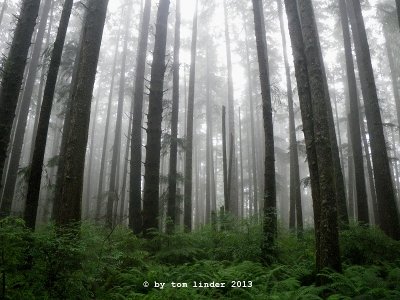 |
Fig. 1: A typical conifer forest near the Pacific coast of the Olympic peninsula, WA, USA. |
Despite the dominating role of the conifers, the many flowering plants, growing at creek sides, mountain meadows, rocky ridges, road- and trailsides or just in the dense underbrush form the colorful and perfurming accents in this landscape, fascinating the observer's eye by their beauty and their intricate morphology.
Thus, equipped with a hand-lens, a basic set of maps and the very recommendable and comprehensive guide to the flora of the Pacific North-West by J. Pojar and A. McKinnon [g01], I started to explore the Olympic mountains on foot, by way of its many hiking trails. Soon this journey was transformed from a leisure trip to a botanic field-trip, as I questioned deeper into the various plants encountered on my wanderings.
With growing experience I started to locate, identify and photograph many of these wildflowers. As a result this little collection of plant images was created, inspired by a similar project, which presents plants found in my home country Germany (see Plants in NRW).
Without the ambition to be in any way complete, this collection nevertheless presents a cross-section through many of the plant families occuring in the Pacific North-West and contains some of the most interesting and beautiful species of flowering plants found in this region. But it should not go unnoticed, that due to the attractive nature of the subject, many web-sites already exist, which cover the same topic and treat the vegetation and especially the wildflowers of this region in a somewhat more comprising and professional way than I'm able to provide. Despite this obvious redundancy, I thought it would be more reasonable to publish these images, than to store and forget them on a harddisk.
The identification of the plants is based on the already mentioned work of Pojar et al. [g01] and was supplemented and augmented by various other sources, like the guide to Western forests by Whitney [g02] or the image collection of the herbarium of the University of Washington at the Burke museum [w03] (in the following referred to as the WTU image collection ).
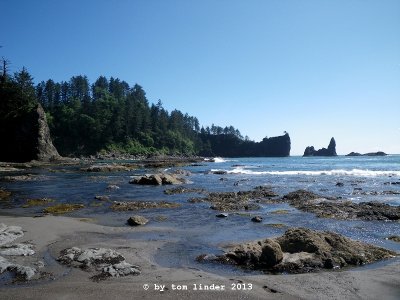 |
Fig. 2: A section of the rugged Pacific coast of the Olympic peninsula, WA, USA. |
The taxonomic ordering used in the present collection is, with minor adaptions, mainly based on the so-called Cronquist system, which I personally prefer over the more recent taxonomies, like the work of the Angiosperm Phylogeny Group (throughout the text referred to as APG). Where feasible, taxonomic alternatives or concurrent views are shortly discussed in the 'Notices' sections below each taxon entry.
Although the APG system is now regarded as a de-facto standard, as it integrates the latest result of taxonomic research with its many phylogenetic works, the resulting taxonomic framework appears still to be in state of high flux and changes frequently. Moreover, in my opinion the phylogenetic methods employed in a great share of the underlying publications can be questioned in many cases, as a lot of these research works are solely based on the comparison of ribosomal DNA/RNA (rDNA or rRNA, respectively) fragments, especially those occuring in the chloroplasts. This methodology should provide, in theory, the most accurate 'evolutionary clock', as it can be conjectured that the DNA of such an essential cellular mechanism as the ribosomes would change only slowly over time. Although such molecular methods properly delineate the relative distances of inheritance of these sequences by way of statistical probabilities, they still reflect only the matrilineal lineages of descendance, as the chloroplasts within the angiosperms are in most, if not all cases, strictly inherited from the female gametophytes. Therefore, evolutionary innovations (autapomorphies) transferred or introduced through the patrilineal lineage or by the even more important mode of recombinant, meiotic events are in most cases not taken into consideration and thus evolutionary distances, stemming from the aforementioned events and leading to many, more or less subtile and intricate adaptions and morphological variations are not well reflected by way of such strictly matrilineal phylogeny. Thus, in my humble opinion, molecular phylogeny should always be interpreted in the context of morphological/anatomical features and their respective variation, at least as long as whole genome comparisons are not available. That said, it should not get neglected, that many taxonomic works just do exactly so and use the method of molecular phylogeny as an additional tool to augment or support the finding of 'classical' comparative morphology.
I'm not an expert taxonomist, but I'm well aware, that with such a view I only reflect the opinion of a shrinking minority and naturally (or more precise, culturally) the growing trend of molecular analysis is in line with the modern trends of biology, where gene prospecting and molecular cloning has developed into a mature industry. Apparently it is easier to invest in products, like machines and chemicals, which in the very end benefit the few stakeholders of the manufacturing companies, than to spent a lot of time and financial expense in well educated taxonomists, which get along solely with a trained and scrutinizing eye, possibly augmented by an old-fashioned hand-lens or microscope.
 |
Fig. 3: View on the peaks of the Olympic mountains in the interior of the Olympic National Park, WA, USA. |
This is certainly not meant as a condemnation of the molecular and phylogenetic technologies as a whole and I do not want to illegitimate the numerous authors and researches coping with molecular phylogeny, but I do see and experience, not at least on myself, that the way how knowledge about the real entities of nature, namely the organisms, is gathered, interpreted and compiled, has shifted to an artificial, in-silico mode, while the basic common-ground, as well as the more sophisticated knowledge about the properties and morphologies of organisms is dwindling and on its retreat within the broader community of biologists. Thus, it appears to me, especially when looking at the list of botanical authors, that most of the morphological observations and descriptions are stemming from former centuries and that the knowledge about how to observe, distinguish and interpret the intricate features of plants and other organisms is thinning out. It would for example be very interesting to do a survey among modern molecular biologists, which covers only basic taxonomic and morphological questions and watch if the outcome of such a survey supports that theses biologists still know what they are dealing with...
Anyhow, I've drifted away, as the purpose of this web site is certainly not a discussion of the somewhat philosophical issues of modern taxonomy. So concludingly, a few remarks on the used equipment and the mode of the image retrieval should be given:
All of the pictures shown were taken by an affordable digital pocket camera, which bears the advantage of being robust, water-tight, light-weight and having an easy handling, but also exhibits some disadvantages in certain situations, where more professional equipment would surely produce better results. In general, the close-up macro images are of good quality, while the half-distant shots of a plant's habitus or of panoramic views are often of minor quality.
Additionally, the light conditions in the dense forests can be found very unfavorable and it was sometimes difficult to take well adjusted photographs, as darkest shade and brightest light occured together, bordered sharply at each other and covered often a whole, single plant. Thus, problems with the white balance of the digital images were frequently encountered and often it occured, that the range of brightness was not sufficiently covered. Also, I experienced that the auto-focus function had difficulties to focus on slender plants in short distance (0,5 - 2 m), so photographs of this kind were most of the time found slightly out of focus, rendering these images worthless or of lesser quality. Another difficulty arose from my own mode of movement: As I took mostly day-long hikes of 20-25 miles, the routes demanded often precise timing. Thus, as I took a lot of photographs (sometimes more than 350 per hike), accounting for at least one minute per session, I found myself easily spending hours of just taking pictures! This time had to be subtracted from the hiking time and I had to take care to reach the daily goal or find my way back home in time. Thus, there were certainly restrictions on the time available for taking well adjusted photographs and many attractive motives were left out. The same restrictions applied also for proper identification of the plants, so that the identification was often postponed to the interpretation of the made photographs. Moreover, many trails were quite strenous and bodily exhausting, so each stop for taking pictures meant an interruption of the walking rythm and added to the heartbeat, as I had to halt, loosen and release the backpack, catch my breath, compose myself and ready the camera. This altogether rendered photographing with a calm hand in many instances problematic.
Nevertheless, may the interested visitors of this site enjoy the images, get inspired to start 'botanizing' themselves or just increase his or her awareness of these beautiful organisms on the next outdoor trip.
The photographs can freely be used for educational or personal use, as long as the copyright notice and proper referencing is kept in place. Some of the pictures were made public domain, e.g. by providing them to the Wikimedia project (available under the Commons Creative License) or the Burke Herbarium Image Collection. Larger, full quality images are available on request under the e-mail address found in the Legal & Disclaimer section.
Authors and corresponding publications of botanical names: * see notice
Notice on notation:
Aiton - William Aiton 1731-1793
Andrews - Henry Charles Andrews, 1794-1830
Baker - John Gilbert Baker, 1834-1920
Banks - Joseph Banks, 1743-1820
Barton - Benjamin Smith Barton, 1766-1815; 1803
W. Bart. - William Bartram, 1739–1823,
W.P.C. Barton - William Paul Crillon Barton, 1786-1856
Batsch - August Johann Georg Karl Batsch, 1761-1802
Benth. - George Bentham, 1800-1884
Bercht. - Bedřich (Friedrich) Všemír (Wssemjr) von Berchtold, 1781-1876
Bernh. - Johann Jakob Bernhardi, 1774-1850
E.P. Bicknell - Eugene Pintard Bicknell, 1859-1925
Bong. - August Gustav Heinrich von Bongard, 1786-1839
Borkh. - Moritz (Moriz) Balthasar Borkhausen, 1760-1806
P.M. Br. - Paul Martin Brown
R. Br. - Robert Brown, 1773-1858
Britton - Nathaniel Lord Britton, 1859-1934
Burnett - Gilbert Thomas Burnett, 1800-1835
Cham. - Ludolf Karl Adelbert von Chamisso, 1781-1838
J.M. Coult. - John Merle Coulter, 1851-1928
A. DC. - Alphonse Louis Pierre Pyramus de Candolle, 1806-1893
DC. - Augustin Pyramus de Candolle, 1778-1841
Desf. - René Louiche Desfontaines, 1750-1833
D. Don - David Don, 1799-1841
Douglas - David Douglas, 1799-1834
Fisch. - Friedrich Ernst Ludwig (Fedor Bogdanovic) von Fischer, 1782-1854
Fraga. - Naomi S. Fraga
Gagnebin - Abraham Gagnebin (de la Ferrière), 1707-1800
Geyer - Carl (Charles) Andreas Geyer, 1809-1853
A. Gray - Asa Gray, 1810-1888
Gray - Samuel Frederick Gray, 1766-1828
Greene - Edward Lee Greene, 1843-1915
Haeckel - Ernst Heinrich Philipp August Haeckel, 1834-1919
Hanson - Peter Hanson, 1824-1887
A. Heller - Amos Arthur Heller, 1867-1944
J. St.-Hil. - Jean Henri Jaume Saint-Hilaire, 1772-1845
Holz. - John Michael Holzinger, 1853-1929
Hook. - William Jackson Hooker, 1785-1865
Hort. - Hortulanorum, meaning 'of gardeners'
House - Homer Doliver House, 1878-1949
Hultéen - Oskar Eric Gunnar Hultén, 1894-1981
Judd - Walter Stephen Judd, 1951-
Juss. - Antoine Laurent de Jussieu, 1748-1836
Kunth - Karl (Carl) Sigismund Kunth, 1788-1850
L. - Carl Linnaeus (Carl von Linné), 1707-1780
L. f. - Carl von Linnaeus filius (Carl von Linné, Carl Linnaeus), 1741-1783
Lindl. - John Lindley, 1799-1865
Link - Johann Heinrich Friedrich Link, 1767-1851
Martinov - Ivan Ivanovič Martinov (Ivan Ivanovich Martynov, Jean Martinoff), 1771-1833
A.R. Mast - Austin R. Mast, 1972-
Menzies - Archibald Menzies, 1754-1842
C. A. Mey. - Carl Anton (Andreevič) von Meyer, 1795-1855
Michx. - André Michaux, 1746-1802
Miq. - Friedrich Anton Wilhelm Miquel, 1811-1871
Mutis - José Celestino Bruno Mutis (José Celestino Bruno Mutis y Bosio), 1732-1808
G.L. Nesom - Guy L. Nesom, 1945-
Nutt. - Thomas Nuttall, 1786-1859
Oakes - William Oakes, 1799-1848
Piper - Charles Vancouver Piper, 1867-1926
Poir. - Jean Louis Marie Poiret, 1755-1834
J. Presl - Jan Svatopluk (Swatopluk) Presl, 1791-1849
Pursh - Friedrich Traugott Pursh (Pursch), 1774-1820
Raf. - Constantine Samuel Rafinesque, 1783-1840
Reveal - James Lauritz Reveal, 1941-
Rich. - Louis Claude Marie Richard, 1754-1821
Richardson - John Richardson, 1787-1865
Rose - Joseph Nelson Rose, 1862-1928
Rydb. -
Salisb. - Richard Anthony Salisbury, 1761-1829
Schltdl. - Diederich Franz Leonhard von Schlechtendal, 1794-1866
Schmidel - Casimir Christoph Schmidel, 1718-1792
Schott - Heinrich Wilhelm Schott, 1794-1865
W.J. Schrenk - Willi Jürgen Schrenk, 1945-
Schult. - Josef (Joseph) August Schultes, 1773-1831
Schult. f. - Julius Hermann Schultes, 1804-1840
Sealy - Joseph Robert Sealy, 1907-
Sheviak -
Small - John Kunkel Small 1869-1938
Sm. - James Edward Smith, 1759-1828
Spreng. - Kurt (Curt) Polycarp Joachim Sprengel
H.St.John - Harold St.John, 1892-1991
Torr. - John Torrey, 1796-1873
Tisch - Edward L. Tisch
Traub - Hamilton Paul Traub, 1890-1983
Vail - Anna Murray Vail, 1863-1955
Van Houtte - Louis Benoît Van Houtte, 1810-1876
Walp. - Wilhelm Gerhard Walpers, 1816-1853
Walter - Thomas Walter, 1740-1789
S. Watson - Sereno Watson, 1826-1892
Wiegand - Karl McKay Wiegand, 1873-1942
F. H. Wigg. - Friedrich Heinrich (Fridrich Hindrich) Wiggers (Wichers), 1746-1811
Willd. - Carl Ludwig von Willdenow, 1765-1812
Zomlefer - Wendy Beth Zomlefer, 1954-
Veratrum viride - 'Hortus Kewensis; or, a Catalogue of the Plants Cultivated in the Royal Botanic Garden at Kew.', (Hortus Kew.), London, 3:422, 1789
Andrews - Henry Charles Andrews, 1794-1830
Baker - John Gilbert Baker, 1834-1920
Lilium columbianum - 'Journal of the Linnean Society. Botany.', (Journ. Linn. Soc.), London, 14:243, 1874
Banks - Joseph Banks, 1743-1820
Barton - Benjamin Smith Barton, 1766-1815; 1803
W. Bart. - William Bartram, 1739–1823,
W.P.C. Barton - William Paul Crillon Barton, 1786-1856
Batsch - August Johann Georg Karl Batsch, 1761-1802
Violaceae - 'Tabula Affinitatum Regni Vegetabilis', (Tab. Affin. Regni Veg.), 57, 1802
Benth. - George Bentham, 1800-1884
Phlox diffusa - 'Plantas Hartwegianas imprimis Mexicanas...', (Pl. Hartw.), Londini [London], 325(-326), 1849
Castilleja hispida - 'Flora Boreali-Americana; or, the botany of the northern parts of British America...', (Fl. Bor.-Amer.), [Hooker], 2:105, 1838
Castilleja hispida - 'Flora Boreali-Americana; or, the botany of the northern parts of British America...', (Fl. Bor.-Amer.), [Hooker], 2:105, 1838
Bercht. - Bedřich (Friedrich) Všemír (Wssemjr) von Berchtold, 1781-1876
Cornaceae, J. Presl & Bercht., nom. cons. - 'O Prirozenosti Rostlin, obsahugjcj gednanj o ziwobitj rostlin...', (Prir. Rostlin), 2(23*):91/92, 1825
Asteraceae, J. Presl & Bercht., nom. cons. - 'O Prirozenosti Rostlin, obsahugjcj gednanj o ziwobitj rostlin...', (Prir. Rostlin), 254, 1820
Asteraceae, J. Presl & Bercht., nom. cons. - 'O Prirozenosti Rostlin, obsahugjcj gednanj o ziwobitj rostlin...', (Prir. Rostlin), 254, 1820
Bernh. - Johann Jakob Bernhardi, 1774-1850
Dicentra, nom. cons. - 'Linnaea; Ein Journal für die Botanik in ihrem ganzen Umfange', (Linnaea), Berlin, 8:457, 468, 1833
E.P. Bicknell - Eugene Pintard Bicknell, 1859-1925
Sisyrinchium idahoense - 'Bulletin of the Torrey Botanical Club.', (Bull. Torrey Bot. Club), New York, USA, 445, 1899
Bong. - August Gustav Heinrich von Bongard, 1786-1839
Corallorhiza mertensiana - 'Mémoires de l'Academie Imperiale des Sciences de St.-Pétersbourg. Sixieme Serie. Sciences Mathematiques, Physiques et Naturelles', (Mém. Acad. Imp. Sci. St.-Pétersbourg, Sér. 6, Sci. Math.), 2:165, 1832
Borkh. - Moritz (Moriz) Balthasar Borkhausen, 1760-1806
Primulaceae, nom. cons. - 'Botanisches Wörterbuch: oder, Versuch einer Erklärung der vornehmsten Begriffe und Kunstwörter in der Botanick.', (Bot. Wörterb.), Giessen, 2:240, 1797
Melanthiaceae, nom. cons. - 'Botanisches Wörterbuch: oder, Versuch einer Erklärung der vornehmsten Begriffe und Kunstwörter in der Botanick.', (Bot. Wörterb.), Giessen, 2:8, 1797
Melanthiaceae, nom. cons. - 'Botanisches Wörterbuch: oder, Versuch einer Erklärung der vornehmsten Begriffe und Kunstwörter in der Botanick.', (Bot. Wörterb.), Giessen, 2:8, 1797
P.M. Br. - Paul Martin Brown
Corallorhiza maculata f. rubra - 'North American Native Orchid Journal.', (N. Amer. Native Orchid J.), Brighton, MA, USA, 1(1):8-9, 1995
Corallorhiza mertensiana f. albolabia - 'North American Native Orchid Journal.', (N. Amer. Native Orchid J.), Brighton, MA, USA, 1(1):9, 1995
Corallorhiza mertensiana f. pallida - 'North American Native Orchid Journal.', (N. Amer. Native Orchid J.), Brighton, MA, USA, 1(3):197, 1995
Corallorhiza mertensiana f. albolabia - 'North American Native Orchid Journal.', (N. Amer. Native Orchid J.), Brighton, MA, USA, 1(1):9, 1995
Corallorhiza mertensiana f. pallida - 'North American Native Orchid Journal.', (N. Amer. Native Orchid J.), Brighton, MA, USA, 1(3):197, 1995
R. Br. - Robert Brown, 1773-1858
Pyrola menziesii, the basionym of Chimaphila menziesii - 'Memoirs of the Wernerian Natural History Society', (Mem. Wern. Nat. Hist. Soc.), Edinburgh, 5:245, 1824
Goodyera - 'Hortus Kewensis; or, a Catalogue of the Plants Cultivated in the Royal Botanic Garden at Kew. London', (Hortus Kew.) [W.T. Aiton], ed. 2, 5:197, 1813
Hydrophyllaceae, nom. cons. - 'Botanical Register; Consisting of Coloured Figures of Exotic Plants Cultivated in British Gardens; with their History and Mode of Treatment.', (Bot. Reg.), London, 3:ad t. 242, 1817
Listera - 'Hortus Kewensis; or, a Catalogue of the Plants Cultivated in the Royal Botanic Garden at Kew. London', (Hortus Kew.) [W.T. Aiton], ed. 2, 5:201, 1813
Listera cordata - 'Hortus Kewensis; or, a Catalogue of the Plants Cultivated in the Royal Botanic Garden at Kew. London', (Hortus Kew.) [W.T. Aiton], ed. 2, 5:201, 1813
Oxalidaceae, nom. cons. - 'Narrative of an Expedition to Explore the River Zaire, usually called the Congo in South Africa, in 1816, Under the Direction of Captain J. K. [sic, for H.] Tuckey, R.N. To Which is Added the Journal of Professor Smith...', (Narr. Exped. Zaire), London, 433, 1818
Goodyera - 'Hortus Kewensis; or, a Catalogue of the Plants Cultivated in the Royal Botanic Garden at Kew. London', (Hortus Kew.) [W.T. Aiton], ed. 2, 5:197, 1813
Hydrophyllaceae, nom. cons. - 'Botanical Register; Consisting of Coloured Figures of Exotic Plants Cultivated in British Gardens; with their History and Mode of Treatment.', (Bot. Reg.), London, 3:ad t. 242, 1817
Listera - 'Hortus Kewensis; or, a Catalogue of the Plants Cultivated in the Royal Botanic Garden at Kew. London', (Hortus Kew.) [W.T. Aiton], ed. 2, 5:201, 1813
Listera cordata - 'Hortus Kewensis; or, a Catalogue of the Plants Cultivated in the Royal Botanic Garden at Kew. London', (Hortus Kew.) [W.T. Aiton], ed. 2, 5:201, 1813
Oxalidaceae, nom. cons. - 'Narrative of an Expedition to Explore the River Zaire, usually called the Congo in South Africa, in 1816, Under the Direction of Captain J. K. [sic, for H.] Tuckey, R.N. To Which is Added the Journal of Professor Smith...', (Narr. Exped. Zaire), London, 433, 1818
Britton - Nathaniel Lord Britton, 1859-1934
Disporum hookeri - 'Bulletin of the Torrey Botanical Club. New York', (Bull. Torrey Bot. Club), New York, USA, 15:188, 1888
Burnett - Gilbert Thomas Burnett, 1800-1835
Brassicaceae, nom. cons. - 'Outlines of Botany.', (Outlines Bot.), London, 854/1093/1123, 1835
Cham. - Ludolf Karl Adelbert von Chamisso, 1781-1838
Rubus ursinus, Cham. & Schltdl. - 'Linnaea; Ein Journal für die Botanik in ihrem ganzen Umfange.', (Linnaea), Berlin, 2(1):11, 1827
J.M. Coult. - John Merle Coulter, 1851-1928
Lomatium martindalei, J.M. Coult. & Rose - 'Contributions from the United States National Herbarium. Smithsonian Institution', (Contr. U.S. Natl. Herb.), 7:225, 1900
A. DC. - Alphonse Louis Pierre Pyramus de Candolle, 1806-1893
Campanula scouleri - 'Monographie des Campanulees...avec Vingt Planches', (Monogr. Campan.), 312, 1830
DC. - Augustin Pyramus de Candolle, 1778-1841
Aster foliaceus - 'Prodromus Systematis Naturalis Regni Vegetabilis...', (Prodr.), [A. P. de Candolle], 5:228, 1836
Achlys - 'Regni Vegetabilis Systema Naturale, sive Ordines, Genera et Species Plantarum Secundum Methodi Naturalis Normas Digestarum et Descriptarum.', (Syst. Nat.), [Candolle], 2:35, 1821
Achlys triphylla - 'Regni Vegetabilis Systema Naturale, sive Ordines, Genera et Species Plantarum Secundum Methodi Naturalis Normas Digestarum et Descriptarum.', (Syst. Nat.), [Candolle], 2:35, 1821
Aquilegia formosa - 'Prodromus Systematis Naturalis Regni Vegetabilis...', (Prodr.), [A. P. de Candolle], 1:50, 1824
Caltha leptosepala - 'Regni Vegetabilis Systema Naturale, sive Ordines, Genera et Species Plantarum Secundum Methodi Naturalis Normas Digestarum et Descriptarum.', (Syst. Nat.), [Candolle], Paris, 1:310, 1817
Lonicera ciliosa - 'Prodromus Systematis Naturalis Regni Vegetabilis...', (Prodr.), [A. P. de Candolle], 4:333, 1830
Mimulus guttatus - 'Catalogus Plantarum Horti Botanici Monspeliensis', (Cat. Pl. Horti Monsp.), 127, 1813
Achlys - 'Regni Vegetabilis Systema Naturale, sive Ordines, Genera et Species Plantarum Secundum Methodi Naturalis Normas Digestarum et Descriptarum.', (Syst. Nat.), [Candolle], 2:35, 1821
Achlys triphylla - 'Regni Vegetabilis Systema Naturale, sive Ordines, Genera et Species Plantarum Secundum Methodi Naturalis Normas Digestarum et Descriptarum.', (Syst. Nat.), [Candolle], 2:35, 1821
Aquilegia formosa - 'Prodromus Systematis Naturalis Regni Vegetabilis...', (Prodr.), [A. P. de Candolle], 1:50, 1824
Caltha leptosepala - 'Regni Vegetabilis Systema Naturale, sive Ordines, Genera et Species Plantarum Secundum Methodi Naturalis Normas Digestarum et Descriptarum.', (Syst. Nat.), [Candolle], Paris, 1:310, 1817
Lonicera ciliosa - 'Prodromus Systematis Naturalis Regni Vegetabilis...', (Prodr.), [A. P. de Candolle], 4:333, 1830
Mimulus guttatus - 'Catalogus Plantarum Horti Botanici Monspeliensis', (Cat. Pl. Horti Monsp.), 127, 1813
Desf. - René Louiche Desfontaines, 1750-1833
Smilacina, nom. cons. - 'Annales du Museum National d'Histoire Naturelle.', (Ann. Mus. Natl. Hist. Nat.), Paris, 9:51, 1807
Smilacina racemosa, nom. cons. - 'Annales du Museum National d'Histoire Naturelle.', (Ann. Mus. Natl. Hist. Nat.), Paris, 9:51, 1807
Smilacina stellata, nom. cons. - 'Annales du Museum National d'Histoire Naturelle.', (Ann. Mus. Natl. Hist. Nat.), Paris, 9:52, 1807
Smilacina racemosa, nom. cons. - 'Annales du Museum National d'Histoire Naturelle.', (Ann. Mus. Natl. Hist. Nat.), Paris, 9:51, 1807
Smilacina stellata, nom. cons. - 'Annales du Museum National d'Histoire Naturelle.', (Ann. Mus. Natl. Hist. Nat.), Paris, 9:52, 1807
D. Don - David Don, 1799-1841
Pyrola menziesii, the basionym of Chimaphila menziesii - 'Memoirs of the Wernerian Natural History Society', (Mem. Wern. Nat. Hist. Soc.), Edinburgh, 5:245, 1824
Prosartes - 'Proceedings of the Linnean Society of London', (Proc. Linn. Soc.), 1:48, 1839
Prosartes - 'Proceedings of the Linnean Society of London', (Proc. Linn. Soc.), 1:48, 1839
Douglas - David Douglas, 1799-1834
Fisch. - Friedrich Ernst Ludwig (Fedor Bogdanovic) von Fischer, 1782-1854
Trautvetteria, Fisch. & C.A. Mey. - 'Linnaea; Ein Journal für die Botanik in ihrem ganzen Umfange', (Linnaea), Berlin, 10(Lit.):82, 1836
Fraga. - Naomi S. Fraga
Erythranthe lewisii, G.L. Nesom & N.S. Fraga - 'Phytoneuron. Digital Publications in Plant Biology', (Phytoneuron), 2012-39:36, 2012
Gagnebin - Abraham Gagnebin (de la Ferrière), 1707-1800
Corallorhiza nom. et. orth. c - 'Acta Helvetica, Physico-Mathematico-Anatomico-Botanico-Medica', (Acta Helv. Phys.-Math.), Basel, 2:61, 1755
Geyer - Carl (Charles) Andreas Geyer, 1809-1853
A. Gray - Asa Gray, 1810-1888
Allotropa, Torr. & A. Gray - 'Explorations and Surveys for a Railroad Route from the Mississippi River to the Pacific Ocean. Description of the Mosses and Liverworts',
(Pacif. Railr. Rep.), [Williamson & Abbot], 6(3, Nos. 1-2), 81, 1858
Allotropa virgata, Torr. & A. Gray - 'Explorations and Surveys for a Railroad Route from the Mississippi River to the Pacific Ocean. Description of the Mosses and Liverworts',
(Pacif. Railr. Rep.), [Williamson & Abbot], 6(3, Nos. 1-2), 80, footnote (-81, footnote), 1858
Douglasia laevigata - 'Proceedings of the American Academy of Arts and Sciences.', (Proc. Amer. Acad. Arts), Boston, MA, USA, 16:105, 1880
Hemitomes - 'Explorations and Surveys for a Railroad Route from the Mississippi River to the Pacific Ocean. Description of the Mosses and Liverworts',
(Pacif. Railr. Rep.), [Williamson & Abbot], 6(3, Nos. 1-2), 80, t.12, 1858
Hemitomes congestum - 'Explorations and Surveys for a Railroad Route from the Mississippi River to the Pacific Ocean. Description of the Mosses and Liverworts',
(Pacif. Railr. Rep.), [Williamson & Abbot], 6(3, Nos. 1-2), 80, t.81, 1858
Moneses uniflora - 'Manual of the Botany of the Northern United States, from New England to Wisconsin and South to Ohio and Pennsylvania Inclusive', 273, 1848
Oxalis oregana, Torr. & A. Gray - 'Flora of North America, A',
(Fl. N. Amer.), [Torrey & A. Gray], 1:211, 1838
Phacelia sericea - '', (Amer. J. Sci. Ser. II), 34:254, 1862
Stenanthium occidentale - 'Proceedings of the American Academy of Arts and Sciences.', (Proc. Amer. Acad. Arts), Boston, MA, USA, 8:405, 1873
Thalictrum occidentale - 'Proceedings of the American Academy of Arts and Sciences.', (Proc. Amer. Acad. Arts), Boston, MA, USA, 7:372, 1872
(Pacif. Railr. Rep.), [Williamson & Abbot], 6(3, Nos. 1-2), 81, 1858
Allotropa virgata, Torr. & A. Gray - 'Explorations and Surveys for a Railroad Route from the Mississippi River to the Pacific Ocean. Description of the Mosses and Liverworts',
(Pacif. Railr. Rep.), [Williamson & Abbot], 6(3, Nos. 1-2), 80, footnote (-81, footnote), 1858
Douglasia laevigata - 'Proceedings of the American Academy of Arts and Sciences.', (Proc. Amer. Acad. Arts), Boston, MA, USA, 16:105, 1880
Hemitomes - 'Explorations and Surveys for a Railroad Route from the Mississippi River to the Pacific Ocean. Description of the Mosses and Liverworts',
(Pacif. Railr. Rep.), [Williamson & Abbot], 6(3, Nos. 1-2), 80, t.12, 1858
Hemitomes congestum - 'Explorations and Surveys for a Railroad Route from the Mississippi River to the Pacific Ocean. Description of the Mosses and Liverworts',
(Pacif. Railr. Rep.), [Williamson & Abbot], 6(3, Nos. 1-2), 80, t.81, 1858
Moneses uniflora - 'Manual of the Botany of the Northern United States, from New England to Wisconsin and South to Ohio and Pennsylvania Inclusive', 273, 1848
Oxalis oregana, Torr. & A. Gray - 'Flora of North America, A',
(Fl. N. Amer.), [Torrey & A. Gray], 1:211, 1838
Phacelia sericea - '', (Amer. J. Sci. Ser. II), 34:254, 1862
Stenanthium occidentale - 'Proceedings of the American Academy of Arts and Sciences.', (Proc. Amer. Acad. Arts), Boston, MA, USA, 8:405, 1873
Thalictrum occidentale - 'Proceedings of the American Academy of Arts and Sciences.', (Proc. Amer. Acad. Arts), Boston, MA, USA, 7:372, 1872
Gray - Samuel Frederick Gray, 1766-1828
Moneses - 'Natural Arrangement of British Plants, According to Their Relation to Each Other, as Pointed Out by Jussieu, De Candolle, Brown &c.', (Nat. Arr. Brit. Pl.), London, 2:396, 403, 1821
Greene - Edward Lee Greene, 1843-1915
Delphinium glareosum - 'Pittonia; a Series of Papers Relating to Botany and Botanists.', (Pittonia), Berkeley, CA, USA, 3:257, 1898
Penstemon davidsonii - 'Pittonia; a Series of Papers Relating to Botany and Botanists.', (Pittonia), Berkeley, CA, USA, 2:241, 1892
Penstemon davidsonii - 'Pittonia; a Series of Papers Relating to Botany and Botanists.', (Pittonia), Berkeley, CA, USA, 2:241, 1892
Haeckel - Ernst Heinrich Philipp August Haeckel, 1834-1919
Hanson - Peter Hanson, 1824-1887
A. Heller - Amos Arthur Heller, 1867-1944
Hydrophyllum tenuipes - 'Bulletin of the Torrey Botanical Club.', (Bull. Torrey Bot. Club), New York, 25:582, 1898
Stachys cooleyae - 'Bulletin of the Torrey Botanical Club.', (Bull. Torrey Bot. Club), New York, 26:590, 1899
Stachys cooleyae - 'Bulletin of the Torrey Botanical Club.', (Bull. Torrey Bot. Club), New York, 26:590, 1899
J. St.-Hil. - Jean Henri Jaume Saint-Hilaire, 1772-1845
Amaryllidaceae, nom. cons. - 'Exposition des Familles Naturelles...Paris (chez Treuttel et Würtz, ...), Strasbourg (meme Maison de Commerce)', (Expos. Fam. Nat.), 1:134, 1805
Holz. - John Michael Holzinger, 1853-1929
Viola orbiculata - 'Contributions from the United States National Herbarium.', (Contr. U.S. Natl. Herb.), Smithsonian Institution, 3(4):214(-215), 1895
Hook. - William Jackson Hooker, 1785-1865
Trientalis latifolia - 'Flora Boreali-Americana; or, the botany of the northern parts of British America...', (Fl. Bor.-Amer.), [Hooker], 2:121, 1838
Hort. - Hortulanorum, meaning 'of gardeners'
House - Homer Doliver House, 1878-1949
Orthilia secunda - 'American Midland Naturalist; devoted to natural history, primarily that of the prairie states', (Amer. Midl. Naturalist), 7(4-5):134, 1921
Hultéen - Oskar Eric Gunnar Hultén, 1894-1981
Lysichiton americanus, Hultén & H.St.John - 'Svensk Botanisk Tidskrift Utgifven af Svenska Botaniska Foreningen.', (Svensk Bot. Tidskr.), Stockholm, 25:455, fig. 1,2, pl. 4., 1931
Judd - Walter Stephen Judd, 1951-
Anticlea occidentalis, Zomlefer & Judd - 'Novon; a Journal for Botanical Nomenclature.', (Novon), St. Louis, MO, USA, 12(2):303, 2001
Juss. - Antoine Laurent de Jussieu, 1748-1836
Araliaceae, nom. cons. - Genera Plantarum (Gen. Pl.), 40, 1789
Aristolochiaceae, nom. cons. - Genera Plantarum (Gen. Pl.), 72, 1789
Asparagaceae, nom. cons. - Genera Plantarum (Gen. Pl.), 217, 1789
Berberidaceae, nom. cons. - Genera Plantarum (Gen. Pl.), 286, 1789
Campanulaceae, nom. cons. - Genera Plantarum (Gen. Pl.), 163, 1789
Caryophyllaceae, nom. cons. - Genera Plantarum (Gen. Pl.), 299, 1789
Caprifoliaceae, nom. cons. - Genera Plantarum (Gen. Pl.), 210, 1789
Ericaceae, nom. cons. - Genera Plantarum (Gen. Pl.), 159, 1789
Geraniaceae, nom. cons. - Genera Plantarum (Gen. Pl.), 268, 1789
Iridaceae, nom. cons. - Genera Plantarum (Gen. Pl.), 57, 1789
Labiatae, nom. cons. - Genera Plantarum (Gen. Pl.), 110, 1789
Liliaceae, nom. cons. - Genera Plantarum (Gen. Pl.), 48, 1789
Orchidaceae, nom. cons. - Genera Plantarum (Gen. Pl.), 64, 1789
Papaveraceae, nom. cons. - Genera Plantarum (Gen. Pl.), 235, 1789
Phacelia - Genera Plantarum (Gen. Pl.), 129, 1789
Polemoniaceae, nom. cons. - Genera Plantarum (Gen. Pl.), 136, 1789
Portulacaceae, nom. cons. - Genera Plantarum (Gen. Pl.), 312, 1789
Ranunculaceae, nom. cons. - Genera Plantarum (Gen. Pl.), 231, 1789
Rosaceae, nom. cons. - Genera Plantarum (Gen. Pl.), 334, 1789
Saxifragaceae, nom. cons. - Genera Plantarum (Gen. Pl.), 308, 1789
Scrophulariaceae, nom. cons. - Genera Plantarum (Gen. Pl.), 117, 1789
Solanaceae, nom. cons. - Genera Plantarum (Gen. Pl.), 124, 1789
Aristolochiaceae, nom. cons. - Genera Plantarum (Gen. Pl.), 72, 1789
Asparagaceae, nom. cons. - Genera Plantarum (Gen. Pl.), 217, 1789
Berberidaceae, nom. cons. - Genera Plantarum (Gen. Pl.), 286, 1789
Campanulaceae, nom. cons. - Genera Plantarum (Gen. Pl.), 163, 1789
Caryophyllaceae, nom. cons. - Genera Plantarum (Gen. Pl.), 299, 1789
Caprifoliaceae, nom. cons. - Genera Plantarum (Gen. Pl.), 210, 1789
Ericaceae, nom. cons. - Genera Plantarum (Gen. Pl.), 159, 1789
Geraniaceae, nom. cons. - Genera Plantarum (Gen. Pl.), 268, 1789
Iridaceae, nom. cons. - Genera Plantarum (Gen. Pl.), 57, 1789
Labiatae, nom. cons. - Genera Plantarum (Gen. Pl.), 110, 1789
Liliaceae, nom. cons. - Genera Plantarum (Gen. Pl.), 48, 1789
Orchidaceae, nom. cons. - Genera Plantarum (Gen. Pl.), 64, 1789
Papaveraceae, nom. cons. - Genera Plantarum (Gen. Pl.), 235, 1789
Phacelia - Genera Plantarum (Gen. Pl.), 129, 1789
Polemoniaceae, nom. cons. - Genera Plantarum (Gen. Pl.), 136, 1789
Portulacaceae, nom. cons. - Genera Plantarum (Gen. Pl.), 312, 1789
Ranunculaceae, nom. cons. - Genera Plantarum (Gen. Pl.), 231, 1789
Rosaceae, nom. cons. - Genera Plantarum (Gen. Pl.), 334, 1789
Saxifragaceae, nom. cons. - Genera Plantarum (Gen. Pl.), 308, 1789
Scrophulariaceae, nom. cons. - Genera Plantarum (Gen. Pl.), 117, 1789
Solanaceae, nom. cons. - Genera Plantarum (Gen. Pl.), 124, 1789
Kunth - Karl (Carl) Sigismund Kunth, 1788-1850
Anticlea - 'Enumeratio Plantarum Omnium Hucusque Cognitarum, Secundum Familias Naturales Disposita, Adjectis Characteribus, Differntiis et Synonymis.', (Enum. Pl.), [Kunth], Stutgardiae et Tubingae [Stuttgart and Tübingen], 4:191, 1843
Dichelostemma congestum - 'Enumeratio Plantarum Omnium Hucusque Cognitarum, Secundum Familias Naturales Disposita, Adjectis Characteribus, Differntiis et Synonymis.', (Enum. Pl.), [Kunth], Stutgardiae et Tubingae [Stuttgart and Tübingen], 4:470, 1843
Clintonia uniflora - 'Enumeratio Plantarum Omnium Hucusque Cognitarum, Secundum Familias Naturales Disposita, Adjectis Characteribus, Differntiis et Synonymis.', (Enum. Pl.), [Kunth], Stutgardiae et Tubingae [Stuttgart and Tübingen], 5:159, 1850
Stenanthium - 'Enumeratio Plantarum Omnium Hucusque Cognitarum, Secundum Familias Naturales Disposita, Adjectis Characteribus, Differntiis et Synonymis.', (Enum. Pl.), [Kunth], Stutgardiae et Tubingae [Stuttgart and Tübingen], 4:189, 1843
Dichelostemma congestum - 'Enumeratio Plantarum Omnium Hucusque Cognitarum, Secundum Familias Naturales Disposita, Adjectis Characteribus, Differntiis et Synonymis.', (Enum. Pl.), [Kunth], Stutgardiae et Tubingae [Stuttgart and Tübingen], 4:470, 1843
Clintonia uniflora - 'Enumeratio Plantarum Omnium Hucusque Cognitarum, Secundum Familias Naturales Disposita, Adjectis Characteribus, Differntiis et Synonymis.', (Enum. Pl.), [Kunth], Stutgardiae et Tubingae [Stuttgart and Tübingen], 5:159, 1850
Stenanthium - 'Enumeratio Plantarum Omnium Hucusque Cognitarum, Secundum Familias Naturales Disposita, Adjectis Characteribus, Differntiis et Synonymis.', (Enum. Pl.), [Kunth], Stutgardiae et Tubingae [Stuttgart and Tübingen], 4:189, 1843
L. - Carl Linnaeus (Carl von Linné), 1707-1780
Actaea - Species Plantarum (Sp. Pl.), 1:504, 1753
Allium - Species Plantarum (Sp. Pl.), 1:294, 1753
Asarum - Species Plantarum (Sp. Pl.), 1:442, 1753
Aquilegia - Species Plantarum (Sp. Pl.), 1:533, 1753
Caltha - Species Plantarum (Sp. Pl.), 1:558, 1753
Campanula - Species Plantarum (Sp. Pl.), 1:163, 1753
Claytonia - Species Plantarum (Sp. Pl.), 1:204, 1753
Claytonia sibirica - Species Plantarum (Sp. Pl.), 1:204, 1753
Cornus - Species Plantarum (Sp. Pl.), 1:117, 1753
Cornus canadensis - Species Plantarum (Sp. Pl.), 1:118, 1753
Delphinium - Species Plantarum (Sp. Pl.), 1:530, 1753
Dodecatheon - Species Plantarum (Sp. Pl.), 1:144, 1753
Erysimum - Species Plantarum (Sp. Pl.), 2:660, 1753
Erythronium - Species Plantarum (Sp. Pl.), 1:305, 1753
Fritillaria - Species Plantarum (Sp. Pl.), 1:303, 1753
Gaultheria - Species Plantarum (Sp. Pl.), 1:395, 1753
Geranium - Genera Plantarum, ed. 5, 1754
Geranium robertianum - Species Plantarum (Sp. Pl.), 2:681, 1753
Geum - Species Plantarum (Sp. Pl.), 1:500, 1753
Hydrophyllum - Species Plantarum (Sp. Pl.), 1:146, 1753
Lathyrus - Species Plantarum (Sp. Pl.), 2:729, 1753
Lilium - Species Plantarum (Sp. Pl.), 1:302, 1753
Linnaea - Species Plantarum (Sp. Pl.), 2:631, 1753
Linnaea borealis - Species Plantarum (Sp. Pl.), 2:631, 1753
Lonicera - Species Plantarum (Sp. Pl.), 1:173, 1753
Mimulus - Species Plantarum (Sp. Pl.), 2:634, 1753
Monotropa - Species Plantarum (Sp. Pl.), 1:387, 1753
Monotropa uniflora - Species Plantarum (Sp. Pl.), 1:387, 1753
Monotropa hypopitys - Species Plantarum (Sp. Pl.), 1:387, 1753
Oxalis - Species Plantarum (Sp. Pl.), 1:433, 1753
Phlox - Species Plantarum (Sp. Pl.), 1:151, 1753
Prunella - Species Plantarum (Sp. Pl.), 2:600, 1753
Prunella vulgaris - Species Plantarum (Sp. Pl.), 2:600, 1753
Pyrola - Species Plantarum (Sp. Pl.), 1:396, 1753
Ranunculus - Species Plantarum (Sp. Pl.), 1:548, 1753
Rubus, nom. cons. - Species Plantarum (Sp. Pl.), 1:492, 1753
Saxifraga - Species Plantarum (Sp. Pl.), 2:398, 1753
Saxifraga cespitosa - Species Plantarum (Sp. Pl.), 1:404(-405), 1753
Saxifraga bronchialis - Species Plantarum (Sp. Pl.), 1:400, 1753
Sisyrinchium - Species Plantarum (Sp. Pl.), 2:954, 1753
Solanum - Species Plantarum (Sp. Pl.), 1:184, 1753
Solanum dulcamara - Species Plantarum (Sp. Pl.), 1:185, 1753
Stachys - Species Plantarum (Sp. Pl.), 2:580, 1753
Thalictrum - Species Plantarum (Sp. Pl.), 1:545, 1753
Tiarella - Species Plantarum (Sp. Pl.), 1:344, 1753
Tiarella trifoliata - Species Plantarum (Sp. Pl.), 1:406, 1753
Trientalis - Species Plantarum (Sp. Pl.), 1:405, 1753
Trillium - Species Plantarum (Sp. Pl.), 1:339, 1753
Veratrum - Species Plantarum, (Sp. Pl.), 2:1044, 1753
Viola - Species Plantarum, (Sp. Pl.), 2:933, 1753
Allium - Species Plantarum (Sp. Pl.), 1:294, 1753
Asarum - Species Plantarum (Sp. Pl.), 1:442, 1753
Aquilegia - Species Plantarum (Sp. Pl.), 1:533, 1753
Caltha - Species Plantarum (Sp. Pl.), 1:558, 1753
Campanula - Species Plantarum (Sp. Pl.), 1:163, 1753
Claytonia - Species Plantarum (Sp. Pl.), 1:204, 1753
Claytonia sibirica - Species Plantarum (Sp. Pl.), 1:204, 1753
Cornus - Species Plantarum (Sp. Pl.), 1:117, 1753
Cornus canadensis - Species Plantarum (Sp. Pl.), 1:118, 1753
Delphinium - Species Plantarum (Sp. Pl.), 1:530, 1753
Dodecatheon - Species Plantarum (Sp. Pl.), 1:144, 1753
Erysimum - Species Plantarum (Sp. Pl.), 2:660, 1753
Erythronium - Species Plantarum (Sp. Pl.), 1:305, 1753
Fritillaria - Species Plantarum (Sp. Pl.), 1:303, 1753
Gaultheria - Species Plantarum (Sp. Pl.), 1:395, 1753
Geranium - Genera Plantarum, ed. 5, 1754
Geranium robertianum - Species Plantarum (Sp. Pl.), 2:681, 1753
Geum - Species Plantarum (Sp. Pl.), 1:500, 1753
Hydrophyllum - Species Plantarum (Sp. Pl.), 1:146, 1753
Lathyrus - Species Plantarum (Sp. Pl.), 2:729, 1753
Lilium - Species Plantarum (Sp. Pl.), 1:302, 1753
Linnaea - Species Plantarum (Sp. Pl.), 2:631, 1753
Linnaea borealis - Species Plantarum (Sp. Pl.), 2:631, 1753
Lonicera - Species Plantarum (Sp. Pl.), 1:173, 1753
Mimulus - Species Plantarum (Sp. Pl.), 2:634, 1753
Monotropa - Species Plantarum (Sp. Pl.), 1:387, 1753
Monotropa uniflora - Species Plantarum (Sp. Pl.), 1:387, 1753
Monotropa hypopitys - Species Plantarum (Sp. Pl.), 1:387, 1753
Oxalis - Species Plantarum (Sp. Pl.), 1:433, 1753
Phlox - Species Plantarum (Sp. Pl.), 1:151, 1753
Prunella - Species Plantarum (Sp. Pl.), 2:600, 1753
Prunella vulgaris - Species Plantarum (Sp. Pl.), 2:600, 1753
Pyrola - Species Plantarum (Sp. Pl.), 1:396, 1753
Ranunculus - Species Plantarum (Sp. Pl.), 1:548, 1753
Rubus, nom. cons. - Species Plantarum (Sp. Pl.), 1:492, 1753
Saxifraga - Species Plantarum (Sp. Pl.), 2:398, 1753
Saxifraga cespitosa - Species Plantarum (Sp. Pl.), 1:404(-405), 1753
Saxifraga bronchialis - Species Plantarum (Sp. Pl.), 1:400, 1753
Sisyrinchium - Species Plantarum (Sp. Pl.), 2:954, 1753
Solanum - Species Plantarum (Sp. Pl.), 1:184, 1753
Solanum dulcamara - Species Plantarum (Sp. Pl.), 1:185, 1753
Stachys - Species Plantarum (Sp. Pl.), 2:580, 1753
Thalictrum - Species Plantarum (Sp. Pl.), 1:545, 1753
Tiarella - Species Plantarum (Sp. Pl.), 1:344, 1753
Tiarella trifoliata - Species Plantarum (Sp. Pl.), 1:406, 1753
Trientalis - Species Plantarum (Sp. Pl.), 1:405, 1753
Trillium - Species Plantarum (Sp. Pl.), 1:339, 1753
Veratrum - Species Plantarum, (Sp. Pl.), 2:1044, 1753
Viola - Species Plantarum, (Sp. Pl.), 2:933, 1753
L. f. - Carl von Linnaeus filius (Carl von Linné, Carl Linnaeus), 1741-1783
Castilleja - 'Supplementum Plantarum Systematis Vegetabilium Editionis Decimae Tertiae, Generum Plantarum Editiones Sextae, et Specierum Plantarum Editionis Secundae. Editum a Carolo a Linné.', (Suppl. Pl.), Brunsvigae [Braunschweig], 47, 293, 1782
Lindl. - John Lindley, 1799-1865
Apiaceae, nom. cons. - 'Natural System of Botany: or, a Systematic View of the Organisation, Natural Affinities, and Geographical Distribution, of the Whole Vegetable Kingdom; Together with the Uses of the Most Important Species in Medicine, the Arts, and Rural and Domestic Economy.', (Intr. Nat. Syst. Bot.), Edition 2, London, 21, 1836
Asarum caudatum - 'Edwards's Botanical Register; or, Flower Garden and Shrubbery.', (Edwards's Bot. Reg.), London, 17:sub t.1399, 1831
Douglasia, nom. cons. - 'Quarterly Journal of Science, Literature, and the Arts.', (Quart. J. Sci. Lit. Arts), London, 24:385, 1827
Fabaceae, nom. cons. - 'Natural System of Botany: or, a Systematic View of the Organisation, Natural Affinities, and Geographical Distribution, of the Whole Vegetable Kingdom; Together with the Uses of the Most Important Species in Medicine, the Arts, and Rural and Domestic Economy.', (Intr. Nat. Syst. Bot.), Edition 2, London, 148, 1836
Platanthera stricta - 'The Genera and Species of Orchidaceous Plants.', (Gen. Sp. Orchid. Pl.), London, 288, 1835
Asarum caudatum - 'Edwards's Botanical Register; or, Flower Garden and Shrubbery.', (Edwards's Bot. Reg.), London, 17:sub t.1399, 1831
Douglasia, nom. cons. - 'Quarterly Journal of Science, Literature, and the Arts.', (Quart. J. Sci. Lit. Arts), London, 24:385, 1827
Fabaceae, nom. cons. - 'Natural System of Botany: or, a Systematic View of the Organisation, Natural Affinities, and Geographical Distribution, of the Whole Vegetable Kingdom; Together with the Uses of the Most Important Species in Medicine, the Arts, and Rural and Domestic Economy.', (Intr. Nat. Syst. Bot.), Edition 2, London, 148, 1836
Platanthera stricta - 'The Genera and Species of Orchidaceous Plants.', (Gen. Sp. Orchid. Pl.), London, 288, 1835
Link - Johann Heinrich Friedrich Link, 1767-1851
Maianthemum racemosum - 'Enumeratio Plantarum Horti Regii Berolinensis Altera.', (Enum. Hort. Berol. Alt.), Berolini [Berlin], 1:343, 1821
Maianthemum stellatum - 'Enumeratio Plantarum Horti Regii Berolinensis Altera.', (Enum. Hort. Berol. Alt.), Berolini [Berlin], 1:343, 1821
Maianthemum stellatum - 'Enumeratio Plantarum Horti Regii Berolinensis Altera.', (Enum. Hort. Berol. Alt.), Berolini [Berlin], 1:343, 1821
Martinov - Ivan Ivanovič Martinov (Ivan Ivanovich Martynov, Jean Martinoff), 1771-1833
Lamiaceae, nom. cons. - 'Tekhno-Botanicheskīǐ Slovar´: na latinskom i rossīǐskom i͡azykakh.', (Tekhno-Bot. Slovar), Sanktpeterburgie [St. Petersburg], 355, 1820
A.R. Mast - Austin R. Mast, 1972-
Dodecatheon jeffreyi, A.R. Mast & Reveal - 'Brittonia; a Series of Botanical Papers.', (Brittonia), New York, 59(1):81, 2007
Menzies - Archibald Menzies, 1754-1842
C. A. Mey. - Carl Anton (Andreevič) von Meyer, 1795-1855
Smelowskia - '', (Ledeb. Fl. Alt.), , 3:165, 1831
Trautvetteria, Fisch. & C.A. Mey. - 'Linnaea; Ein Journal für die Botanik in ihrem ganzen Umfange', (Linnaea), Berlin, 10(Lit.):82, 1836
Trautvetteria, Fisch. & C.A. Mey. - 'Linnaea; Ein Journal für die Botanik in ihrem ganzen Umfange', (Linnaea), Berlin, 10(Lit.):82, 1836
Michx. - André Michaux, 1746-1802
Pyrola asarifolia - 'Flora Boreali-Americana', (Fl. Bor.-Amer.), 1:251, 1803
Streptopus - 'Flora Boreali-Americana', (Fl. Bor.-Amer.), 1:200, 1803
Streptopus roseus - 'Flora Boreali-Americana', (Fl. Bor.-Amer.), 1:201, t. 18, 1803
Xerophyllum - 'Flora Boreali-Americana', (Fl. Bor.-Amer.), 1:210, 1803
Streptopus - 'Flora Boreali-Americana', (Fl. Bor.-Amer.), 1:200, 1803
Streptopus roseus - 'Flora Boreali-Americana', (Fl. Bor.-Amer.), 1:201, t. 18, 1803
Xerophyllum - 'Flora Boreali-Americana', (Fl. Bor.-Amer.), 1:210, 1803
Miq. - Friedrich Anton Wilhelm Miquel, 1811-1871
Oplopanax - 'Annales Musei Botanici Lugduno-Batavi.', (Ann. Mus. Bot. Lugduno-Batavi), Amsterdam, i. 16, 1863
Oplopanax horridus - 'Annales Musei Botanici Lugduno-Batavi.', (Ann. Mus. Bot. Lugduno-Batavi), Amsterdam, i. 16, 1863
Oplopanax horridus - 'Annales Musei Botanici Lugduno-Batavi.', (Ann. Mus. Bot. Lugduno-Batavi), Amsterdam, i. 16, 1863
Mutis - José Celestino Bruno Mutis (José Celestino Bruno Mutis y Bosio), 1732-1808
G.L. Nesom - Guy L. Nesom, 1945-
Erythranthe guttata - 'Phytoneuron. Digital Publications in Plant Biology', (Phytoneuron), 2012-39:43, 2012
Erythranthe lewisii, G.L. Nesom & N.S. Fraga - 'Phytoneuron. Digital Publications in Plant Biology', (Phytoneuron), 2012-39:36, 2012
Symphyotrichum foliaceus - 'Phytologia; Designed to Expedite Botanical Publication.', (Phytologia), New York, 77(3):282, 1995
Erythranthe lewisii, G.L. Nesom & N.S. Fraga - 'Phytoneuron. Digital Publications in Plant Biology', (Phytoneuron), 2012-39:36, 2012
Symphyotrichum foliaceus - 'Phytologia; Designed to Expedite Botanical Publication.', (Phytologia), New York, 77(3):282, 1995
Nutt. - Thomas Nuttall, 1786-1859
Mahonia - 'The Genera of North American Plants.', (Gen. N. Amer. Pl.), Philadelphia, USA , 1:211, 1818
Mahonia nervosa - 'The Genera of North American Plants.', (Gen. N. Amer. Pl.), Philadelphia, USA , 1:212, 1818
Chimaphila umbellata - 'The Genera of North American Plants.', (Gen. N. Amer. Pl.), Philadelphia, USA, 1:274, 1818
Pterospora - 'The Genera of North American Plants.', (Gen. N. Amer. Pl.), Philadelphia, USA, 1:269, 1818
Pterospora andromedea - 'The Genera of North American Plants.', (Gen. N. Amer. Pl.), Philadelphia, USA, 1:269, 1818
Rubus parviflorus - 'The Genera of North American Plants.', (Gen. N. Amer. Pl.), Philadelphia, USA, 1:308(-309), 1818
Viola glabella - 'A Flora of North America', (Fl. N. Amer.) [Torr. & A. Gray], 1:142, 1838
Xerophyllum tenax - 'The Genera of North American Plants.', (Gen. N. Amer. Pl.), Philadelphia, USA, 1:235, 1818
Mahonia nervosa - 'The Genera of North American Plants.', (Gen. N. Amer. Pl.), Philadelphia, USA , 1:212, 1818
Chimaphila umbellata - 'The Genera of North American Plants.', (Gen. N. Amer. Pl.), Philadelphia, USA, 1:274, 1818
Pterospora - 'The Genera of North American Plants.', (Gen. N. Amer. Pl.), Philadelphia, USA, 1:269, 1818
Pterospora andromedea - 'The Genera of North American Plants.', (Gen. N. Amer. Pl.), Philadelphia, USA, 1:269, 1818
Rubus parviflorus - 'The Genera of North American Plants.', (Gen. N. Amer. Pl.), Philadelphia, USA, 1:308(-309), 1818
Viola glabella - 'A Flora of North America', (Fl. N. Amer.) [Torr. & A. Gray], 1:142, 1838
Xerophyllum tenax - 'The Genera of North American Plants.', (Gen. N. Amer. Pl.), Philadelphia, USA, 1:235, 1818
Oakes - William Oakes, 1799-1848
Calypso bulbosa - 'Catalogue of Vermont Plants...as published in Thompson's History of Vermont', (Cat. Vermont Pl.), 28, 1842
Piper - Charles Vancouver Piper, 1867-1926
Castilleja rupicola - 'Erythea; a Journal of Botany, West American and General.', (Erythea), Berkeley, CA, USA, 6:45, 1898
Listera caurina - 'Erythea; a Journal of Botany, West American and General.', (Erythea), Berkeley, CA, USA, 6:32, 1898
Viola flettii - 'Erythea; a Journal of Botany, West American and General.', (Erythea), Berkeley, CA, USA, 6:69, 1898
Listera caurina - 'Erythea; a Journal of Botany, West American and General.', (Erythea), Berkeley, CA, USA, 6:32, 1898
Viola flettii - 'Erythea; a Journal of Botany, West American and General.', (Erythea), Berkeley, CA, USA, 6:69, 1898
Poir. - Jean Louis Marie Poiret, 1755-1834
J. Presl - Jan Svatopluk (Swatopluk) Presl, 1791-1849
Cornaceae, J. Presl & Bercht., nom. cons. - 'O Prirozenosti Rostlin, obsahugjcj gednanj o ziwobitj rostlin...', (Prir. Rostlin), 2(23*):91/92, 1825
Asteraceae, J. Presl & Bercht., nom. cons. - 'O Prirozenosti Rostlin, obsahugjcj gednanj o ziwobitj rostlin...', (Prir. Rostlin), 254, 1820
Asteraceae, J. Presl & Bercht., nom. cons. - 'O Prirozenosti Rostlin, obsahugjcj gednanj o ziwobitj rostlin...', (Prir. Rostlin), 254, 1820
Pursh - Friedrich Traugott Pursh (Pursch), 1774-1820
Chimaphila - 'Flora Americae Septentrionalis; or, a Systematic Arrangement and Description of the Plants of North America', (Fl. Amer. Sept.), 1:279, 1813
Erythronium grandiflorum - 'Flora Americae Septentrionalis; or, a Systematic Arrangement and Description of the Plants of North America', (Fl. Amer. Sept.), 1:231, 1813
Fritillaria lanceolata - 'Flora Americae Septentrionalis; or, a Systematic Arrangement and Description of the Plants of North America', (Fl. Amer. Sept.), 1:230, 1813
Gaultheria shallon - 'Flora Americae Septentrionalis; or, a Systematic Arrangement and Description of the Plants of North America', (Fl. Amer. Sept.), 1:283, t.12, 1813
Geum triflorum - 'Flora Americae Septentrionalis; or, a Systematic Arrangement and Description of the Plants of North America', (Fl. Amer. Sept.), 2:736, 1813
Mimulus lewisii - 'Flora Americae Septentrionalis; or, a Systematic Arrangement and Description of the Plants of North America', (Fl. Amer. Sept.), 2:427, t.20, 1813
Rubus spectabilis - 'Flora Americae Septentrionalis; or, a Systematic Arrangement and Description of the Plants of North America', (Fl. Amer. Sept.), 1:384, t.16, 1813
Trillium ovatum - 'Flora Americae Septentrionalis; or, a Systematic Arrangement and Description of the Plants of North America', (Fl. Amer. Sept.), 1:216, 1813
Erythronium grandiflorum - 'Flora Americae Septentrionalis; or, a Systematic Arrangement and Description of the Plants of North America', (Fl. Amer. Sept.), 1:231, 1813
Fritillaria lanceolata - 'Flora Americae Septentrionalis; or, a Systematic Arrangement and Description of the Plants of North America', (Fl. Amer. Sept.), 1:230, 1813
Gaultheria shallon - 'Flora Americae Septentrionalis; or, a Systematic Arrangement and Description of the Plants of North America', (Fl. Amer. Sept.), 1:283, t.12, 1813
Geum triflorum - 'Flora Americae Septentrionalis; or, a Systematic Arrangement and Description of the Plants of North America', (Fl. Amer. Sept.), 2:736, 1813
Mimulus lewisii - 'Flora Americae Septentrionalis; or, a Systematic Arrangement and Description of the Plants of North America', (Fl. Amer. Sept.), 2:427, t.20, 1813
Rubus spectabilis - 'Flora Americae Septentrionalis; or, a Systematic Arrangement and Description of the Plants of North America', (Fl. Amer. Sept.), 1:384, t.16, 1813
Trillium ovatum - 'Flora Americae Septentrionalis; or, a Systematic Arrangement and Description of the Plants of North America', (Fl. Amer. Sept.), 1:216, 1813
Raf. - Constantine Samuel Rafinesque, 1783-1840
Orthilia - 'Autikon Botanikon', (Autik. Bot.), 103, 1840
Clintonia - 'American Monthly Magazine and Critical Review', (Amer. Monthly Mag. & Crit. Rev.), 2(4):266, 1818
Corallorhiza maculata - 'American Monthly Magazine and Critical Review', (Amer. Monthly Mag. & Crit. Rev.), 2(2):119, 1817
Goodyera oblongifolia - '', (Herb.), 76, 1833
Lomatium - 'Journal de Physique, de Chimie, d'Histoire Naturelle et des Arts', (J. Phys. Chim. Hist. Nat. Arts), 89:101, 1819
Clintonia - 'American Monthly Magazine and Critical Review', (Amer. Monthly Mag. & Crit. Rev.), 2(4):266, 1818
Corallorhiza maculata - 'American Monthly Magazine and Critical Review', (Amer. Monthly Mag. & Crit. Rev.), 2(2):119, 1817
Goodyera oblongifolia - '', (Herb.), 76, 1833
Lomatium - 'Journal de Physique, de Chimie, d'Histoire Naturelle et des Arts', (J. Phys. Chim. Hist. Nat. Arts), 89:101, 1819
Reveal - James Lauritz Reveal, 1941-
Dodecatheon jeffreyi, A.R. Mast & Reveal - 'Brittonia; a Series of Botanical Papers.', (Brittonia), New York, 59(1):81, 2007
Streptopus lanceolatus - 'Phytologia; Designed to Expedite Botanical Publication.', (Phytologia), New York, 74(3):187, 1993
Streptopus lanceolatus - 'Phytologia; Designed to Expedite Botanical Publication.', (Phytologia), New York, 74(3):187, 1993
Rich. - Louis Claude Marie Richard, 1754-1821
Platanthera - 'De Orchideis Europaeis Annotationes', (De Orchid. Eur.), 26, 1817; preprint from 'Mémoires du Muséum National d'Histoire Naturelle.' (Mém. Mus. Natl. Hist. Nat.), Paris, 4:48, 1818
Richardson - John Richardson, 1787-1865
Rose - Joseph Nelson Rose, 1862-1928
Lomatium martindalei, J.M. Coult. & Rose - 'Contributions from the United States National Herbarium. Smithsonian Institution', (Contr. U.S. Natl. Herb.), 7:225, 1900
Rydb. -
Piperia - 'Bulletin of the Torrey Botanical Club.', (Bull. Torrey Bot. Club), New York, USA, 28(5):269, 1901
Piperia unalascensis - 'Bulletin of the Torrey Botanical Club.', (Bull. Torrey Bot. Club), New York, USA, 28(5):270, 1901
Smelowskia americana - 'Bulletin of the Torrey Botanical Club.', (Bull. Torrey Bot. Club), New York, USA, 29:239, 1902
Piperia unalascensis - 'Bulletin of the Torrey Botanical Club.', (Bull. Torrey Bot. Club), New York, USA, 28(5):270, 1901
Smelowskia americana - 'Bulletin of the Torrey Botanical Club.', (Bull. Torrey Bot. Club), New York, USA, 29:239, 1902
Salisb. - Richard Anthony Salisbury, 1761-1829
Disporum - 'Transactions of the Horticultural Society of London', (Trans. Hort. Soc. London), 1:331, 1812
Calypso - 'Paradisus Londinensis: or Coloured Figures of Plants Cultivated in the vicinity of the Metropolis. London', (Parad. Lond.), t.89, 1807
Calypso - 'Paradisus Londinensis: or Coloured Figures of Plants Cultivated in the vicinity of the Metropolis. London', (Parad. Lond.), t.89, 1807
Schltdl. - Diederich Franz Leonhard von Schlechtendal, 1794-1866
Rubus ursinus, Cham. & Schltdl. - 'Linnaea; Ein Journal für die Botanik in ihrem ganzen Umfange.', (Linnaea), Berlin, 2(1):11, 1827
Schmidel - Casimir Christoph Schmidel, 1718-1792
Penstemon - 'Icones Plantarum et Analyses Partium aeri Incisae atque Vivis Coloribus Insignitae Adiectis Indicibus Nominum Necessariis Figurarum Explicationibus et Brevibus Animadversonibus quas Composuit D. Casimirus Christophorus Schmiedel ... Curante et Edente Georgio Wolfgang Knorrio.', (Icon. Pl., Ed. Keller), Nürnberg, 1763
Schott - Heinrich Wilhelm Schott, 1794-1865
Lysichiton - 'Oesterreichisches Botanisches Wochenblatt. Gemeinnütziges Organ für Botanik.', (Oesterr. Bot. Wochenbl.), Vienna, 7:62, 1857
W.J. Schrenk - Willi Jürgen Schrenk, 1945-
Corallorhiza maculata var. occidentalis - 'Die Orchidee.', (Orchidee (Hamburg)), Hamburg-Othmarschen & Hamburg, 28(3):99, 1977
Schult. - Josef (Joseph) August Schultes, 1773-1831
Schult. f. - Julius Hermann Schultes, 1804-1840
Sealy - Joseph Robert Sealy, 1907-
Fritillaria affinis - 'Hooker's Icones Plantarum; or Figures, with brief Descriptive Characters and Remarks of New or Rare Plants', (Hooker's Icon. Pl.), 39(1/2):239, 1980
Sheviak -
Platanthera aquilonis - 'Lindleyana; Scientific Journal of the American Orchid Society.', (Lindleyana), West Palm Beach, FL, USA, 14(4):193(-203, figs. 1-5), 1999
Small - John Kunkel Small 1869-1938
Sm. - James Edward Smith, 1759-1828
Brodiaea congesta - 'Transactions of the Linnean Society of London.', (Trans. Linn. Soc. London), London, 10(1):3, t.1, 1810
Pyrola picta - in Rees' Cyclopaedia, (Rees Cycl.), XXIX, n. 8, 1817 (?)
Rubus ursinus - Pl. Ic. Ined. t.63,
Pyrola picta - in Rees' Cyclopaedia, (Rees Cycl.), XXIX, n. 8, 1817 (?)
Rubus ursinus - Pl. Ic. Ined. t.63,
Spreng. - Kurt (Curt) Polycarp Joachim Sprengel
Chimaphila menziesii - 'Systema vegetabilium', (Syst. Veg.), [Caroli Linnaeus], Editio decima sexta, (ed. 16), Gottingae [Göttingen], 2:317, 1825
Lonicera involucrata - 'Systema vegetabilium', (Syst. Veg.), [Caroli Linnaeus], Editio decima sexta, (ed. 16), Gottingae [Göttingen], 1:759, 1825
Lonicera involucrata - 'Systema vegetabilium', (Syst. Veg.), [Caroli Linnaeus], Editio decima sexta, (ed. 16), Gottingae [Göttingen], 1:759, 1825
H.St.John - Harold St.John, 1892-1991
Lysichiton americanus, Hultén & H.St.John - 'Svensk Botanisk Tidskrift Utgifven af Svenska Botaniska Foreningen.', (Svensk Bot. Tidskr.), Stockholm, 25:455, fig. 1,2, pl. 4., 1931
Torr. - John Torrey, 1796-1873
Allotropa, Torr. & A. Gray - 'Explorations and Surveys for a Railroad Route from the Mississippi River to the Pacific Ocean. Description of the Mosses and Liverworts',
(Pacif. Railr. Rep.), [Williamson & Abbot], 6(3, Nos. 1-2), 81, 1858
Allotropa virgata, Torr. & A. Gray - 'Explorations and Surveys for a Railroad Route from the Mississippi River to the Pacific Ocean. Description of the Mosses and Liverworts',
(Pacif. Railr. Rep.), [Williamson & Abbot], 6(3, Nos. 1-2), 80, footnote (-81, footnote), 1858
Prosartes hookeri - 'Explorations and Surveys for a Railroad Route from the Mississippi River to the Pacific Ocean. Description of the Mosses and Liverworts',
(Pacif. Railr. Rep.), 4:144
Oxalis oregana, Torr. & A. Gray - 'Flora of North America, A',
(Fl. N. Amer.), [Torrey & A. Gray], 1:211, 1838
(Pacif. Railr. Rep.), [Williamson & Abbot], 6(3, Nos. 1-2), 81, 1858
Allotropa virgata, Torr. & A. Gray - 'Explorations and Surveys for a Railroad Route from the Mississippi River to the Pacific Ocean. Description of the Mosses and Liverworts',
(Pacif. Railr. Rep.), [Williamson & Abbot], 6(3, Nos. 1-2), 80, footnote (-81, footnote), 1858
Prosartes hookeri - 'Explorations and Surveys for a Railroad Route from the Mississippi River to the Pacific Ocean. Description of the Mosses and Liverworts',
(Pacif. Railr. Rep.), 4:144
Oxalis oregana, Torr. & A. Gray - 'Flora of North America, A',
(Fl. N. Amer.), [Torrey & A. Gray], 1:211, 1838
Tisch - Edward L. Tisch
Corallorhiza maculata var ozettensis - 'Madroño', Journal of the California Botanical Society, Berkeley, CA, USA, 48(1):40, 2001
Traub - Hamilton Paul Traub, 1890-1983
Brodiaeoideae - 'Plant life.', (Pl. Life (Stanford)), Stanford, CA, USA, 28:131, 1972
Vail - Anna Murray Vail, 1863-1955
Trautvetteria caroliniensis - 'Memoirs of the Torrey Botanical Club', (Mem. Torrey Bot. Club), 2:42, 1890
Van Houtte - Louis Benoît Van Houtte, 1810-1876
Dodecatheon jeffreyi - 'Flore des Serres et des Jardins de l'Europe.', (Fl. Serres Jard. Eur.), Ghent, 16(7-8):99 (t. 1662), 1867
Walp. - Wilhelm Gerhard Walpers, 1816-1853
Dicentra formosa - 'Repertorium Botanices Systematicae', (Repert. Bot. Syst.), 1(1):118, 1842
Walter - Thomas Walter, 1740-1789
S. Watson - Sereno Watson, 1826-1892
Erysimum arenicola - 'Proceedings of the American Academy of Arts and Sciences.', (Proc. Amer. Acad. Arts), Boston, MA, USA, 26:124, 1891
Erythronium montanum - 'Proceedings of the American Academy of Arts and Sciences.', (Proc. Amer. Acad. Arts), Boston, MA, USA, 26:130, 1891
Erythronium montanum - 'Proceedings of the American Academy of Arts and Sciences.', (Proc. Amer. Acad. Arts), Boston, MA, USA, 26:130, 1891
Wiegand - Karl McKay Wiegand, 1873-1942
Allium crenulatum - 'Bulletin of the Torrey Botanical Club.', (Bull. Torrey Bot. Club), New York, USA, 26:135, pl.355, 1899
F. H. Wigg. - Friedrich Heinrich (Fridrich Hindrich) Wiggers (Wichers), 1746-1811
Maianthemum - 'Primitiae Florae Holsaticae...Kiel', (Prim. Fl. Holsat.), 14, 1780
Willd. - Carl Ludwig von Willdenow, 1765-1812
Actaea rubra - 'Enumeratio Plantarum Horti Regii Botanici Berolinensis: continens descriptiones omnium vegetabilium in horto dicto cultorum.', (Enum. Pl.), [D. Car. Lud. Willdenow], Berolini [Berlin], 1:561, 1809
Lathyrus japonicus - 'Species Plantarum. Editio Quarta.', (Sp. Pl., ed. 4), Berolini [Berlin], 3(2):1092, 1802
Lathyrus japonicus - 'Species Plantarum. Editio Quarta.', (Sp. Pl., ed. 4), Berolini [Berlin], 3(2):1092, 1802
Zomlefer - Wendy Beth Zomlefer, 1954-
Anticlea occidentalis, Zomlefer & Judd - 'Novon; a Journal for Botanical Nomenclature.', (Novon), St. Louis, MO, USA, 12(2):303, 2001
Notice on notation:
The standard abbreviations of the authors, describing and naming the various plants (botanical authors) are given and expanded.
Their original publications are listed under the author's name, as provided by the International Plants Name Index [w09], with some minor changes as follows:
To avoid further decryption of abbreviations, the full name of the journal or other source is given, followed by their standard abbreviation in parentheses.
The names of publishers/editors of certain journals are provided in brackets (e.g. [Caroli Linnaeus]).
Also the present names of places or cities of publication, which were only named in Latin in the original title of the publication, are added in brackets behind the Latin name, e.g. Londini [London].
If an authorship denotes an 'ex', e.g. Batsch ex Borkh., only the latter author's publication is mentioned, similarily only the last author's publication is listed,
if a re-classification had occured, which is commonly denoted by enclosing the original author's name in parentheses, e.g. like in (L.) A. Gray.
Their original publications are listed under the author's name, as provided by the International Plants Name Index [w09], with some minor changes as follows:
To avoid further decryption of abbreviations, the full name of the journal or other source is given, followed by their standard abbreviation in parentheses.
The names of publishers/editors of certain journals are provided in brackets (e.g. [Caroli Linnaeus]).
Also the present names of places or cities of publication, which were only named in Latin in the original title of the publication, are added in brackets behind the Latin name, e.g. Londini [London].
If an authorship denotes an 'ex', e.g. Batsch ex Borkh., only the latter author's publication is mentioned, similarily only the last author's publication is listed,
if a re-classification had occured, which is commonly denoted by enclosing the original author's name in parentheses, e.g. like in (L.) A. Gray.
References:
General references and textbooks:
[g01]: Pojar, Jim, McKinnon, Andy (eds.) et al., 'Plants of the Pacific Northwest Coast', revised edition, lone pine publishing, 1994
[g02]: Whitney, Stephen 'Western Forests', National Audobon Society, A. Knopf Inc., 1985
WWW resources:[g02]: Whitney, Stephen 'Western Forests', National Audobon Society, A. Knopf Inc., 1985
[w01]: plants.usda.gov, PLANTS, the United States Department of Agriculture (USDA) plants database
[w02]: calphotos.berkeley.edu, CalPhotos, a photograph database hosted by the Biodiversity Sciences Technology Group (BSCIT) of the University of California, Berkeley, USA
[w03]: burkeherbarium.org, Herbarium of the University of Washington, WA, USA at the Burke Museum
[w04]: ibis.geog.ubc.ca/biodiversity/eflora/, E-Flora BC, an electronic atlas of the Flora of British Columbia, hosted at the University of British Columbia, Canada
[w05]: www.pnwflowers.com, Wildflowers of the Pacific Northwest by Turner Photographics, Washington, USA
[w06]: www.pacificbulbsociety.org, Pacific Bulb Society, USA
[w07]: nwwildflowers.wordpress.com, A collection of Flora from the Pacific wonderland, USA
[w08]: www.pnwherbaria.org, Consortium of Pacific Northwest Herbaria, USA
[w09]: www.ipni.org, International Plant Names Index
[w10]: www.worldfloraonline.org, WFO - World Flora Online
[w02]: calphotos.berkeley.edu, CalPhotos, a photograph database hosted by the Biodiversity Sciences Technology Group (BSCIT) of the University of California, Berkeley, USA
[w03]: burkeherbarium.org, Herbarium of the University of Washington, WA, USA at the Burke Museum
[w04]: ibis.geog.ubc.ca/biodiversity/eflora/, E-Flora BC, an electronic atlas of the Flora of British Columbia, hosted at the University of British Columbia, Canada
[w05]: www.pnwflowers.com, Wildflowers of the Pacific Northwest by Turner Photographics, Washington, USA
[w06]: www.pacificbulbsociety.org, Pacific Bulb Society, USA
[w07]: nwwildflowers.wordpress.com, A collection of Flora from the Pacific wonderland, USA
[w08]: www.pnwherbaria.org, Consortium of Pacific Northwest Herbaria, USA
[w09]: www.ipni.org, International Plant Names Index
[w10]: www.worldfloraonline.org, WFO - World Flora Online

